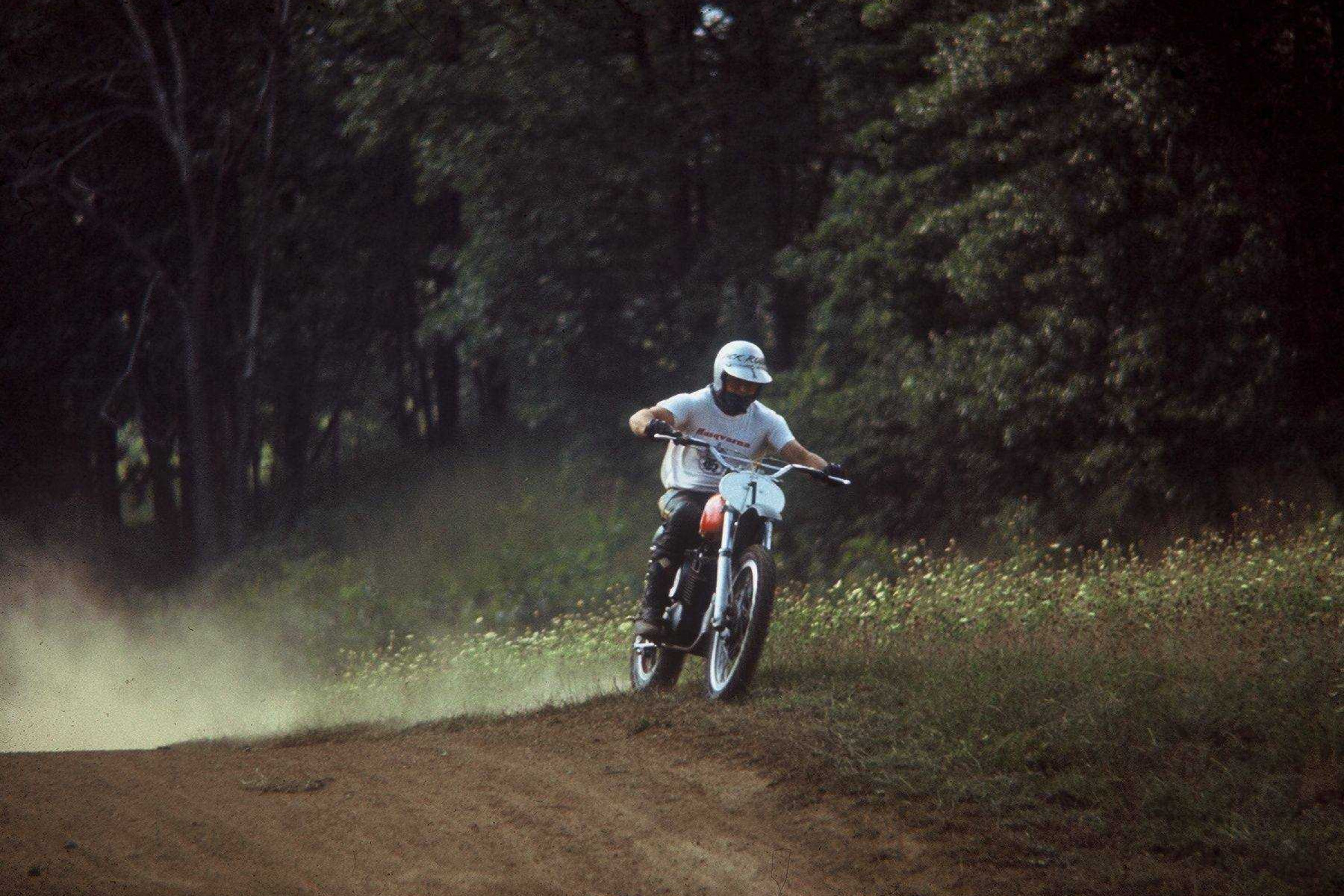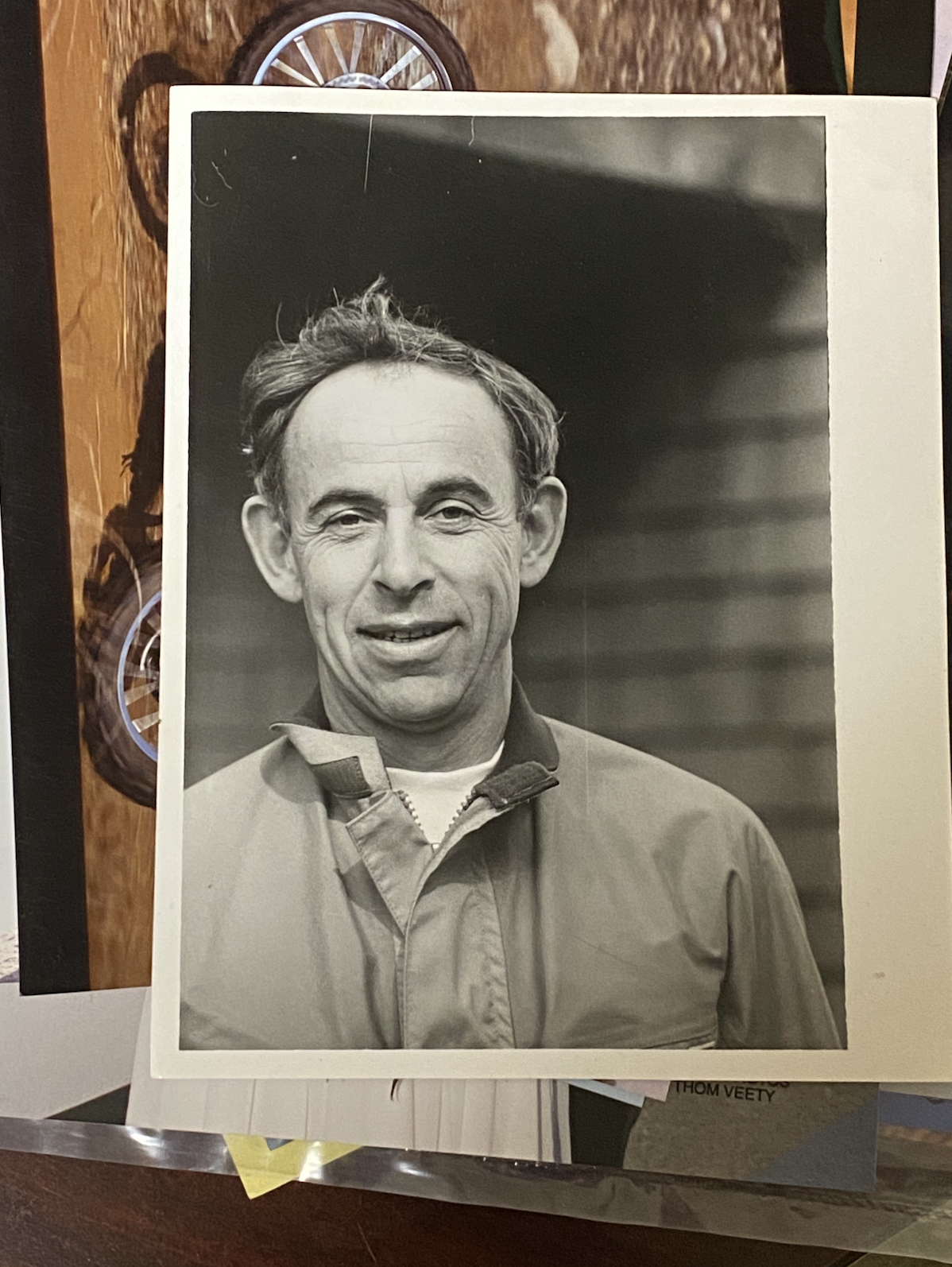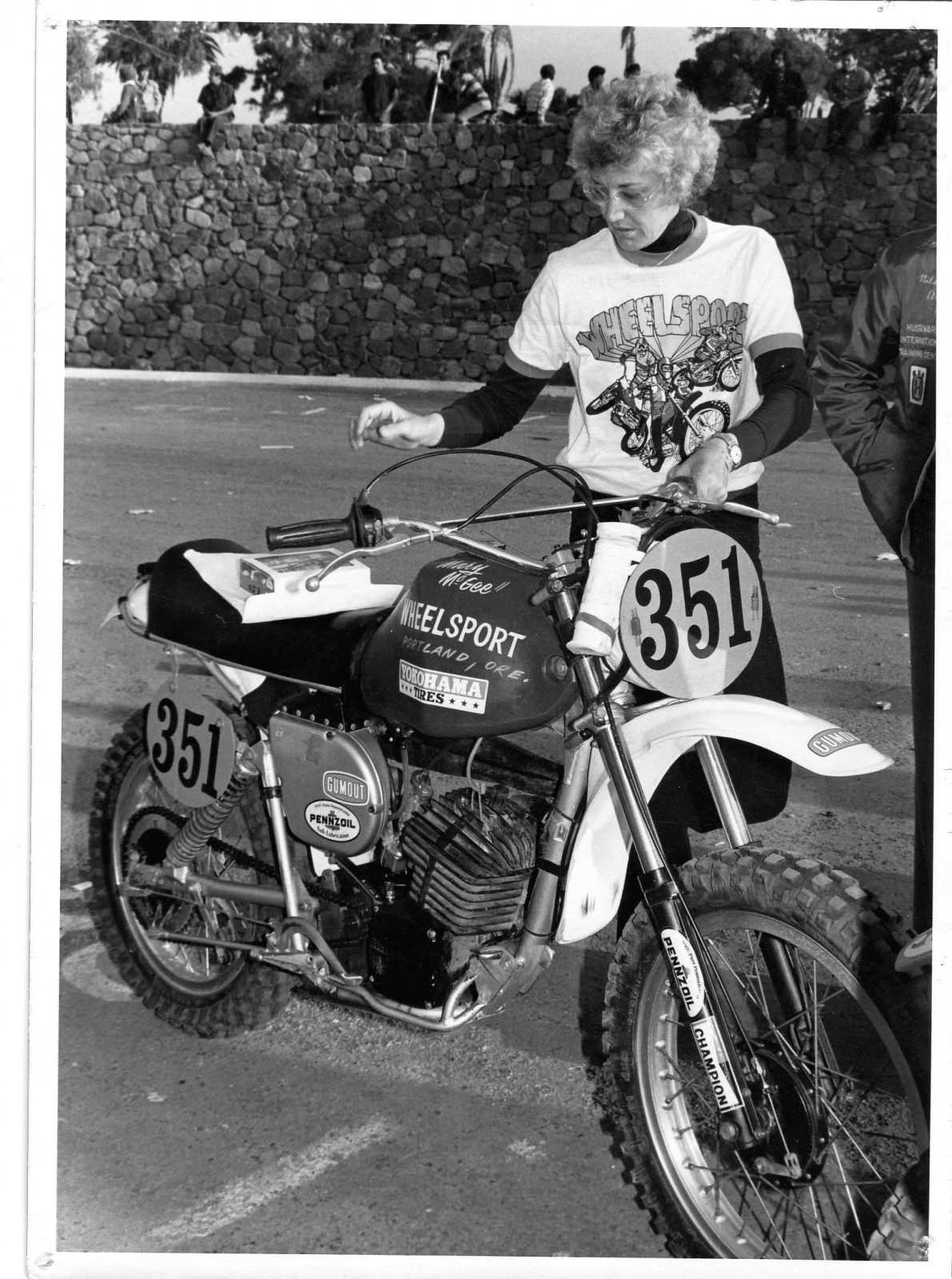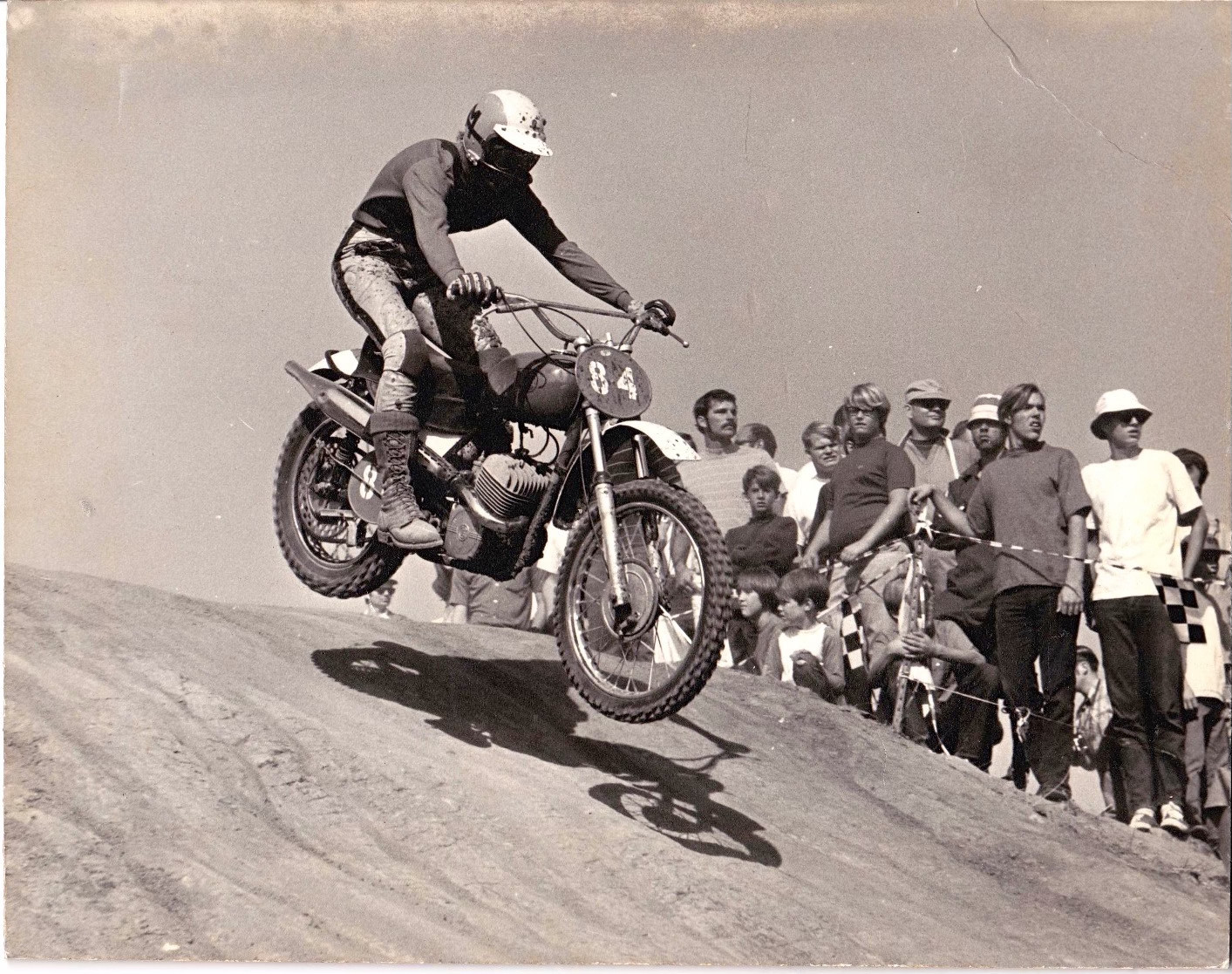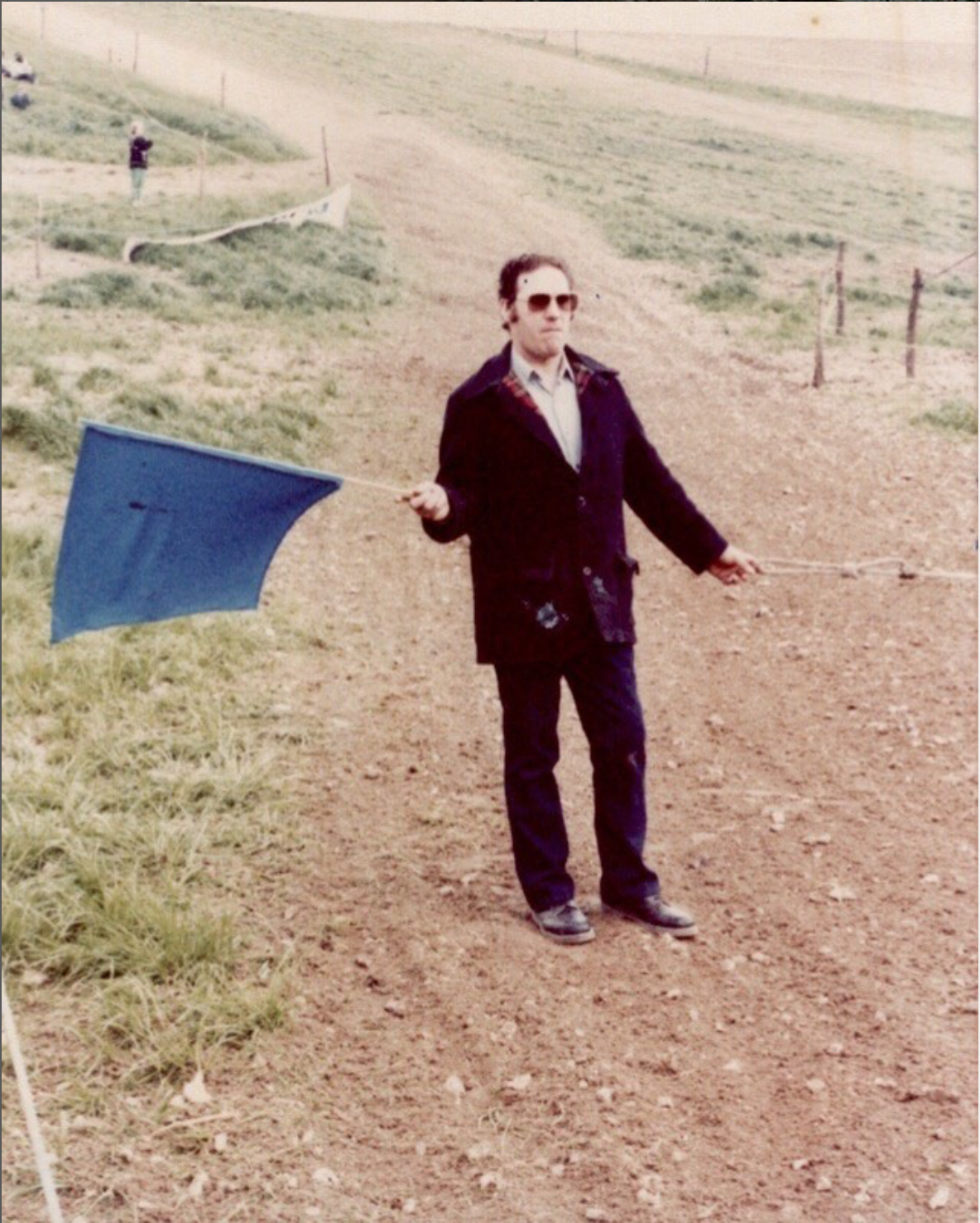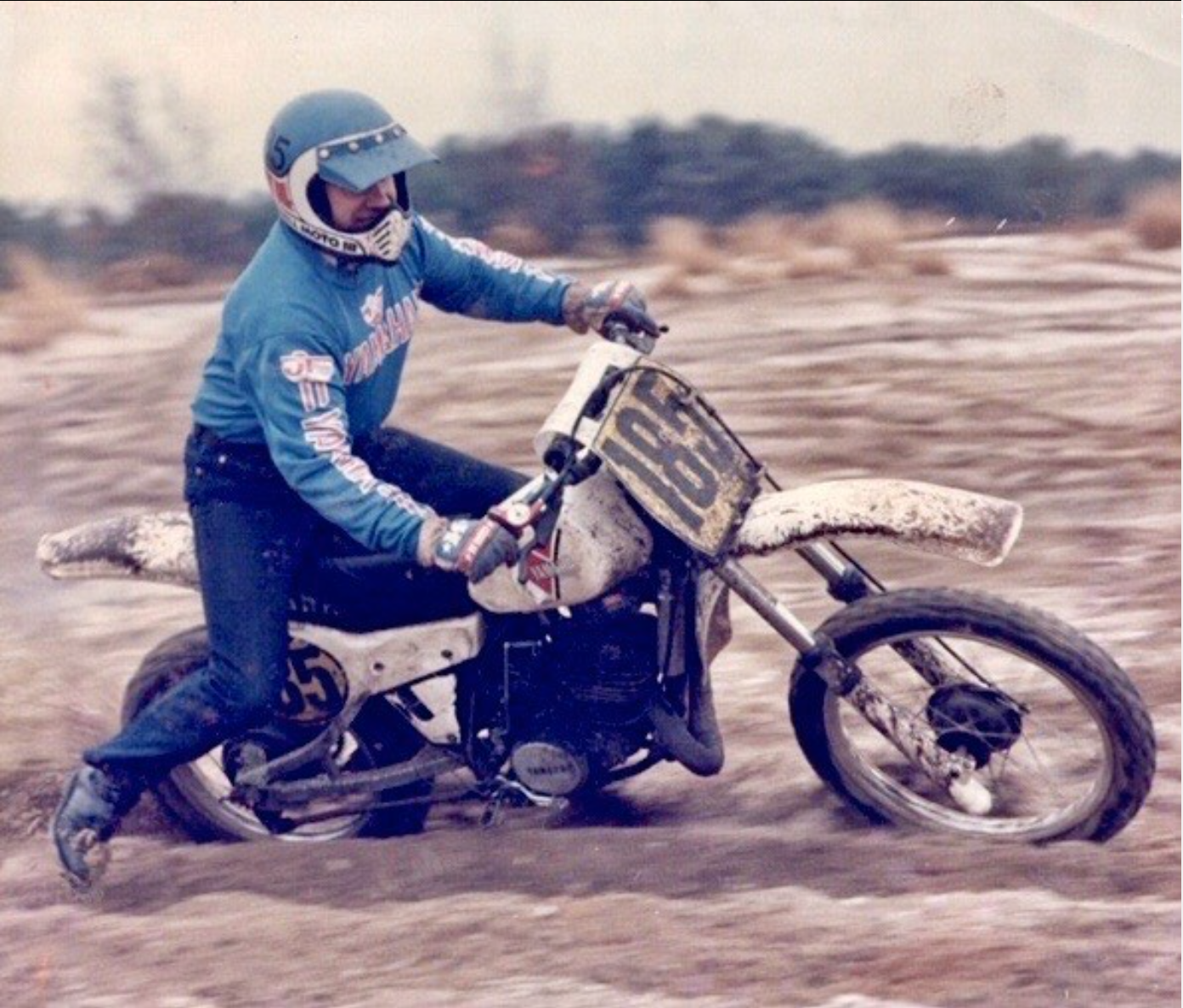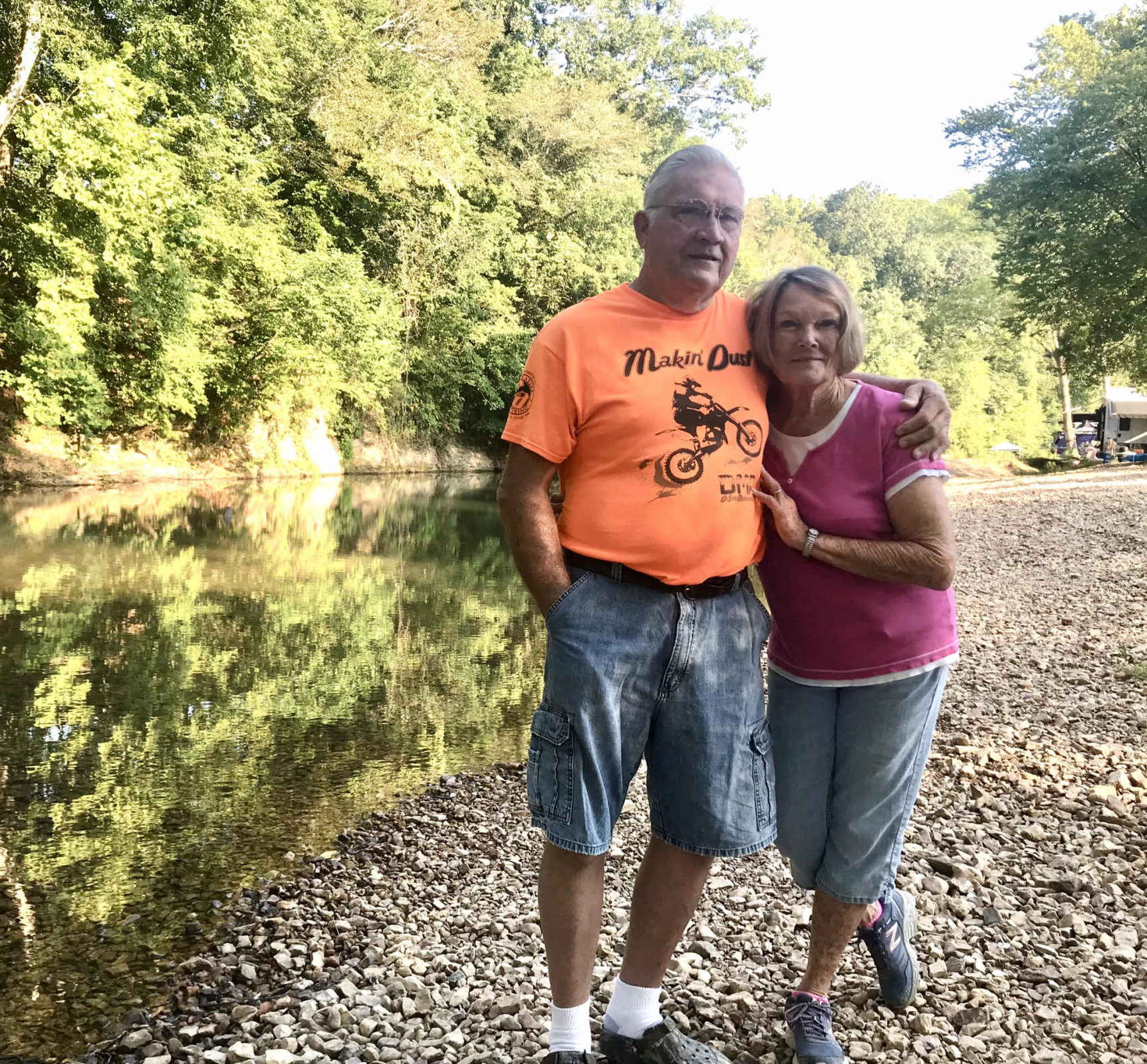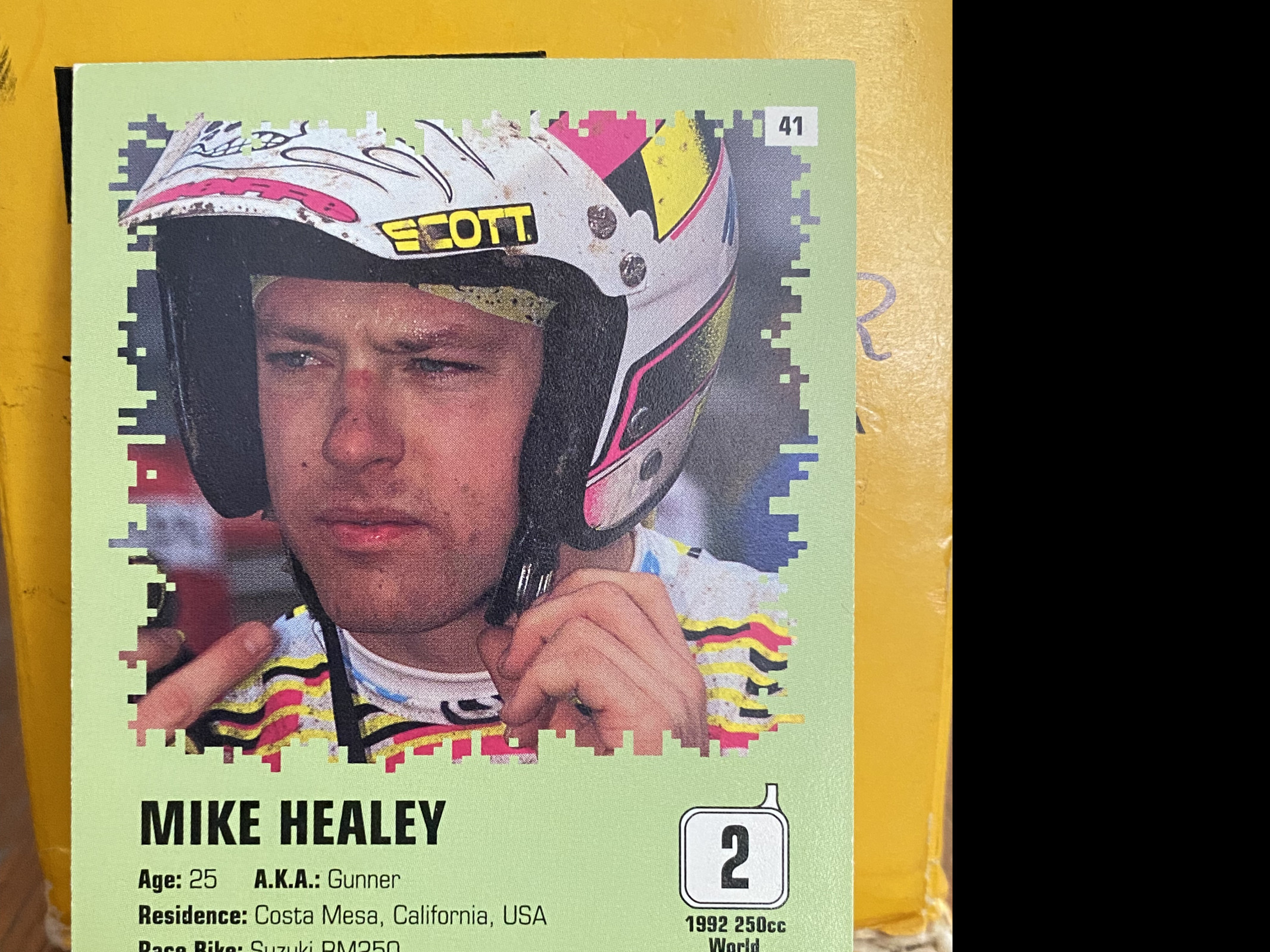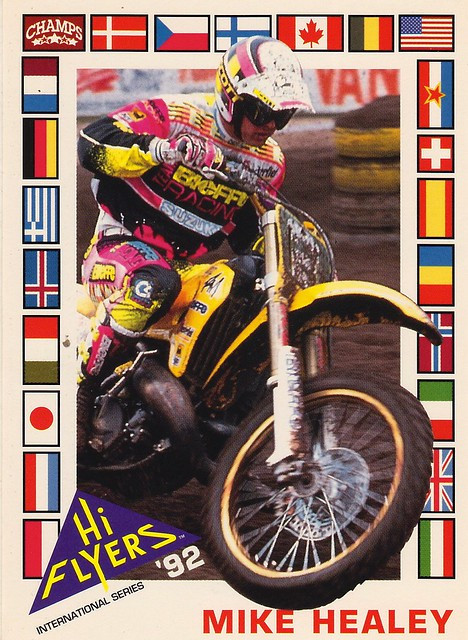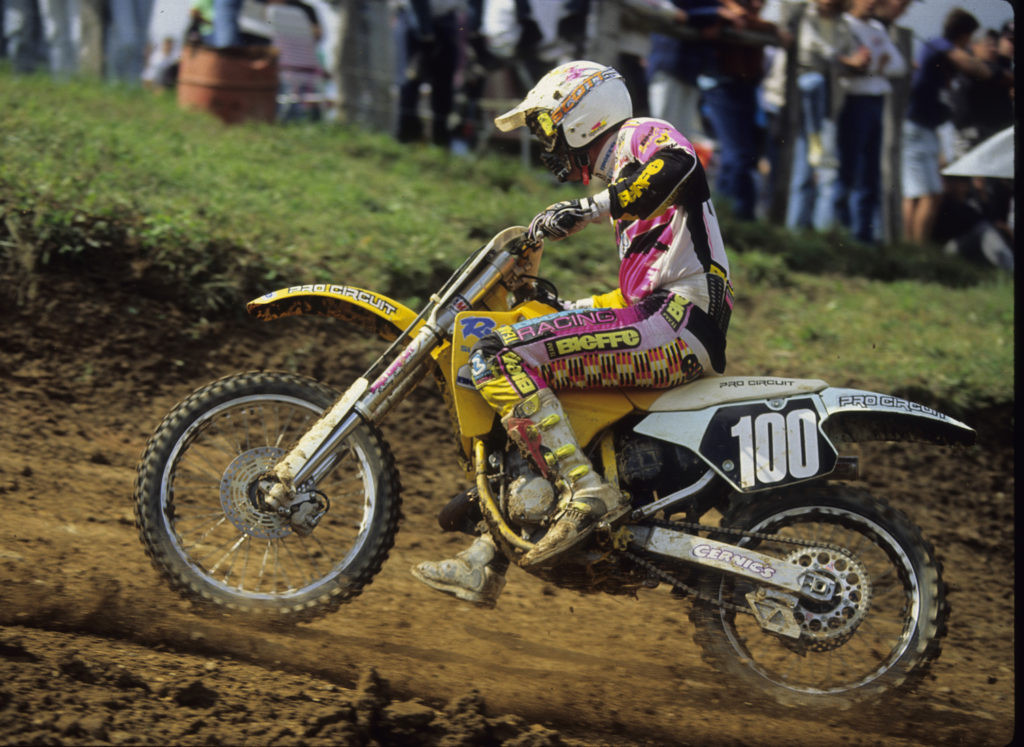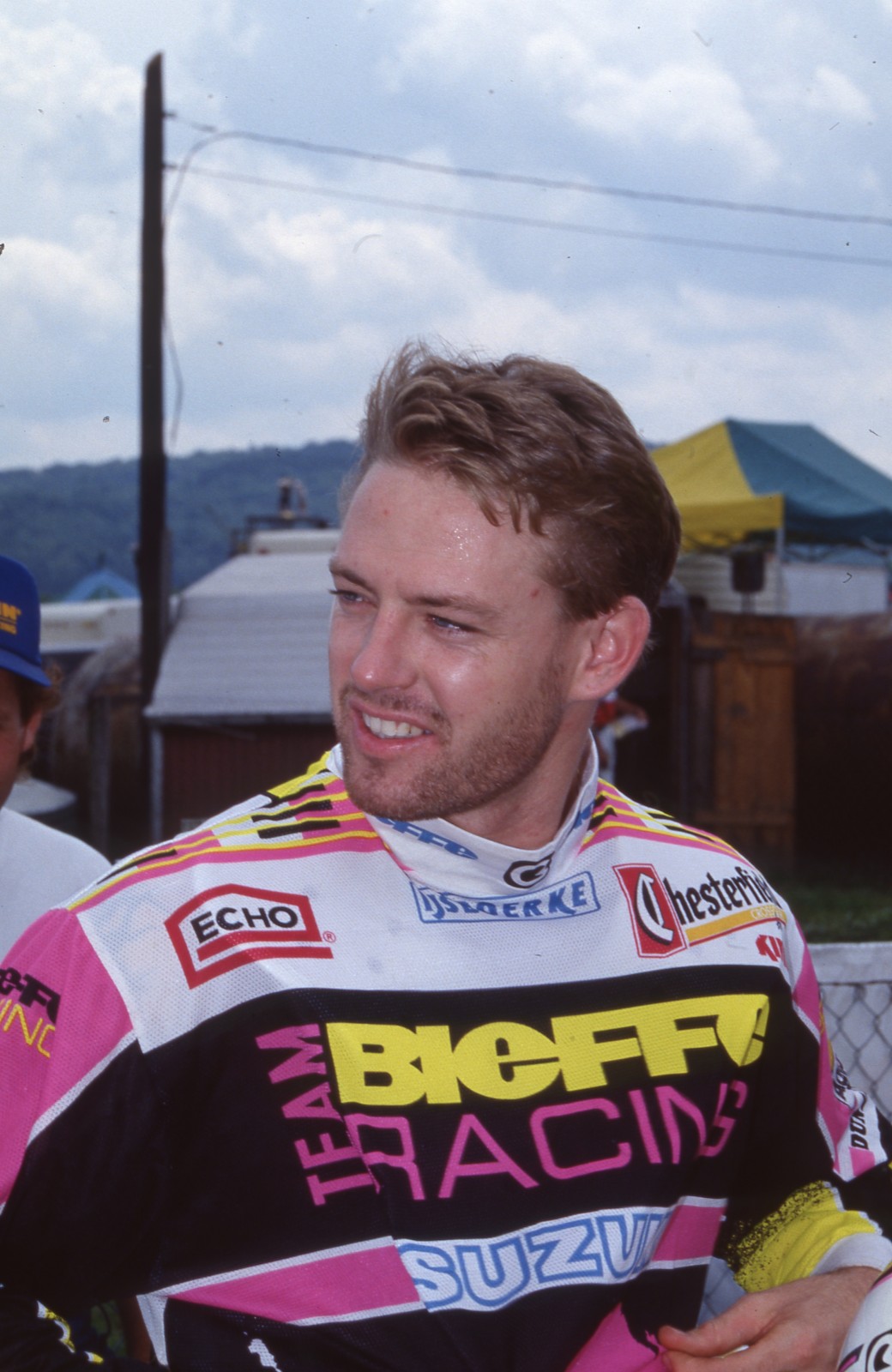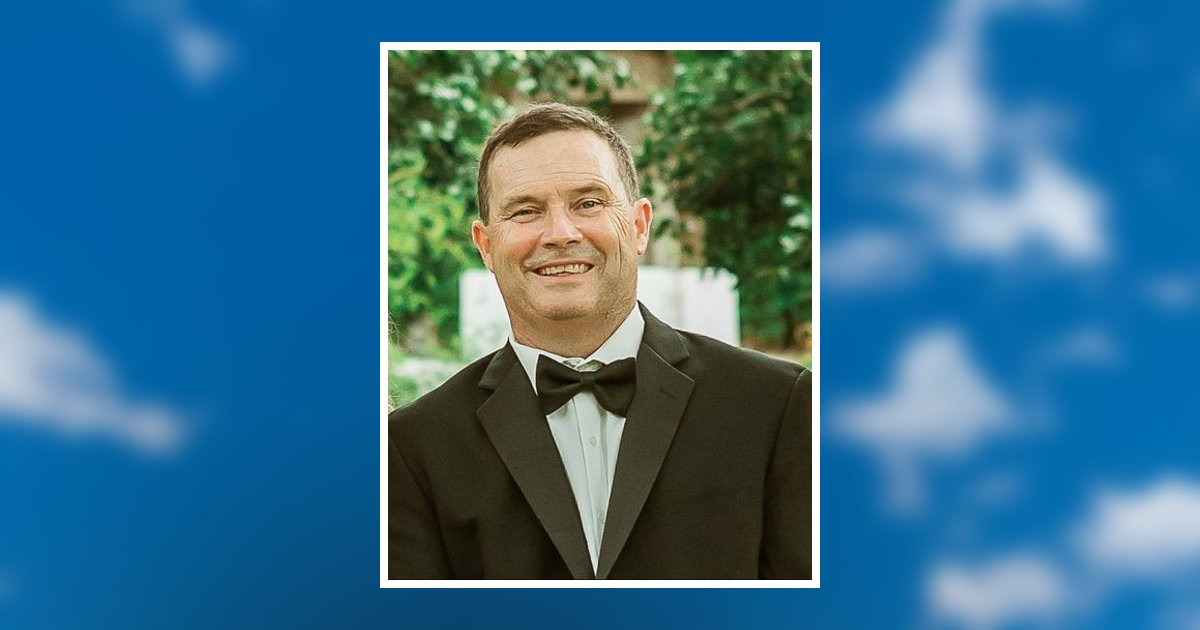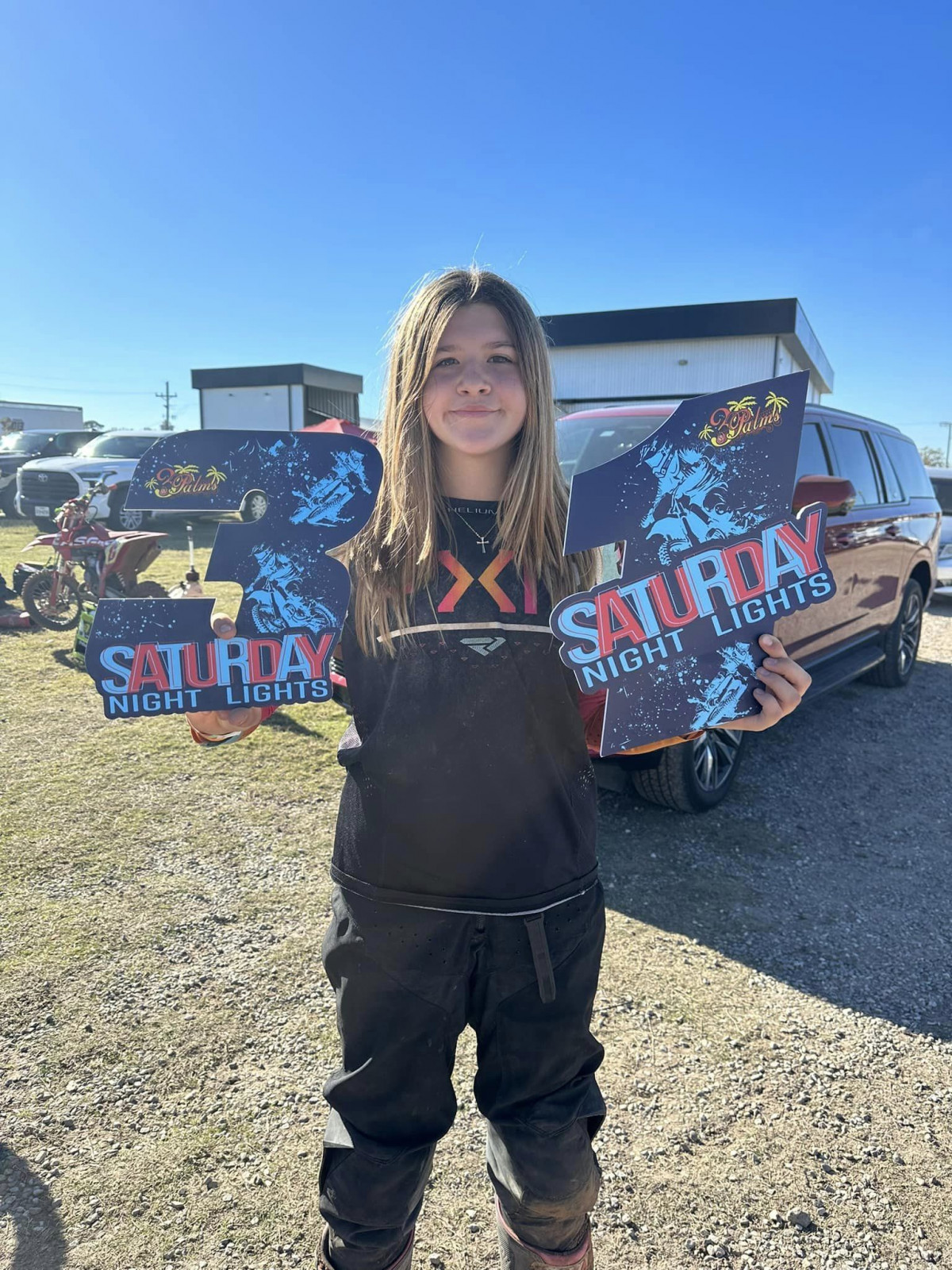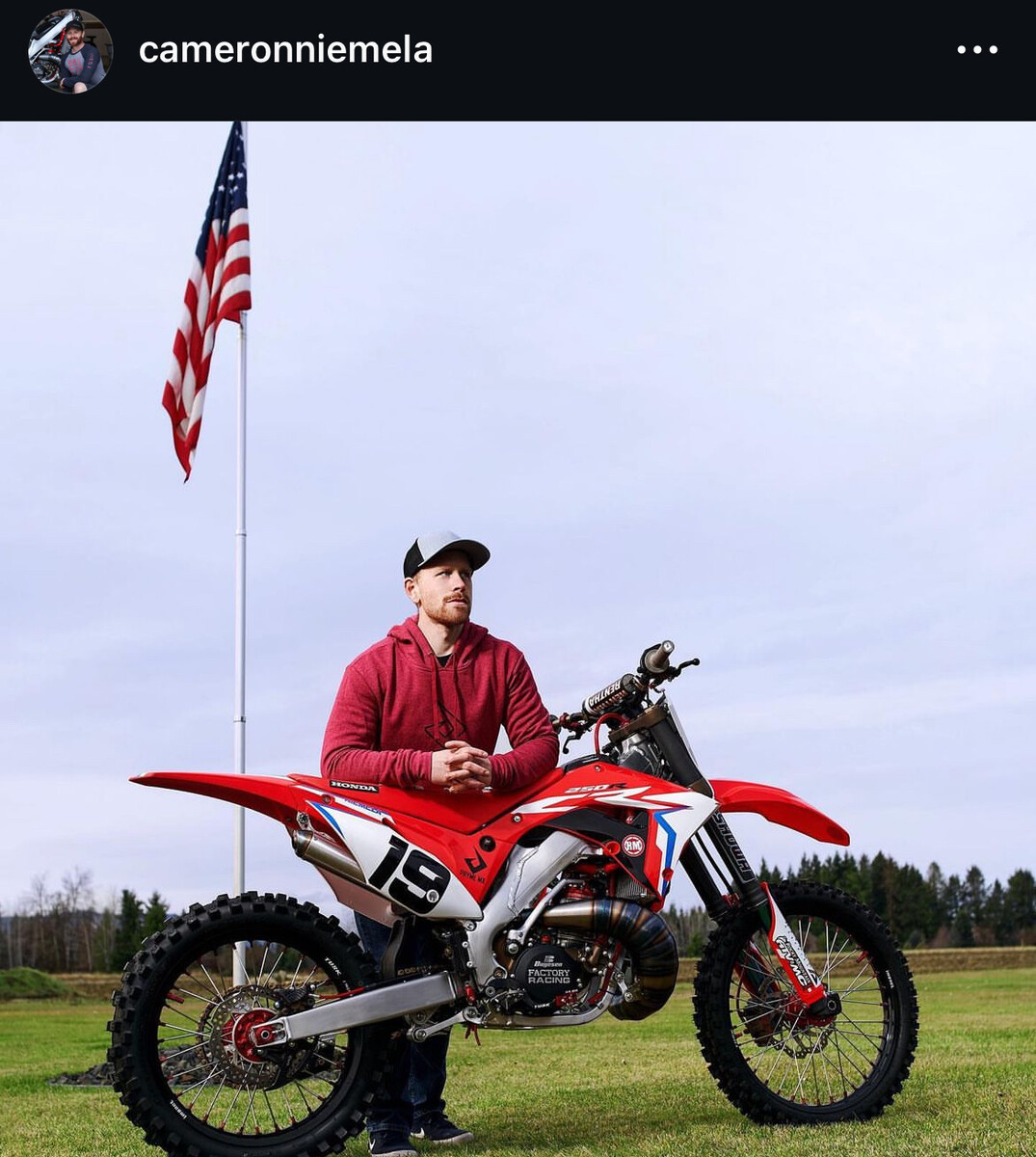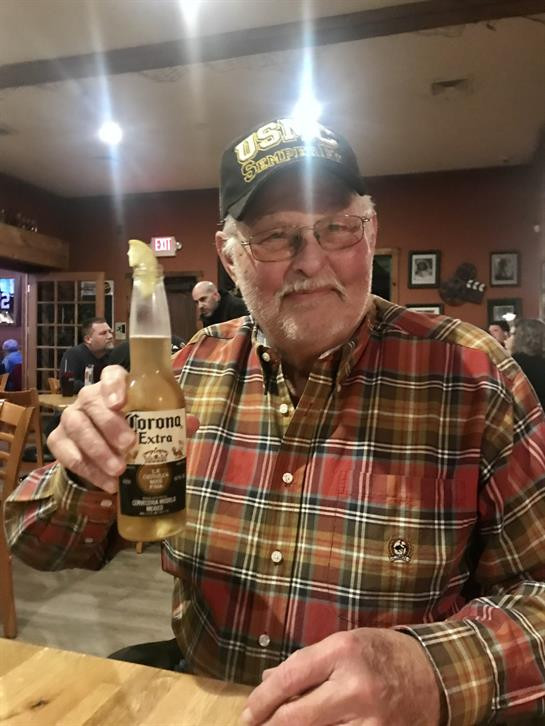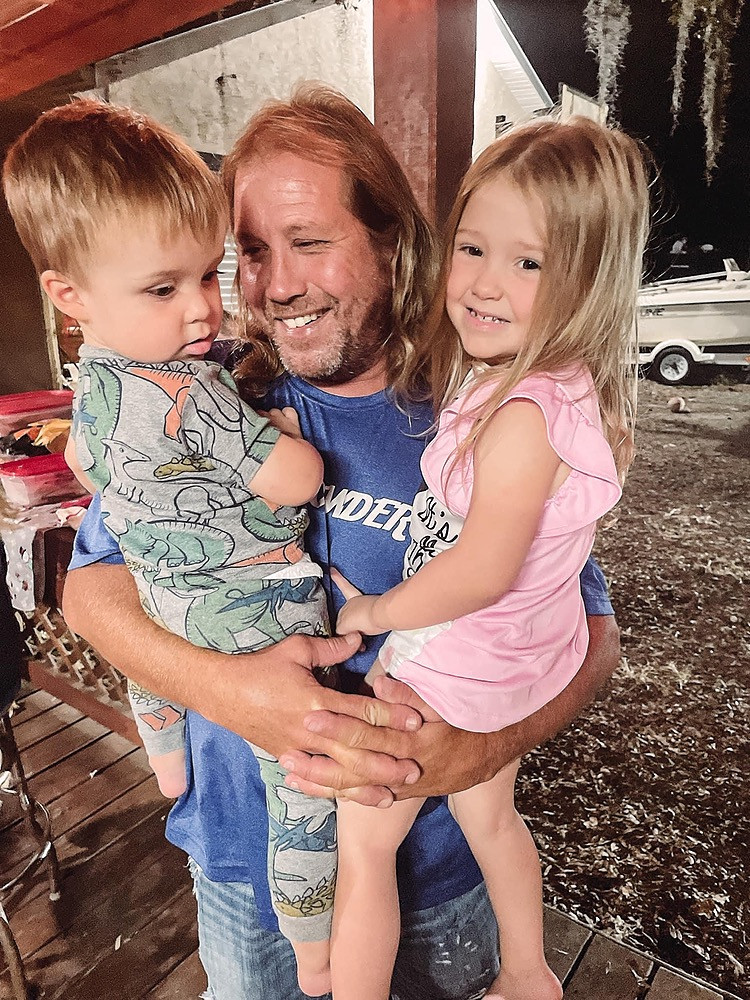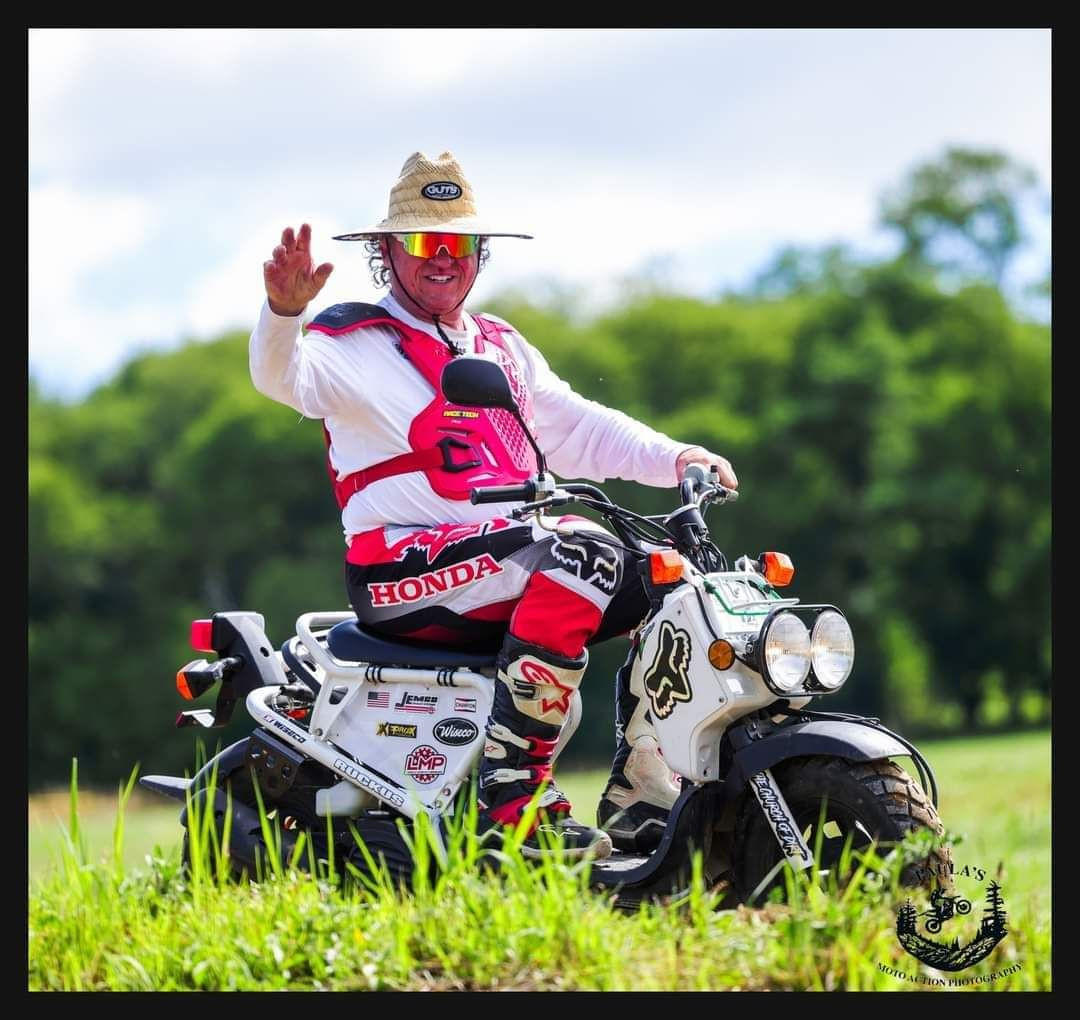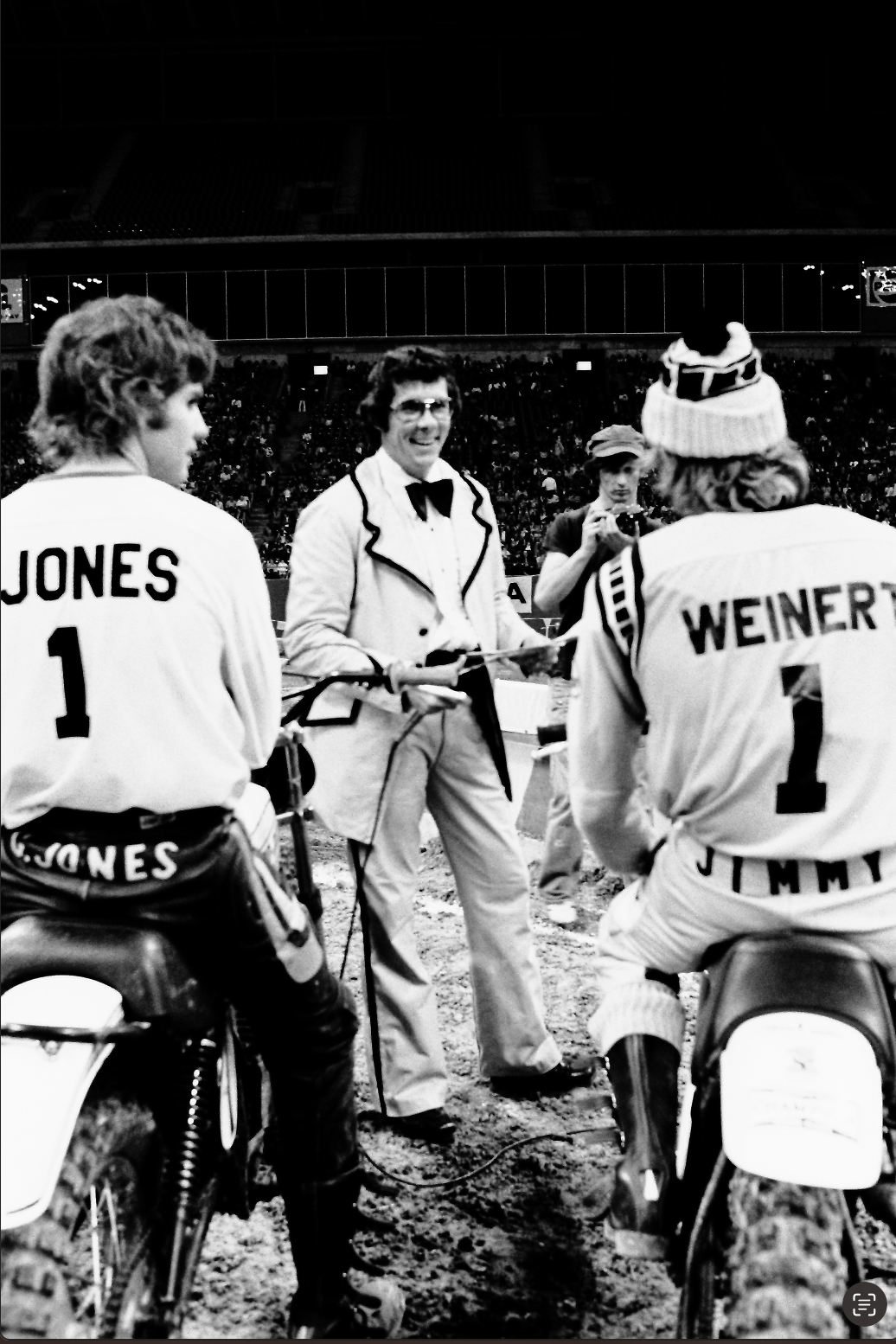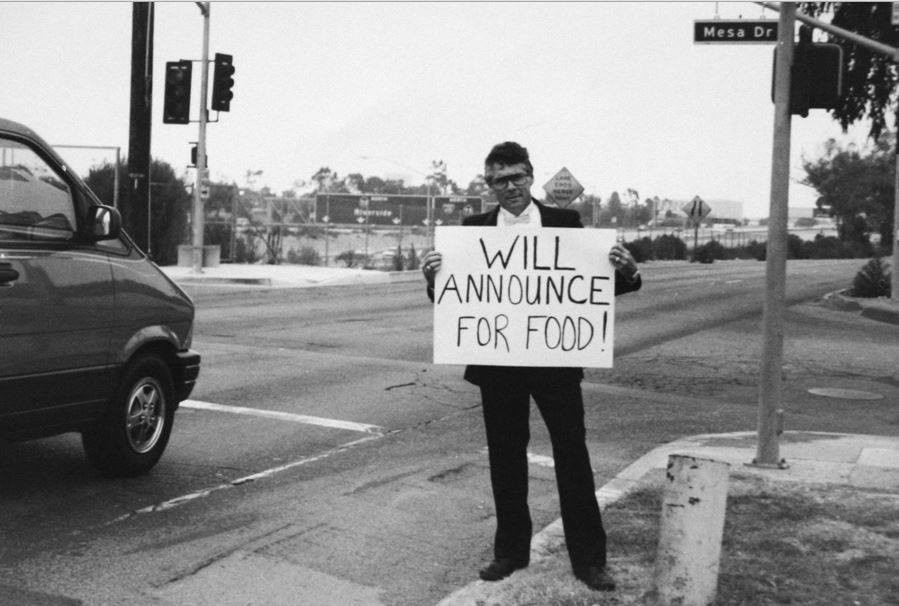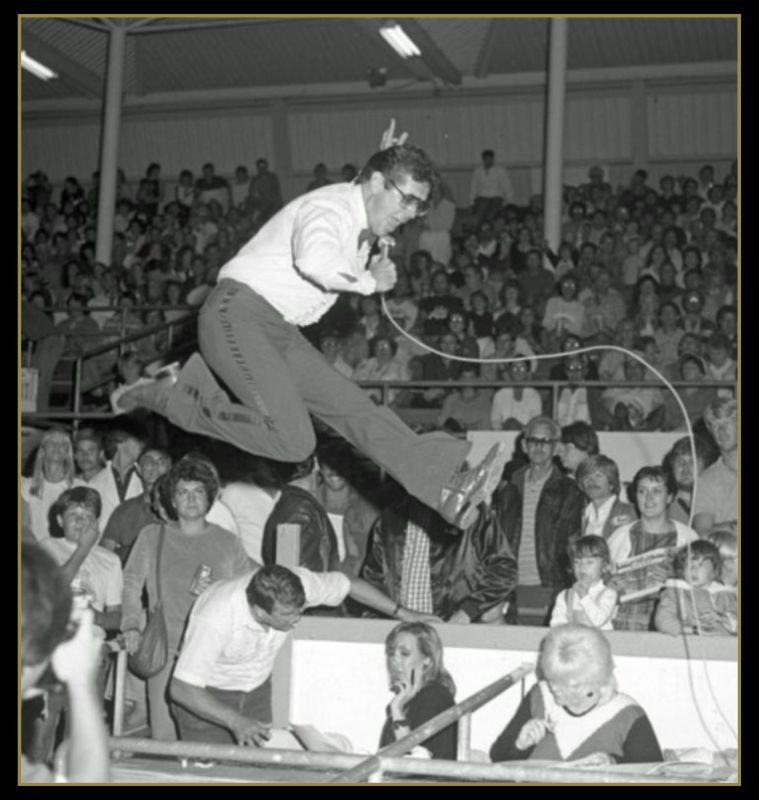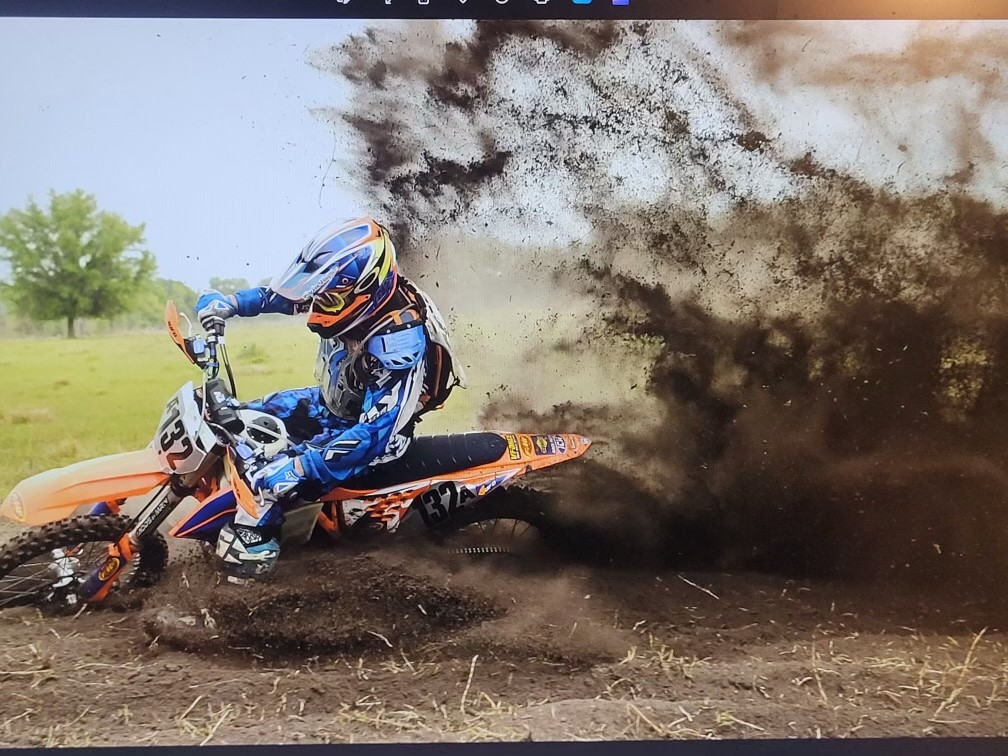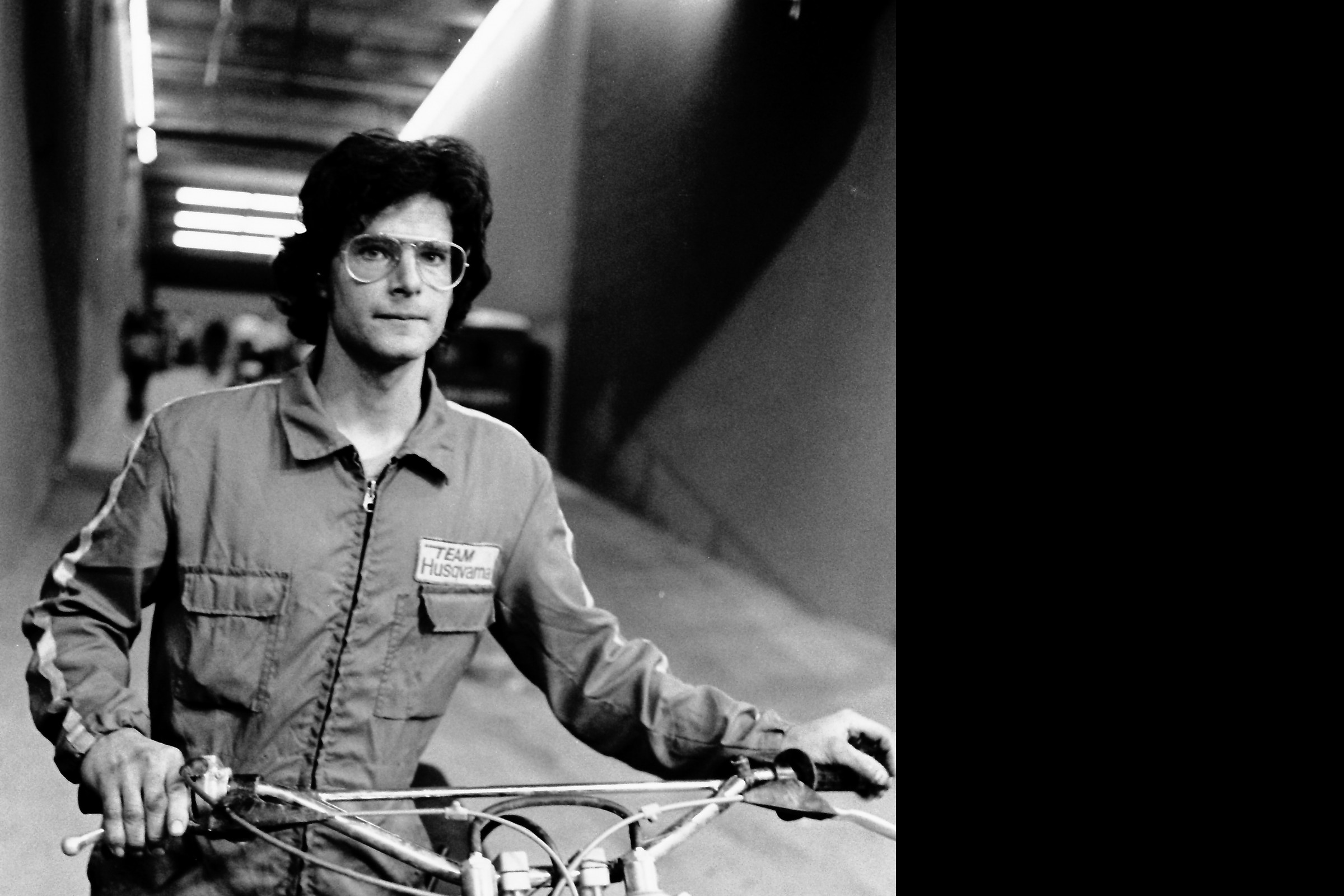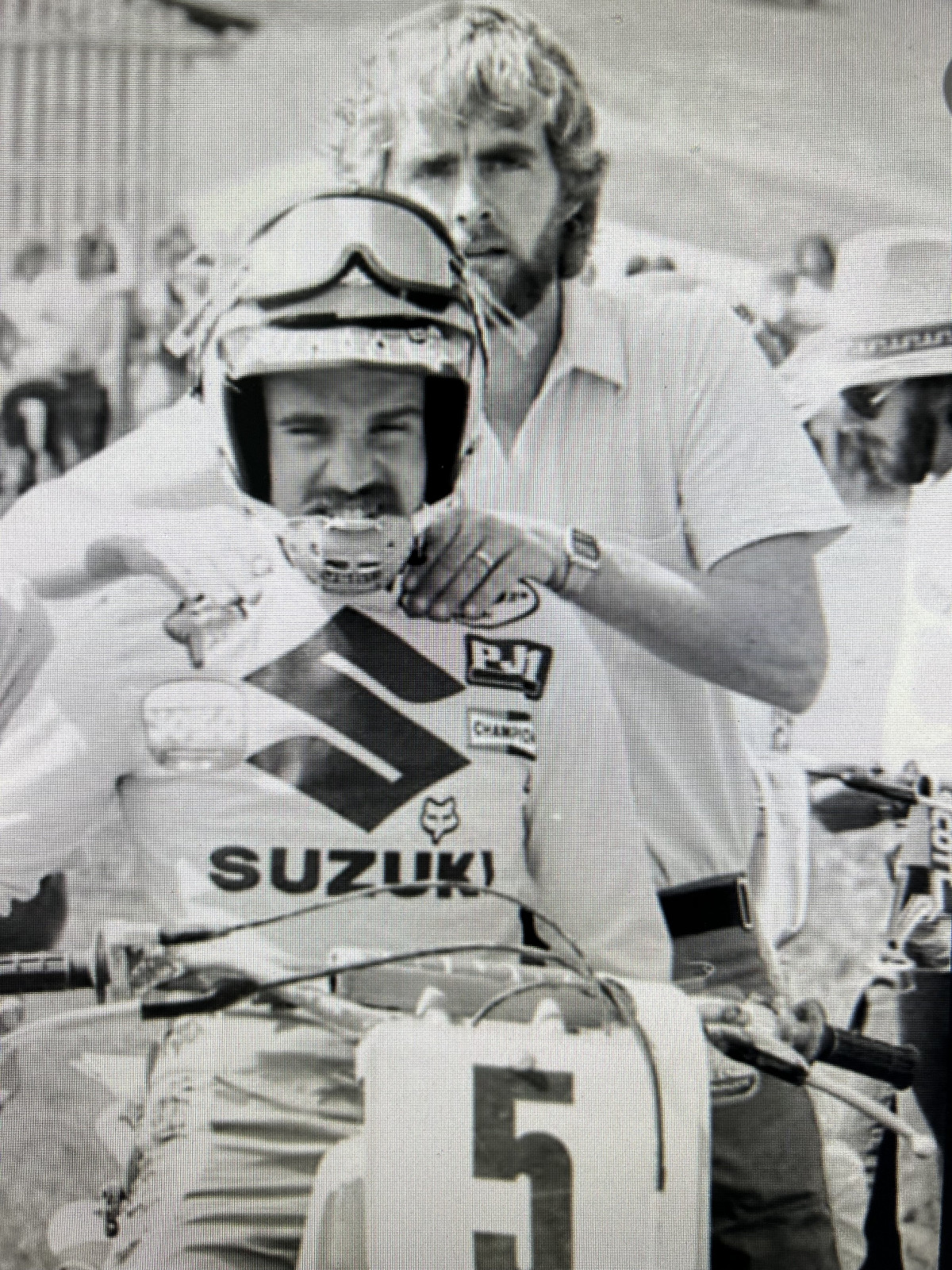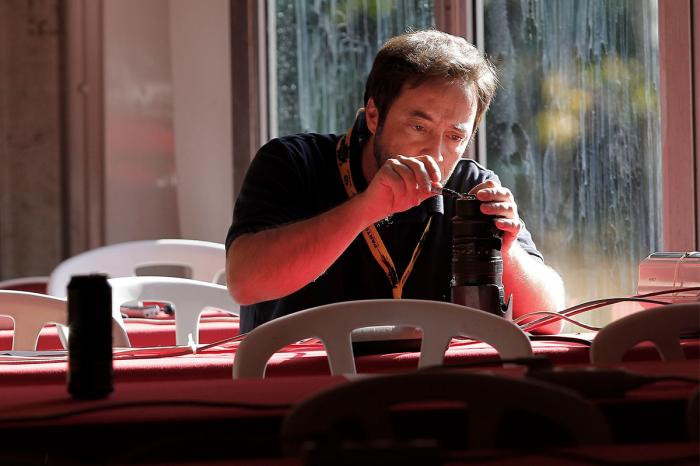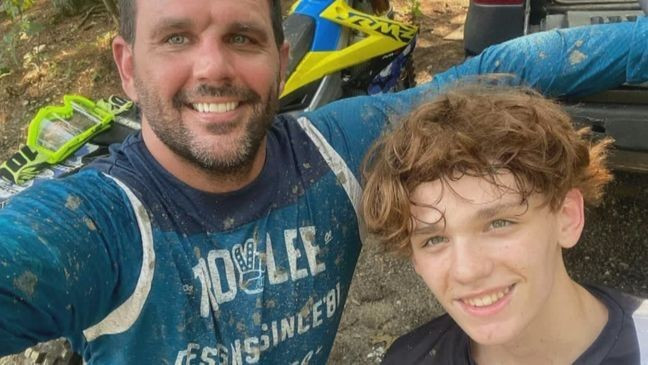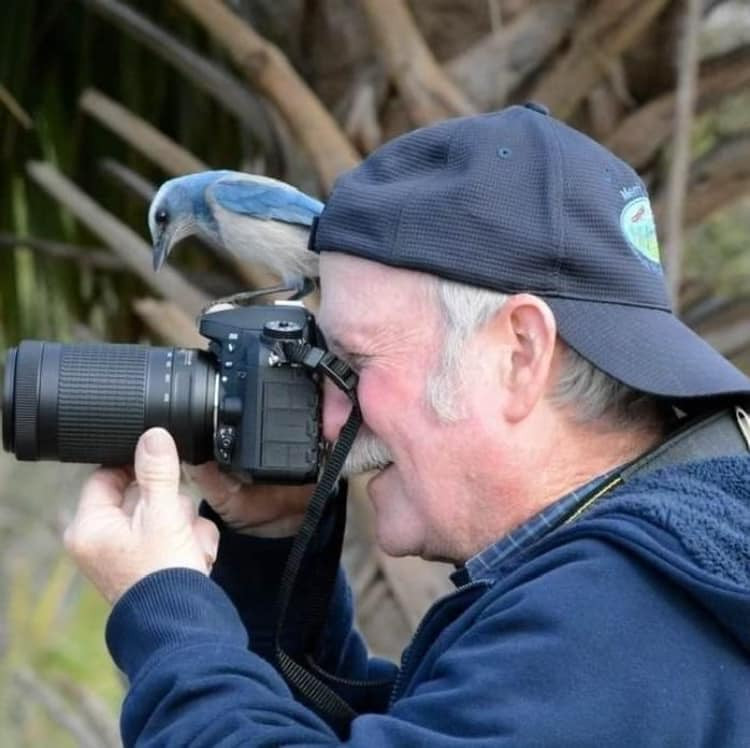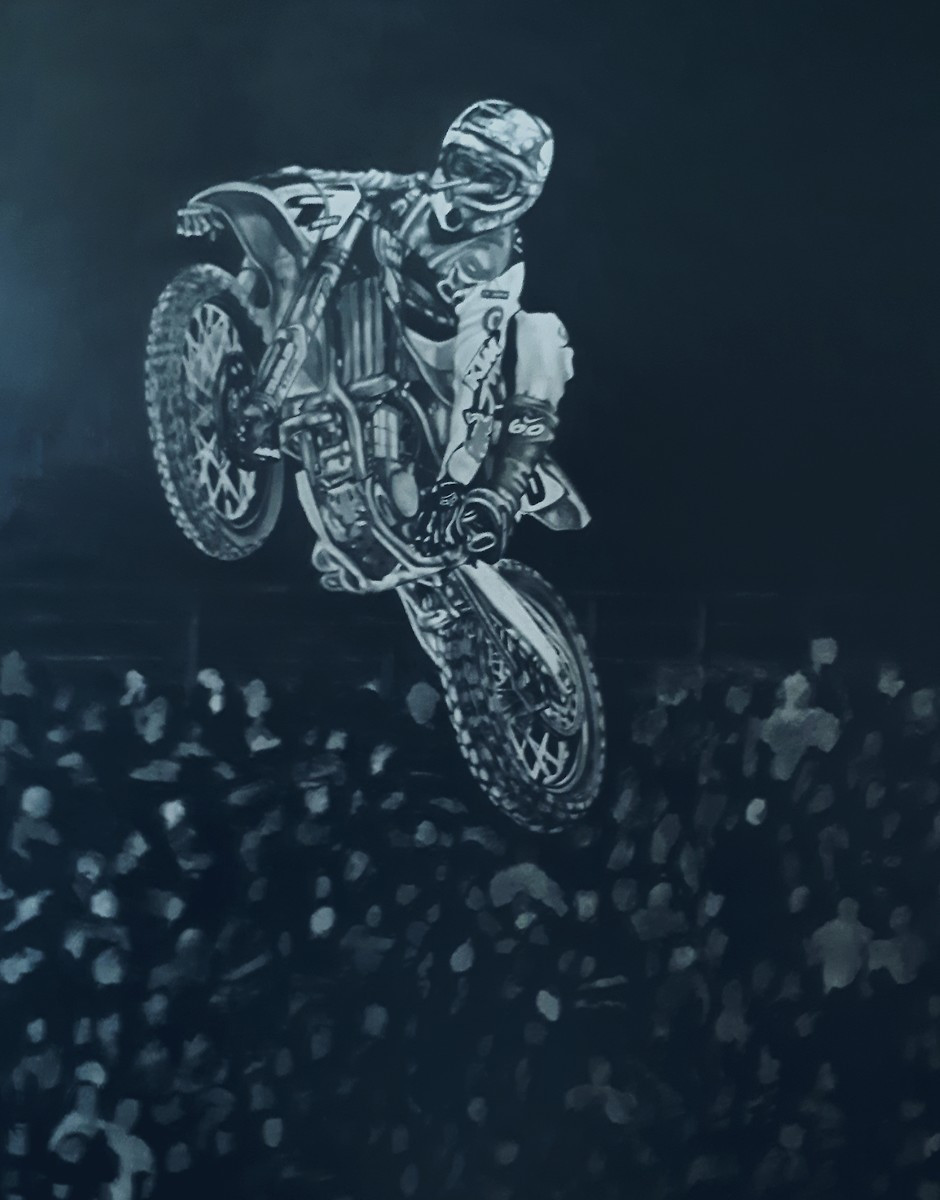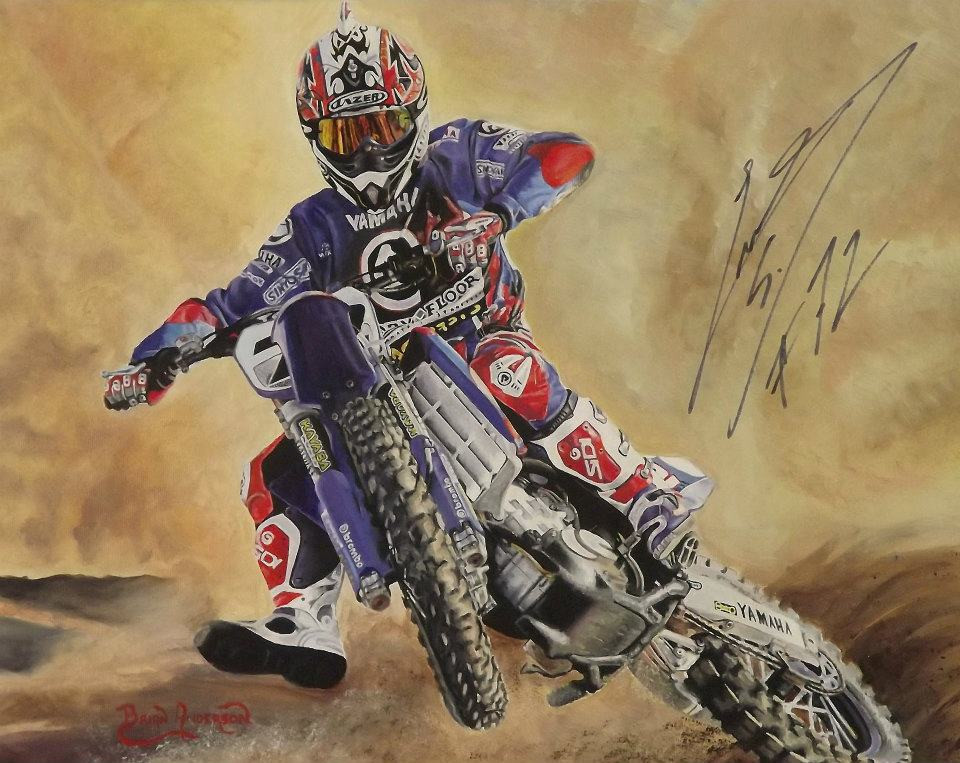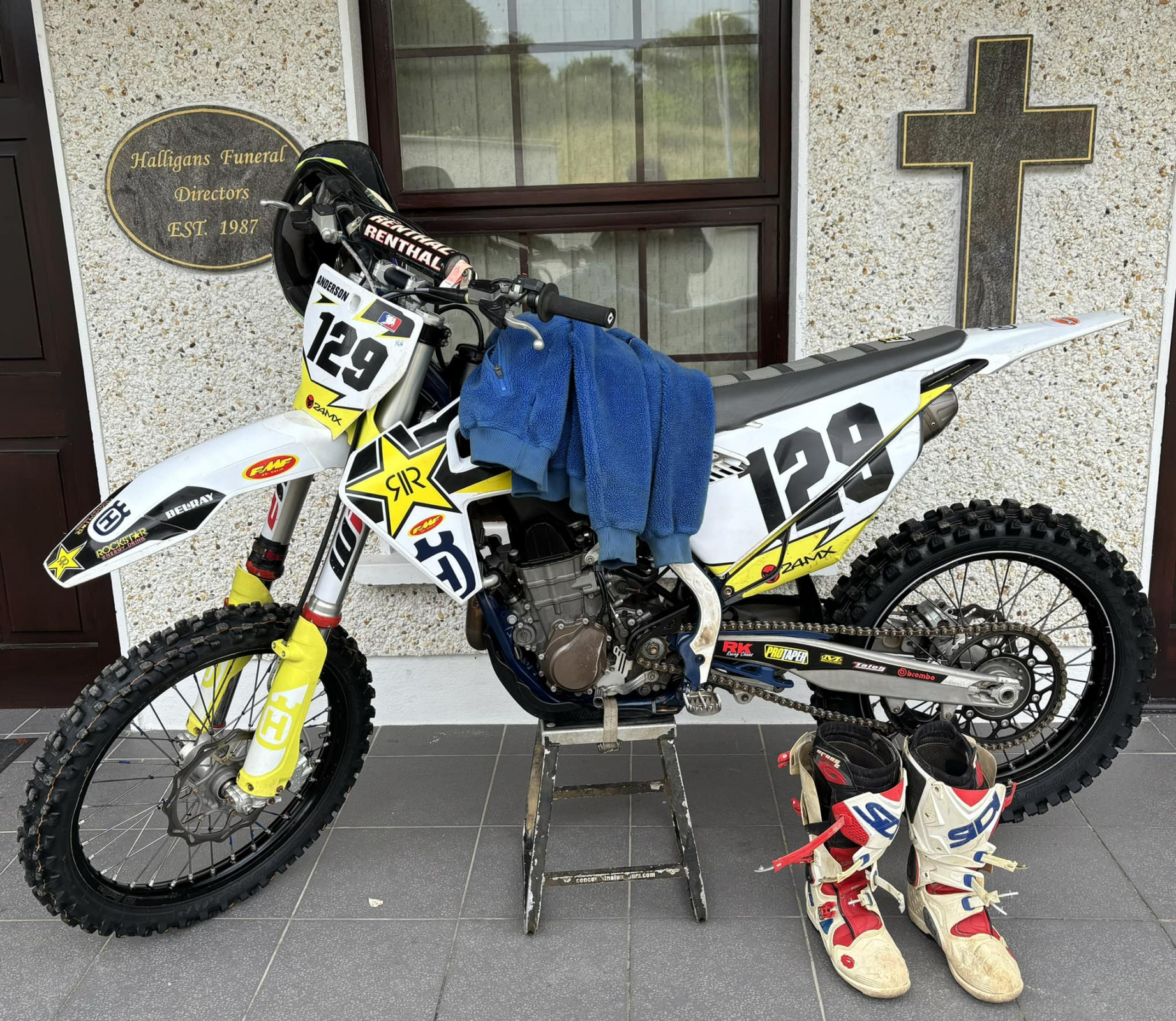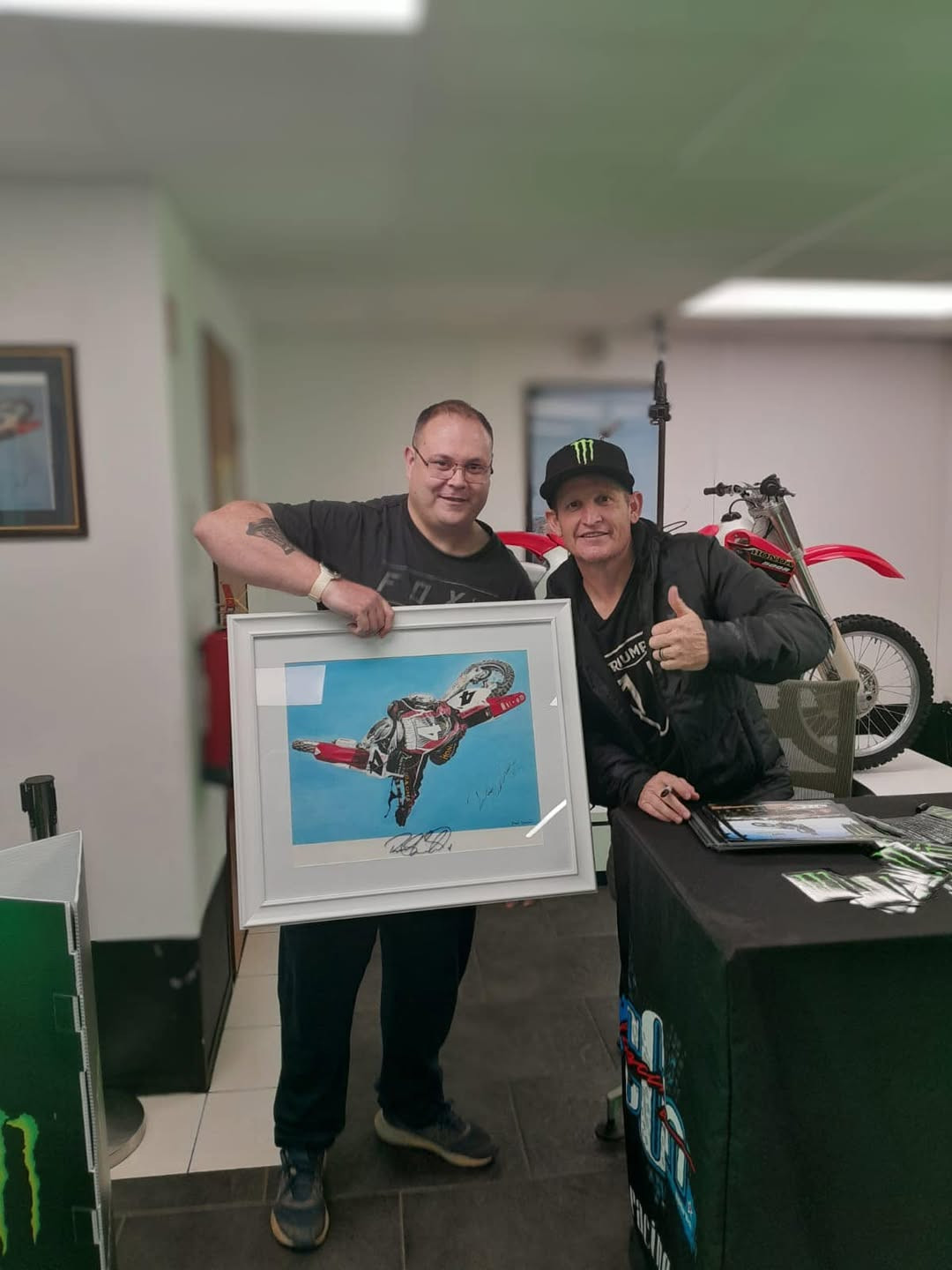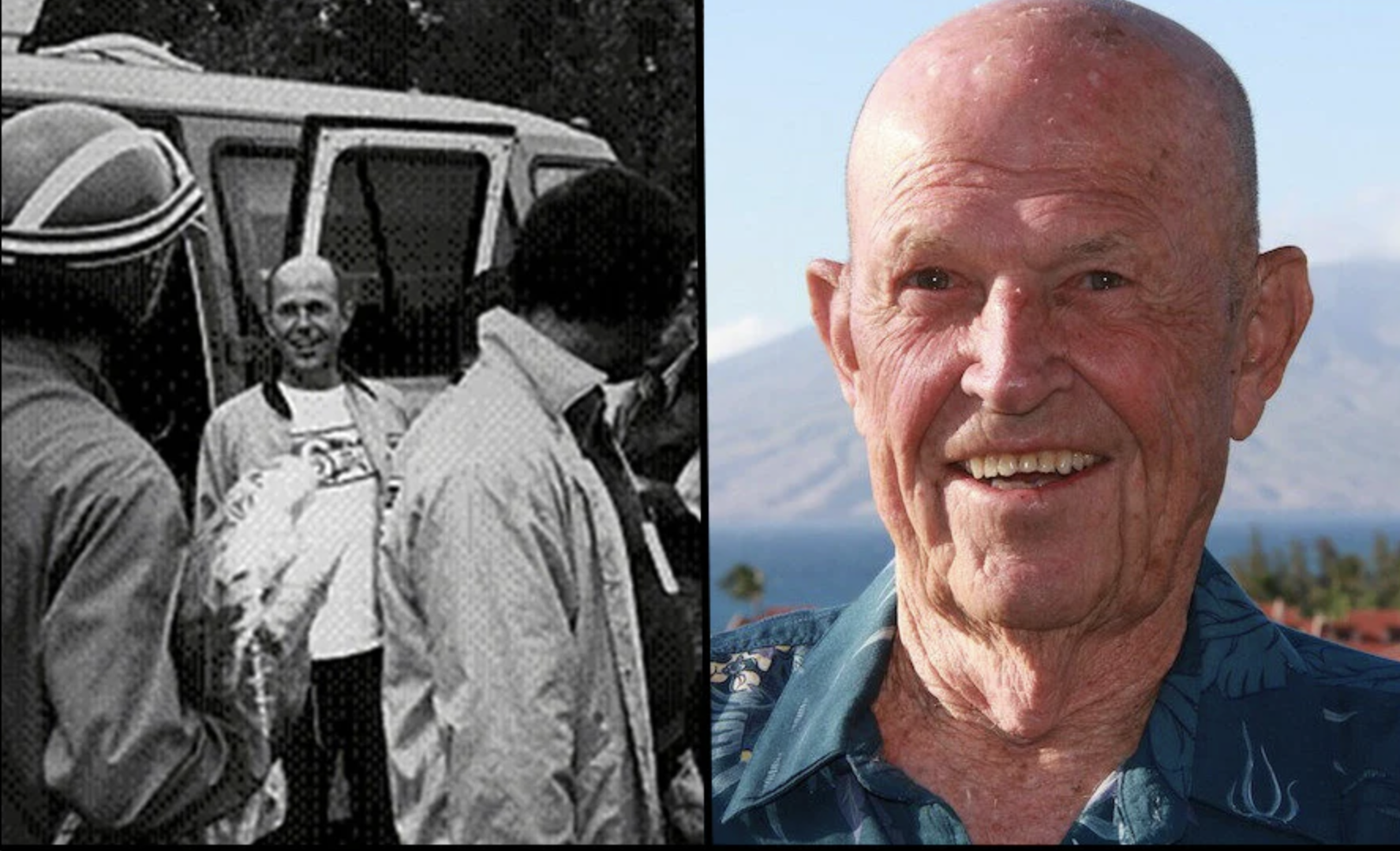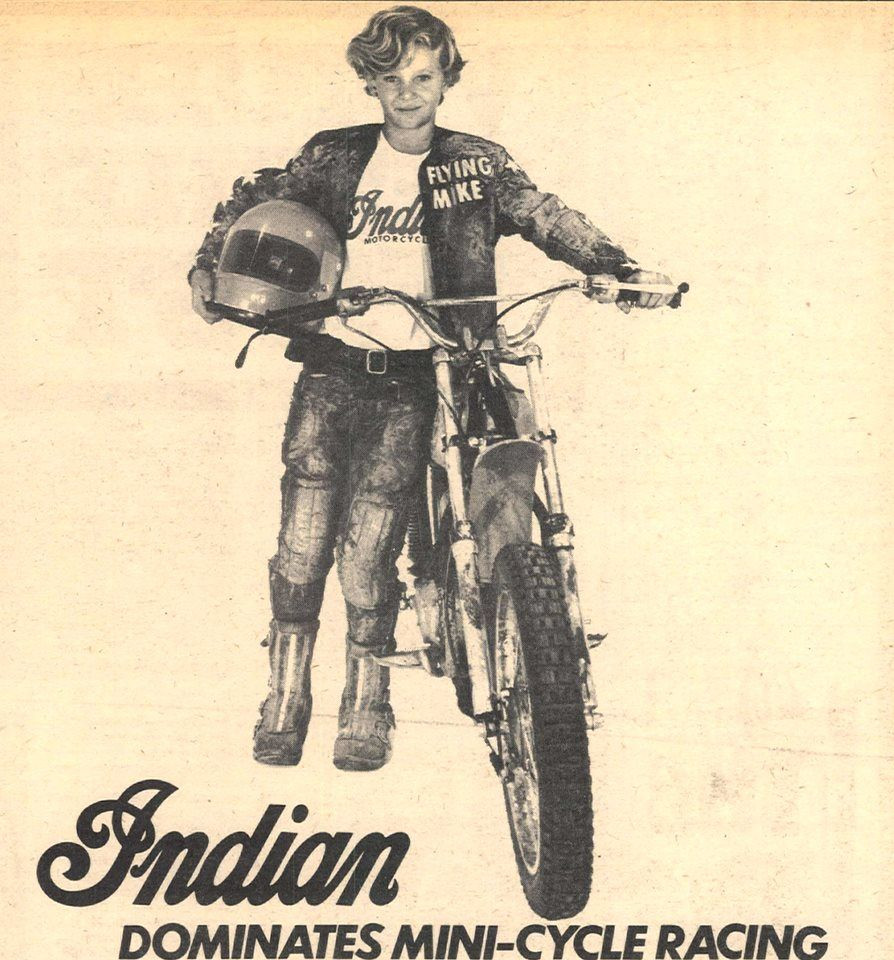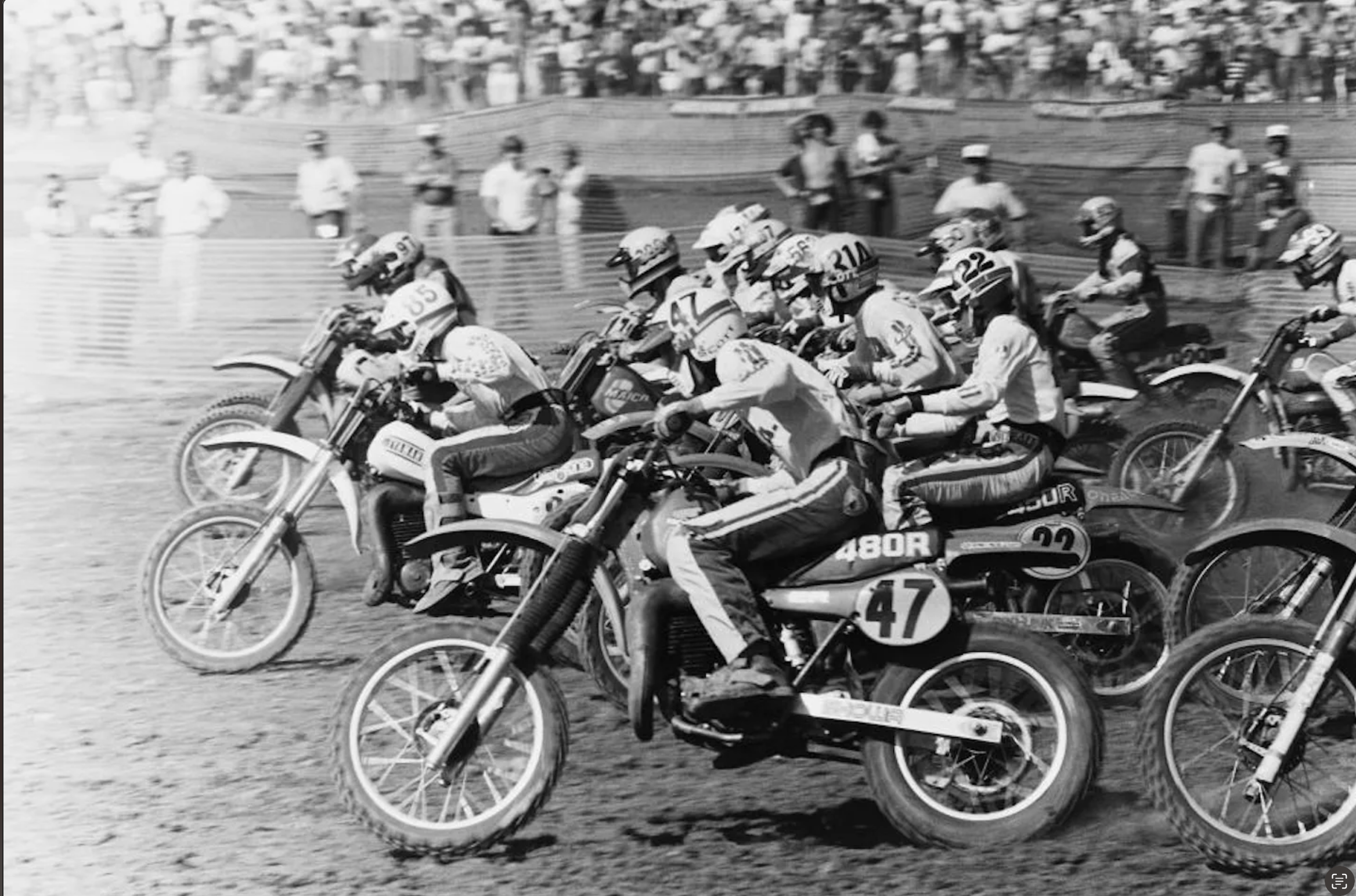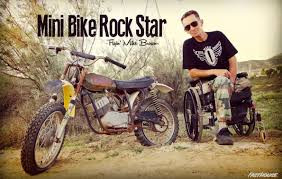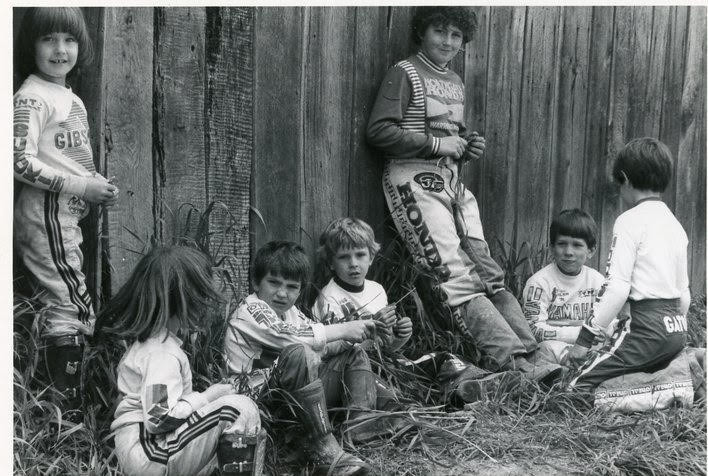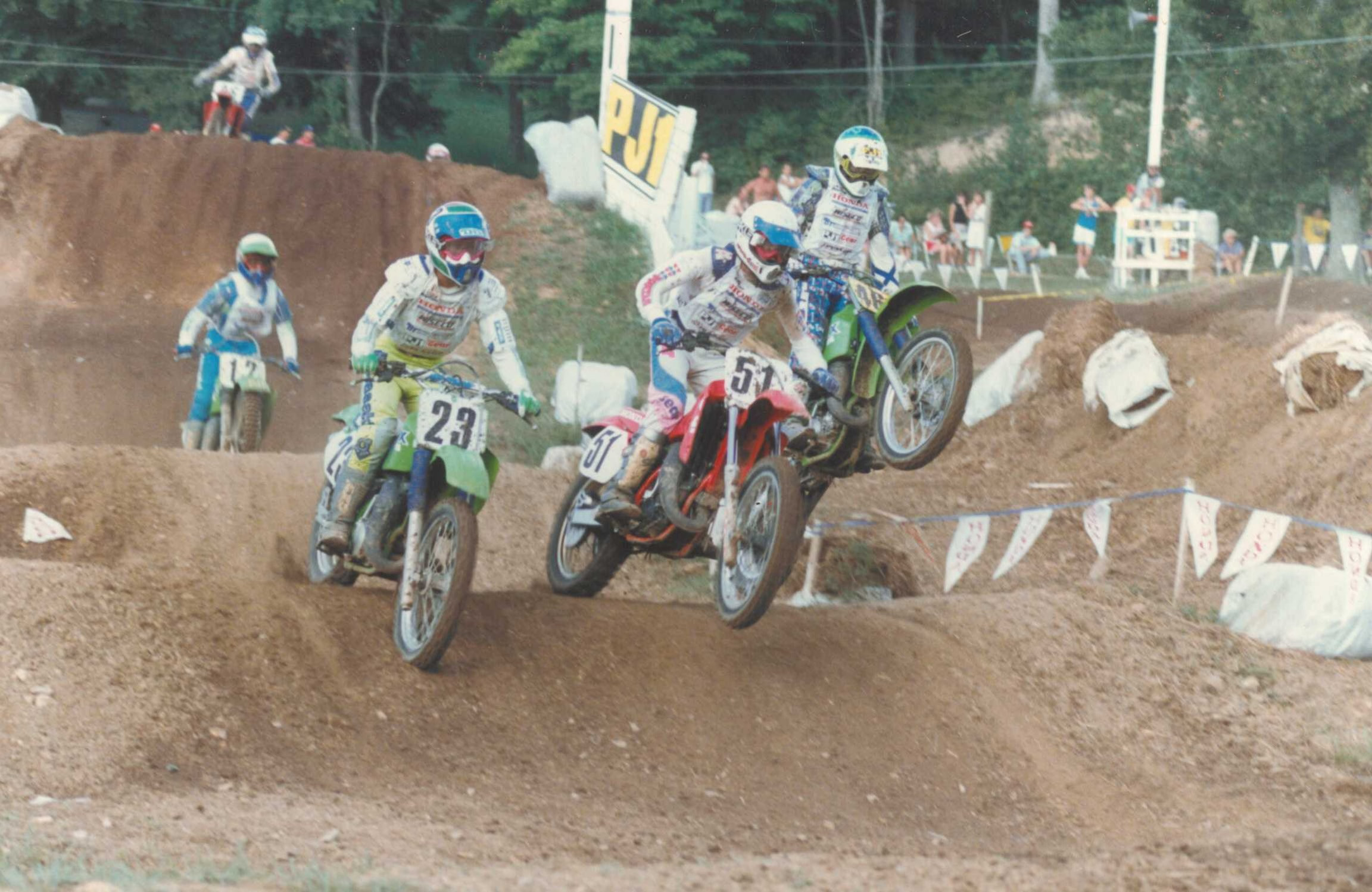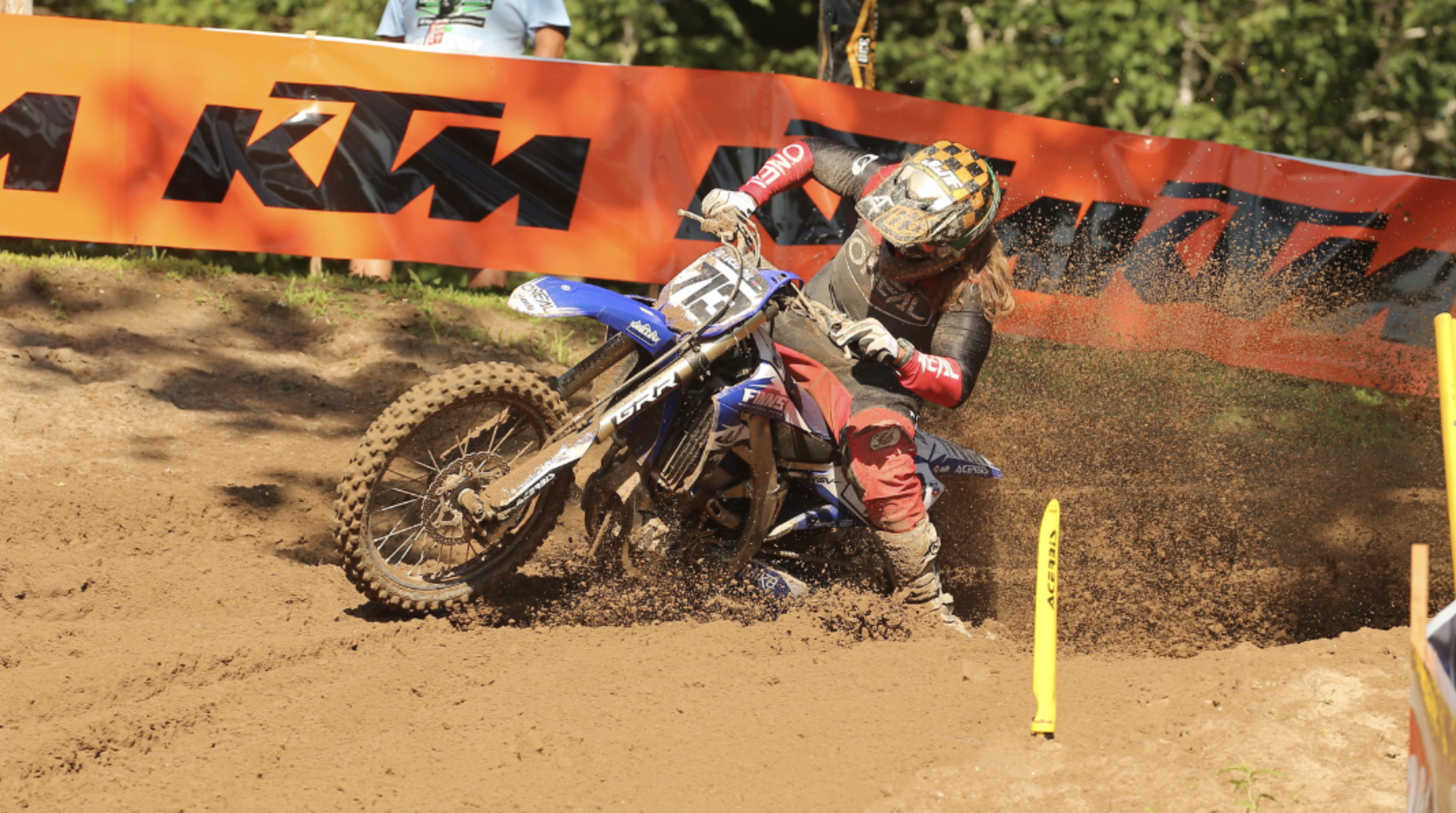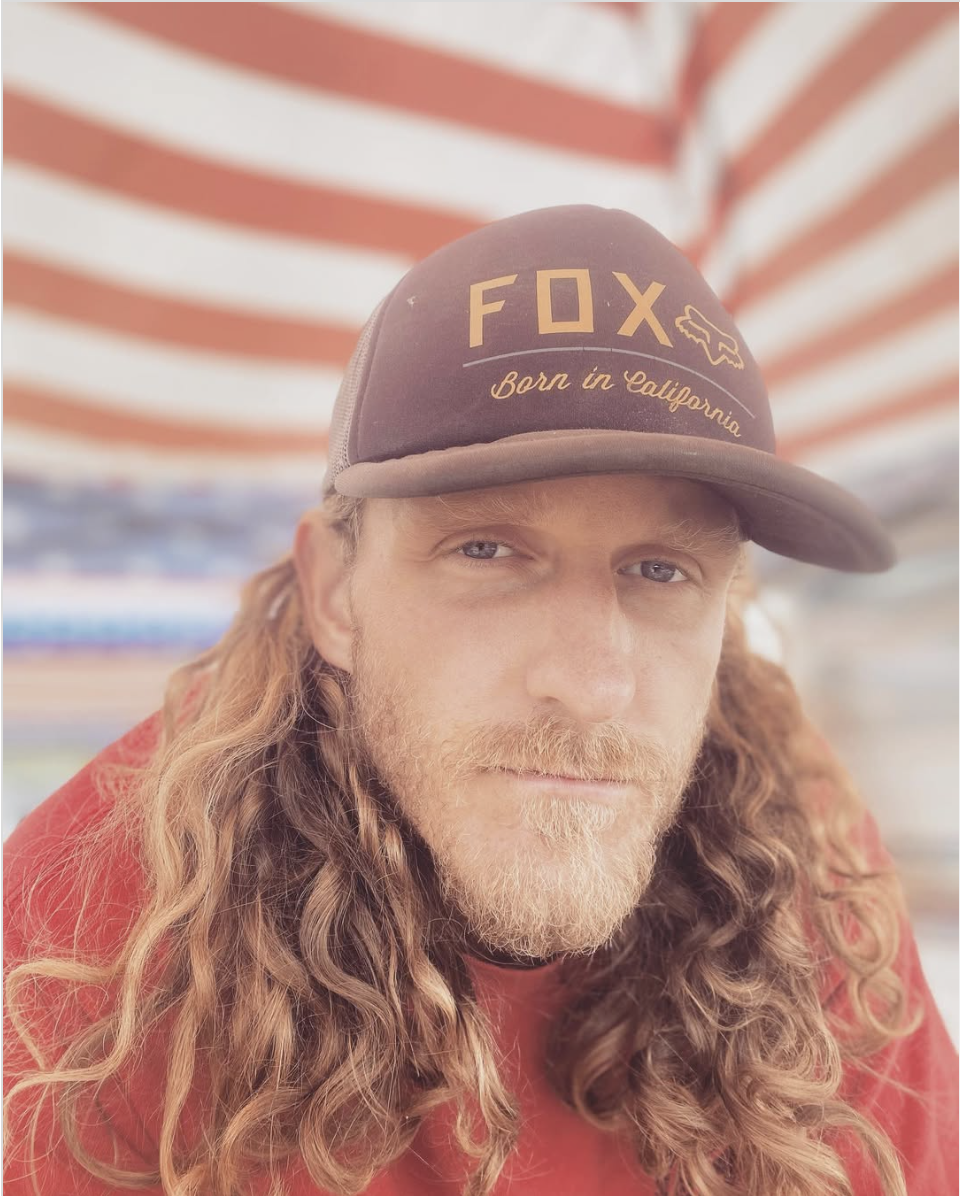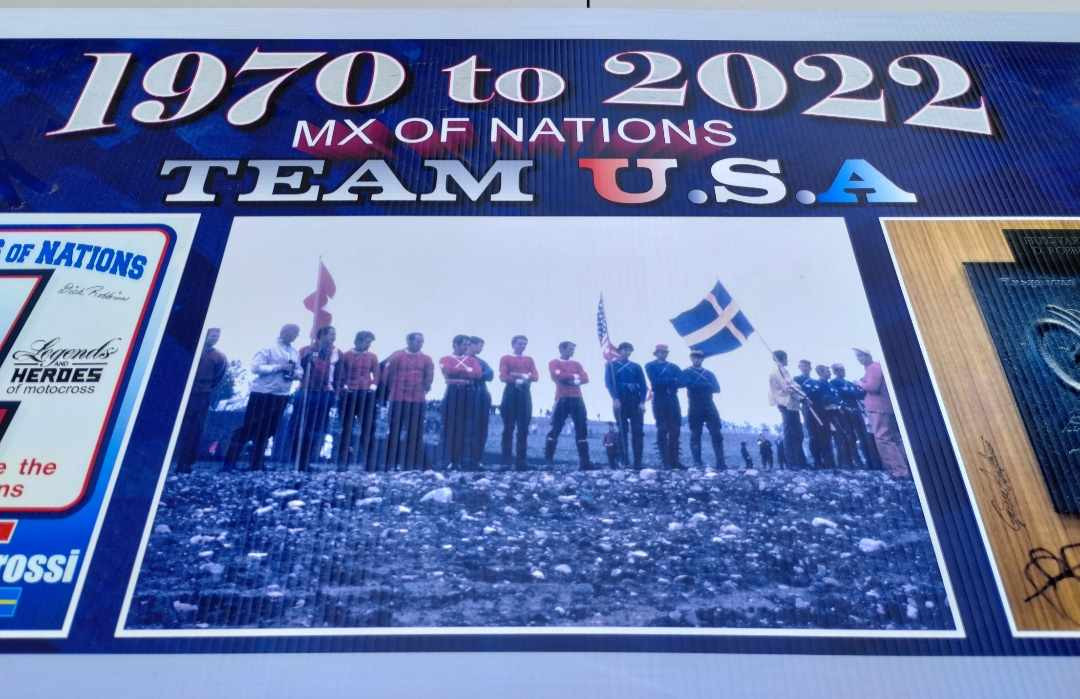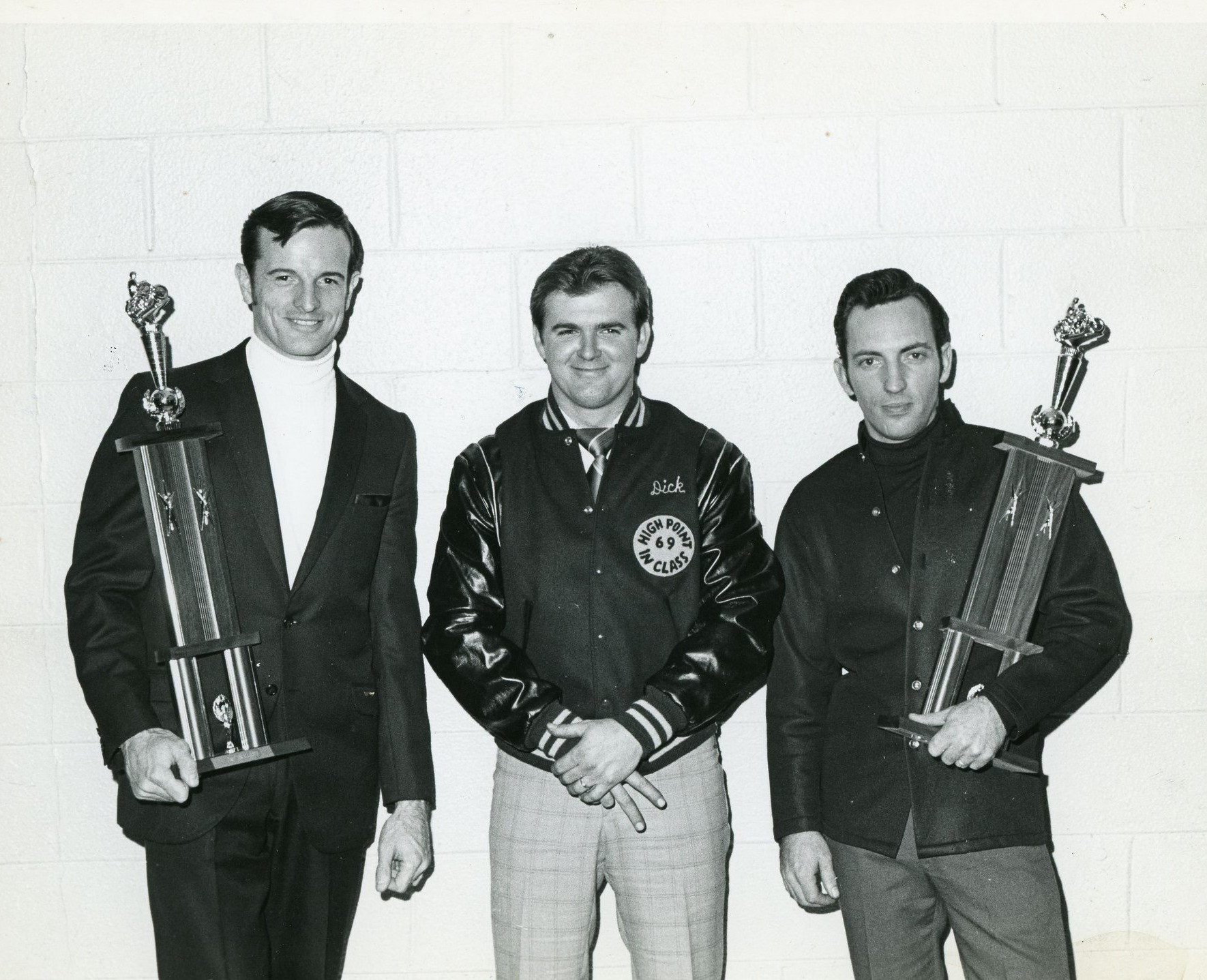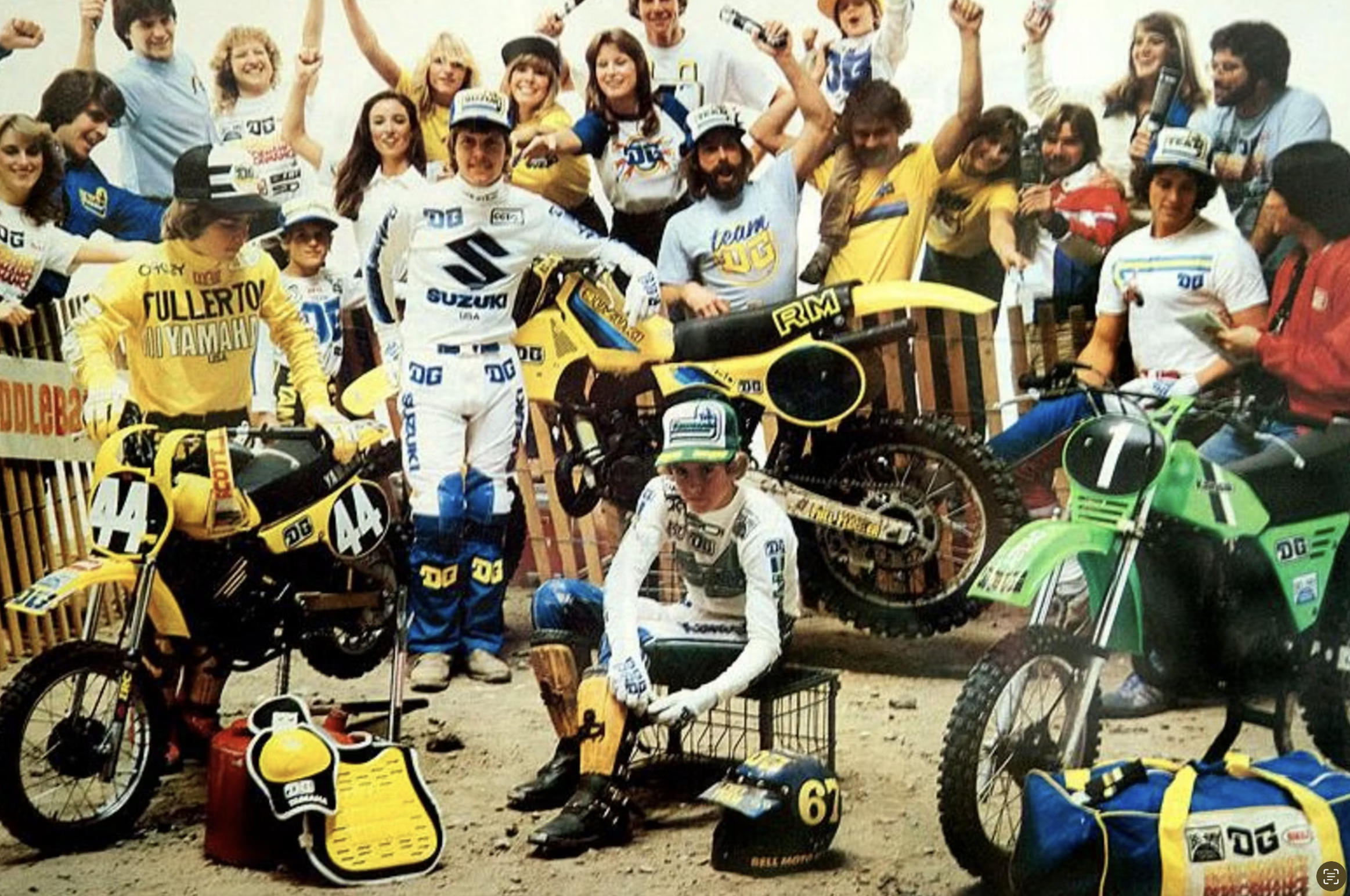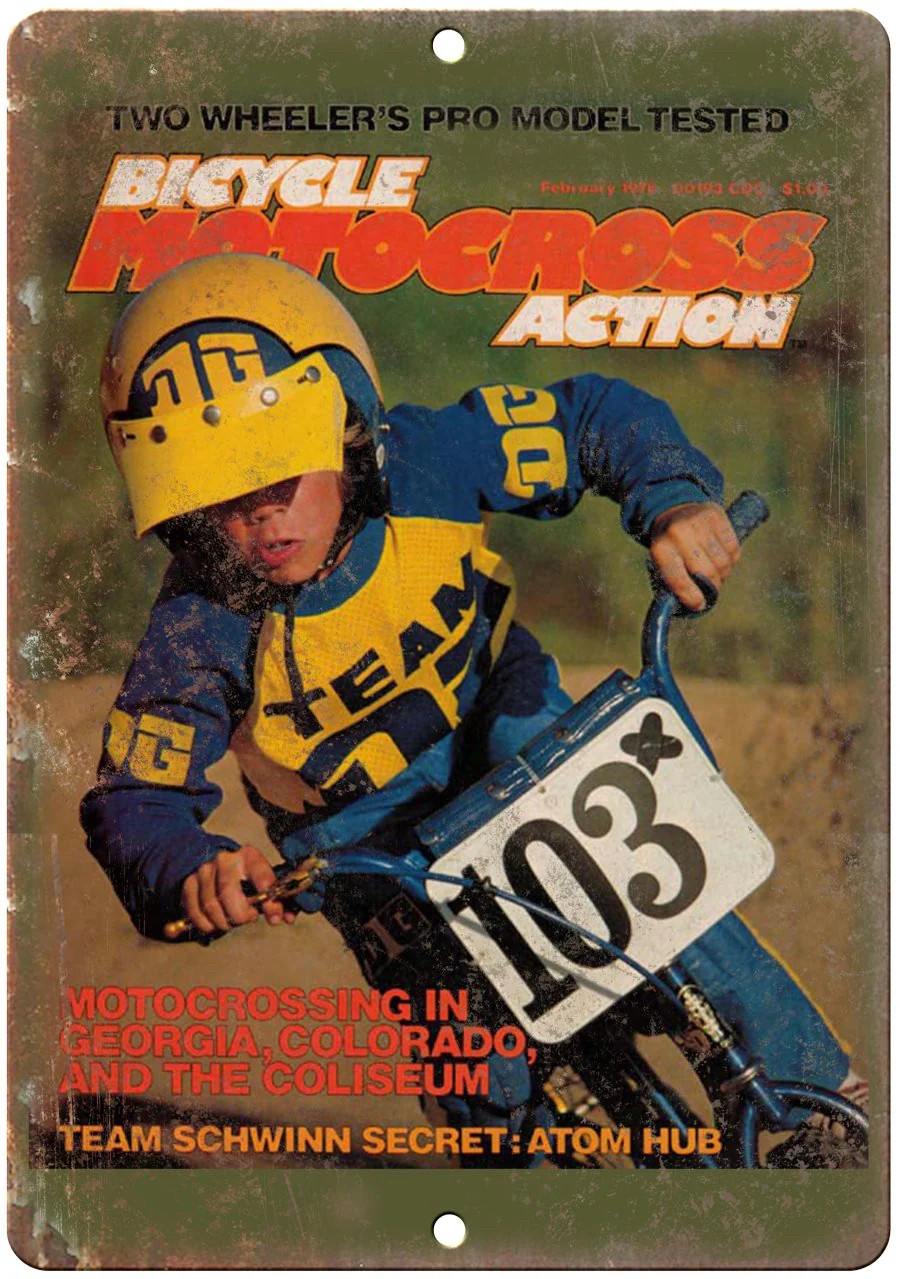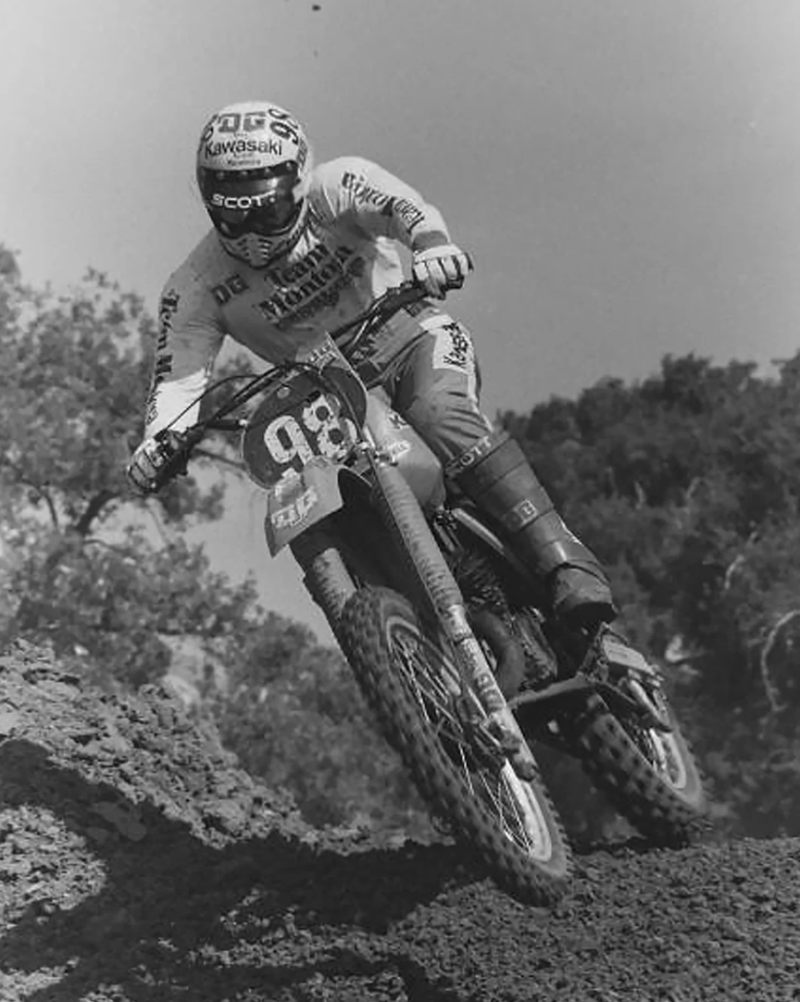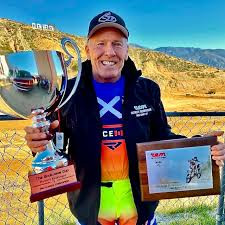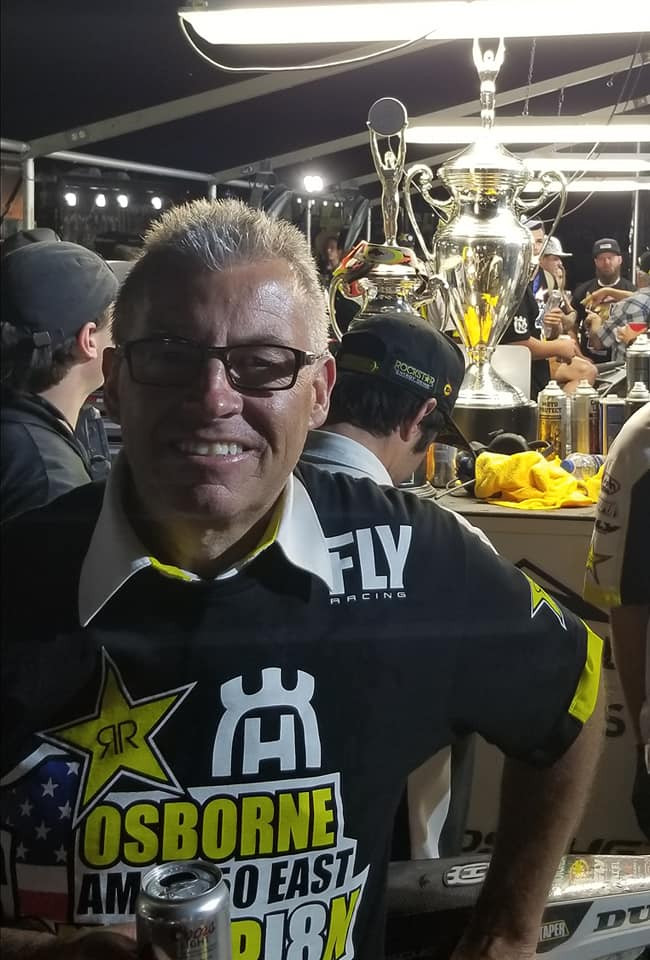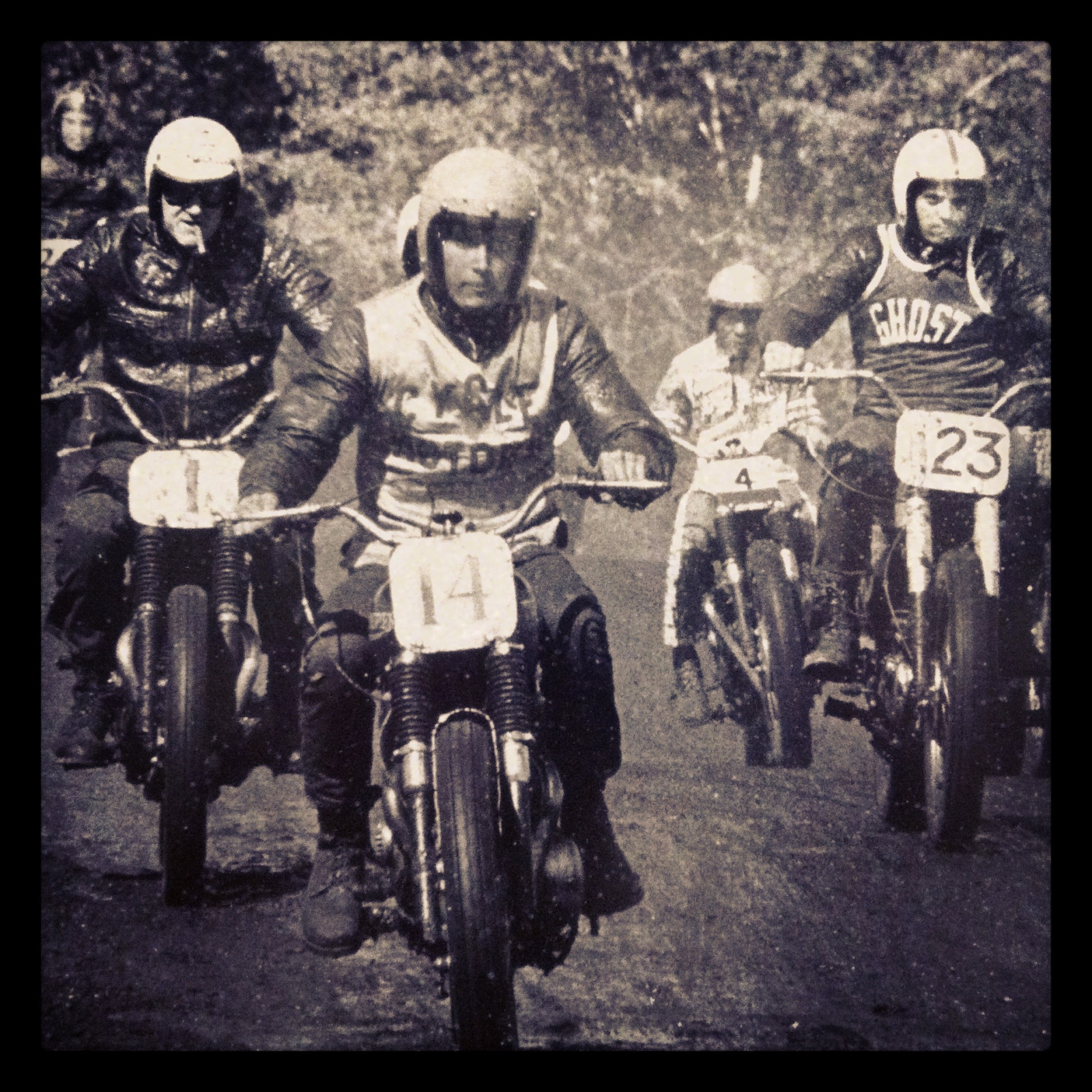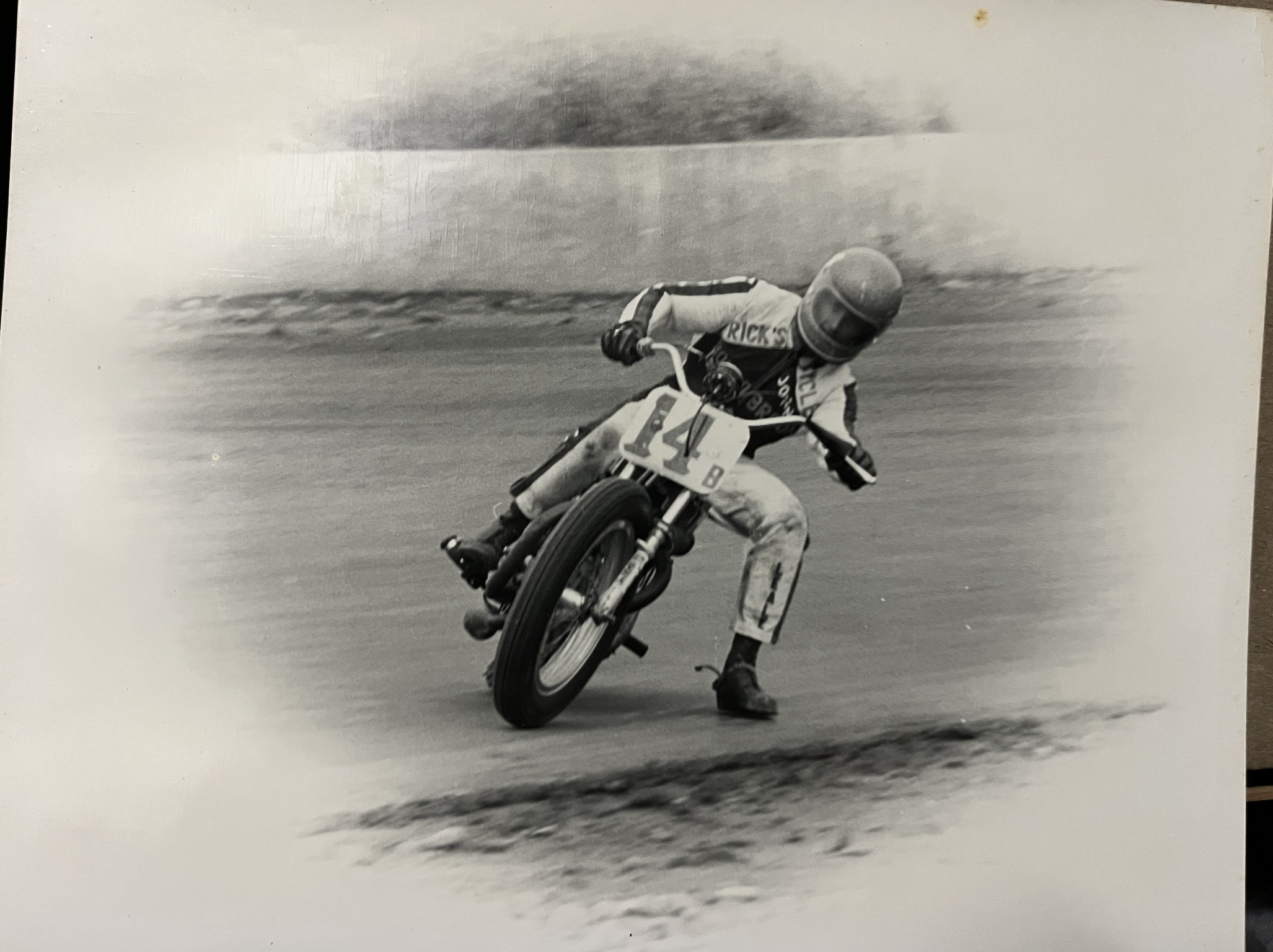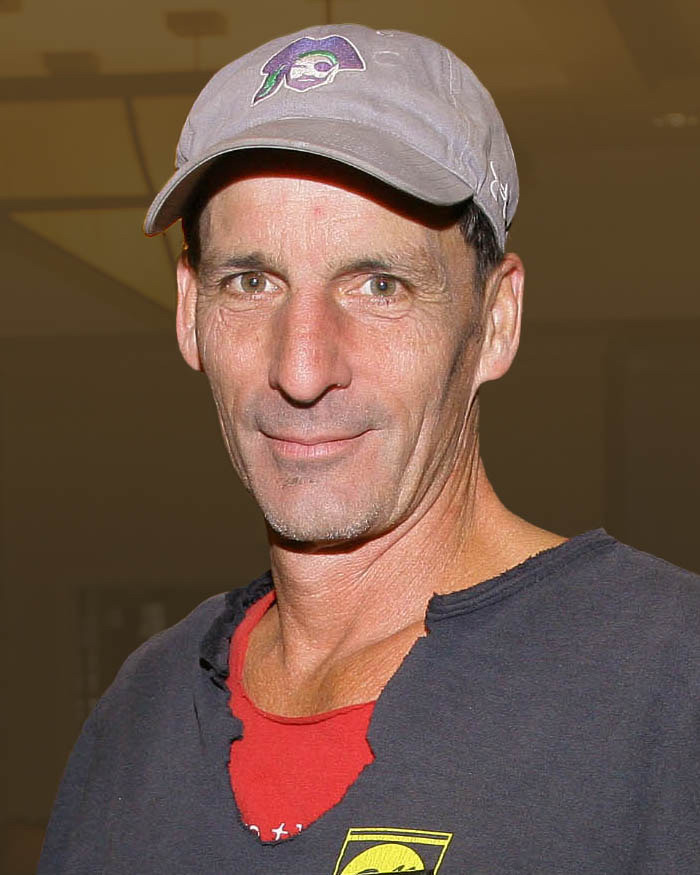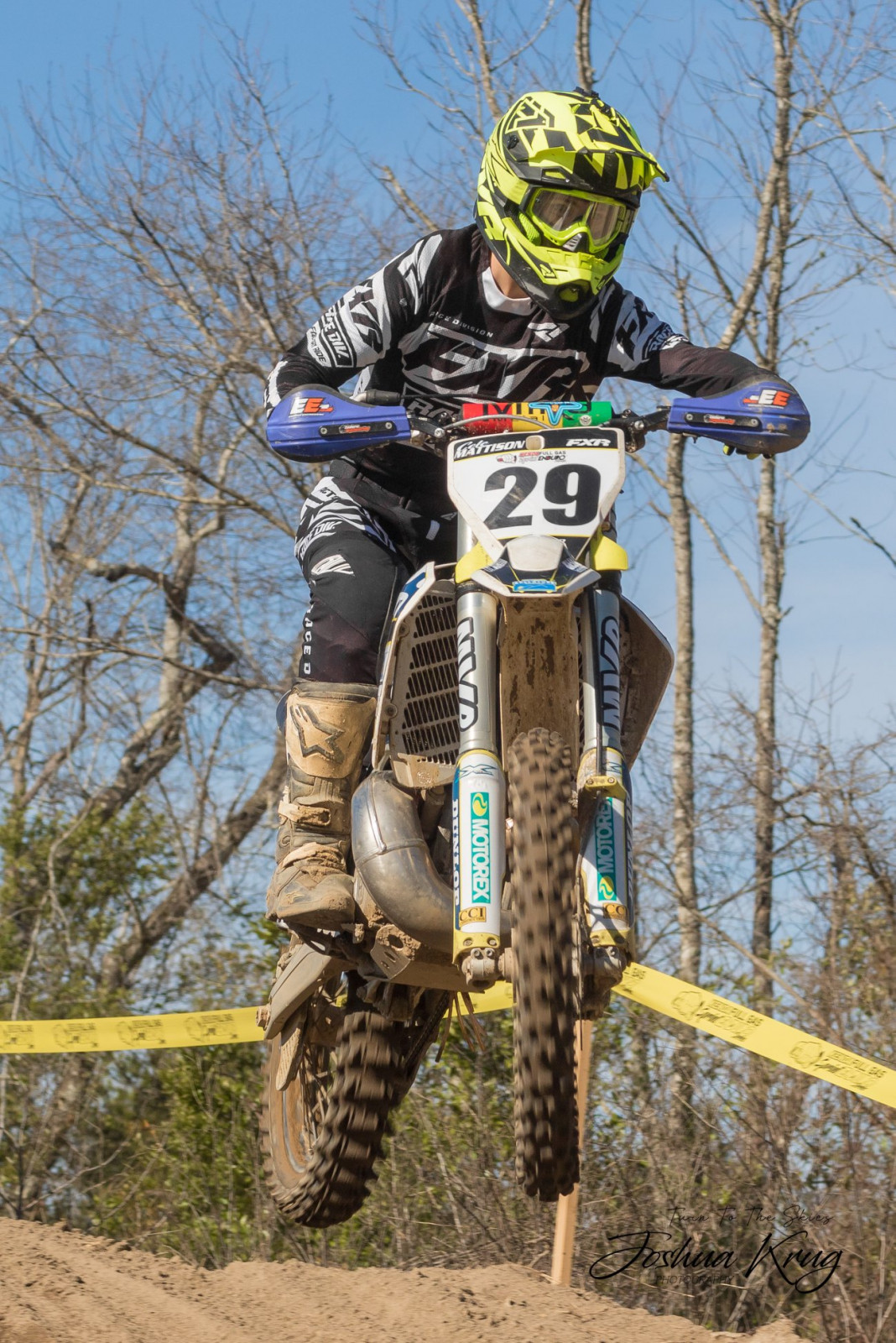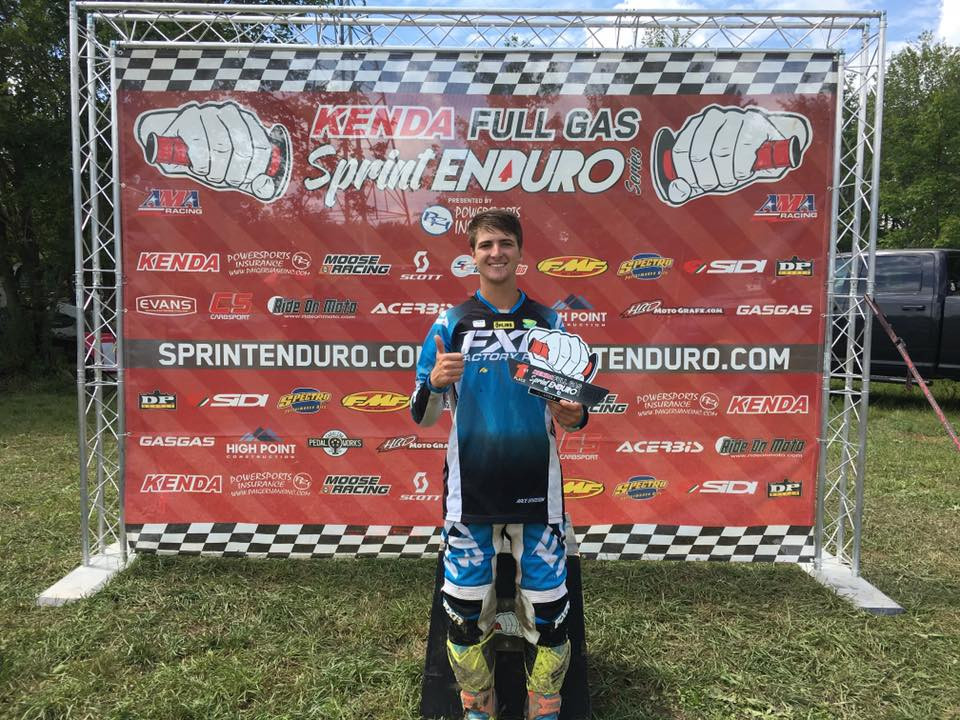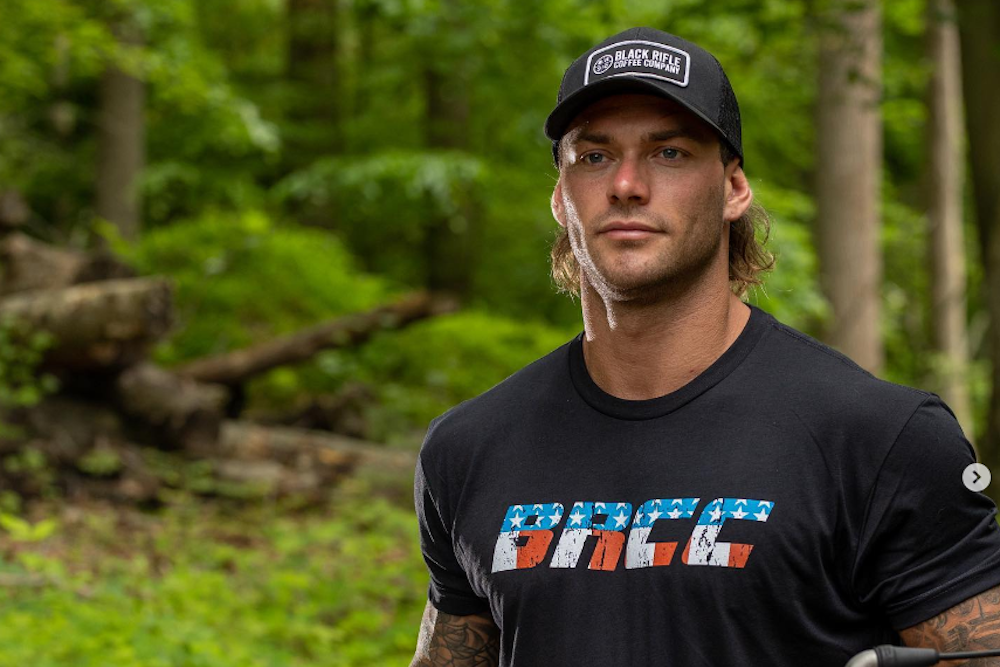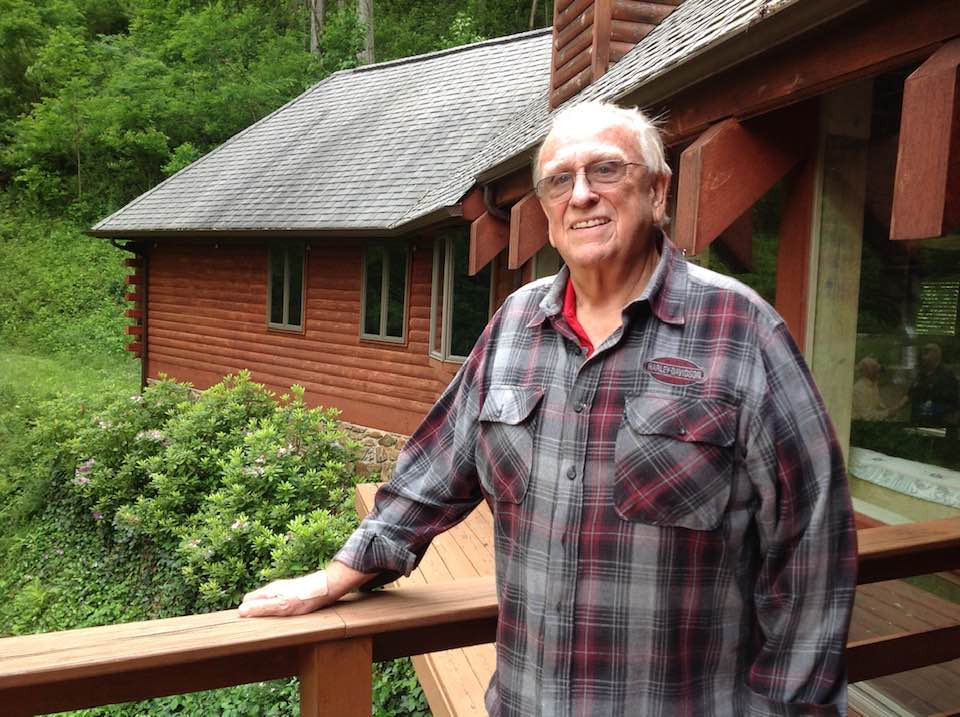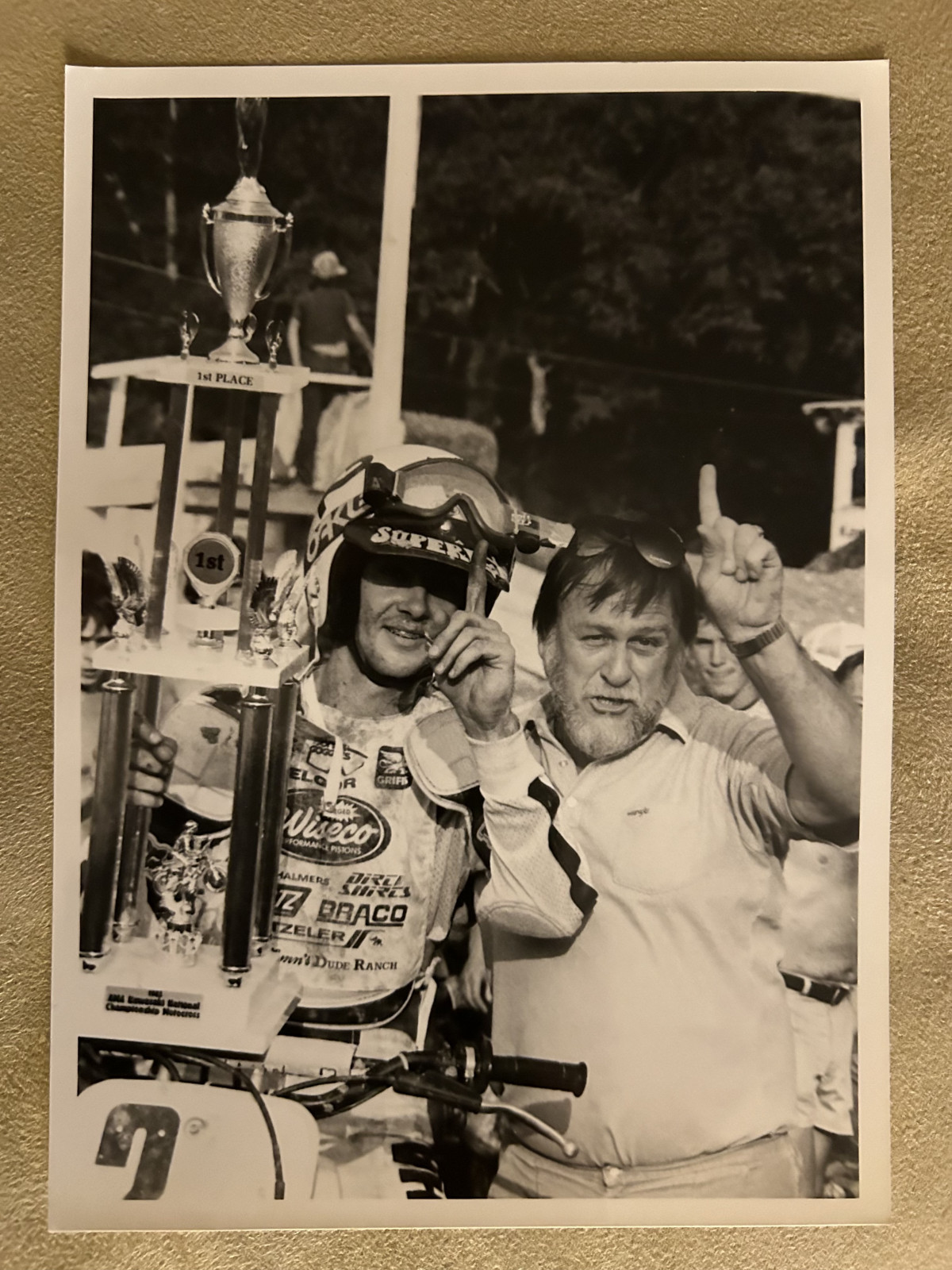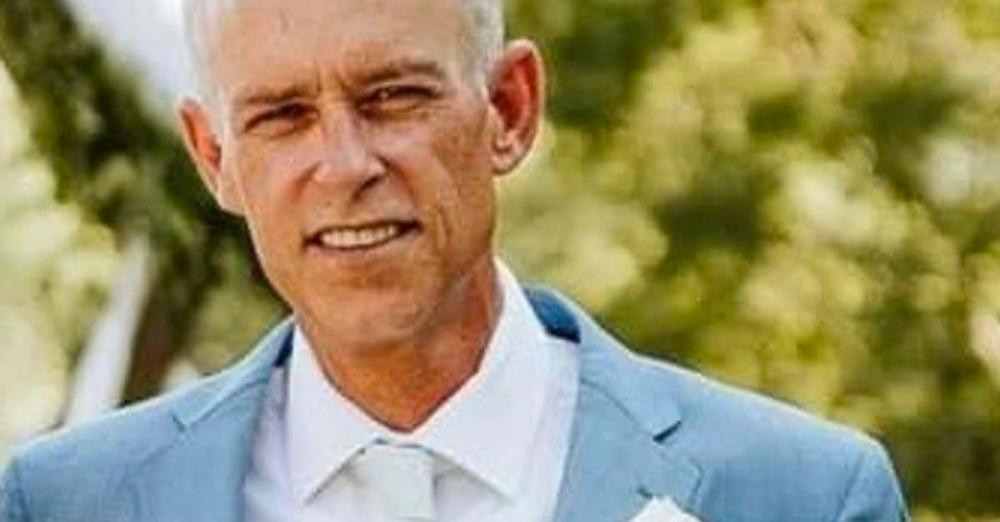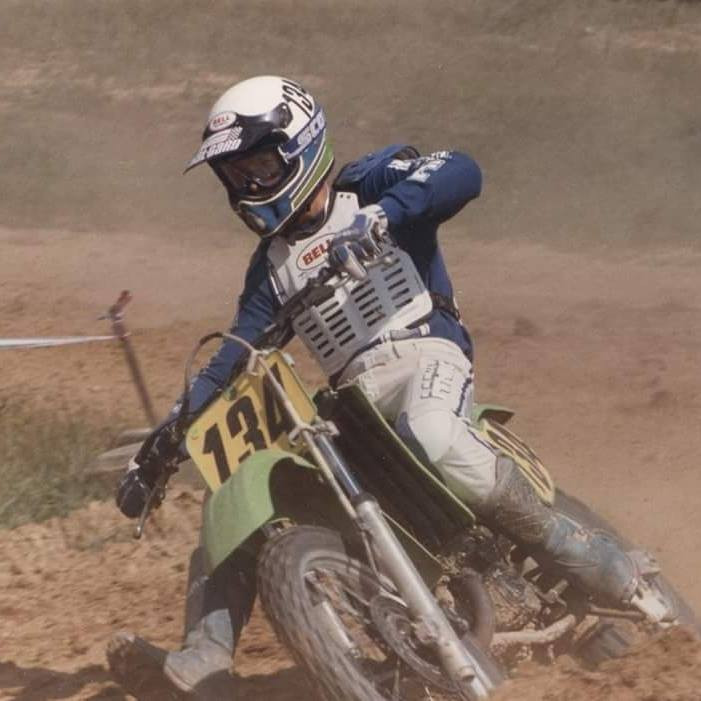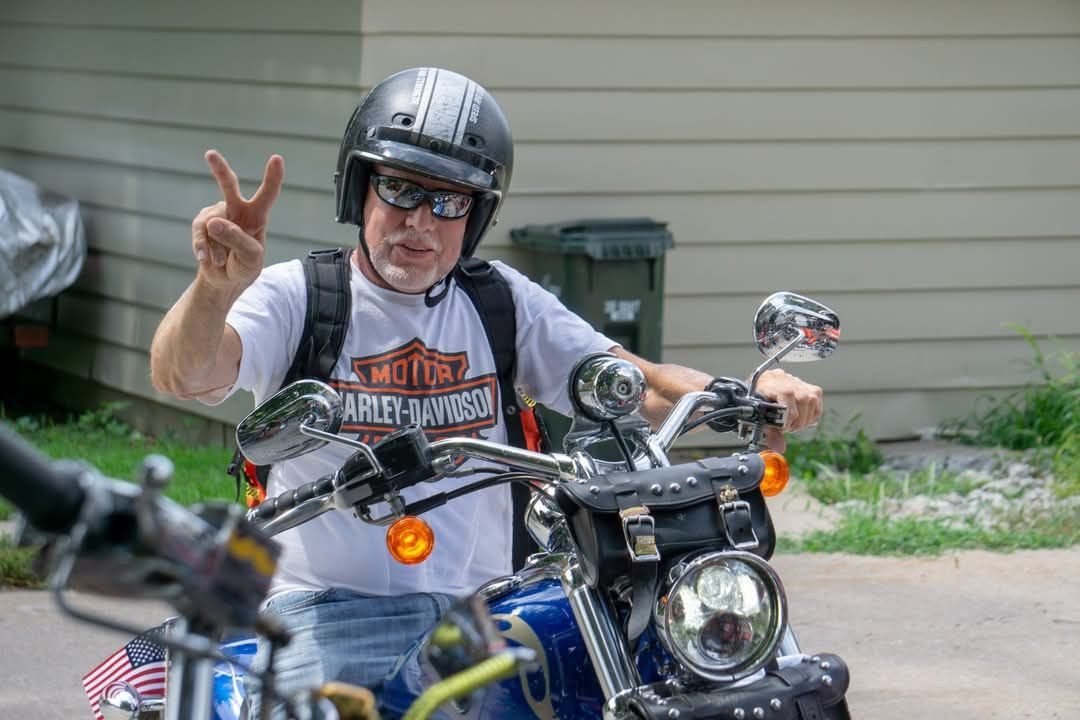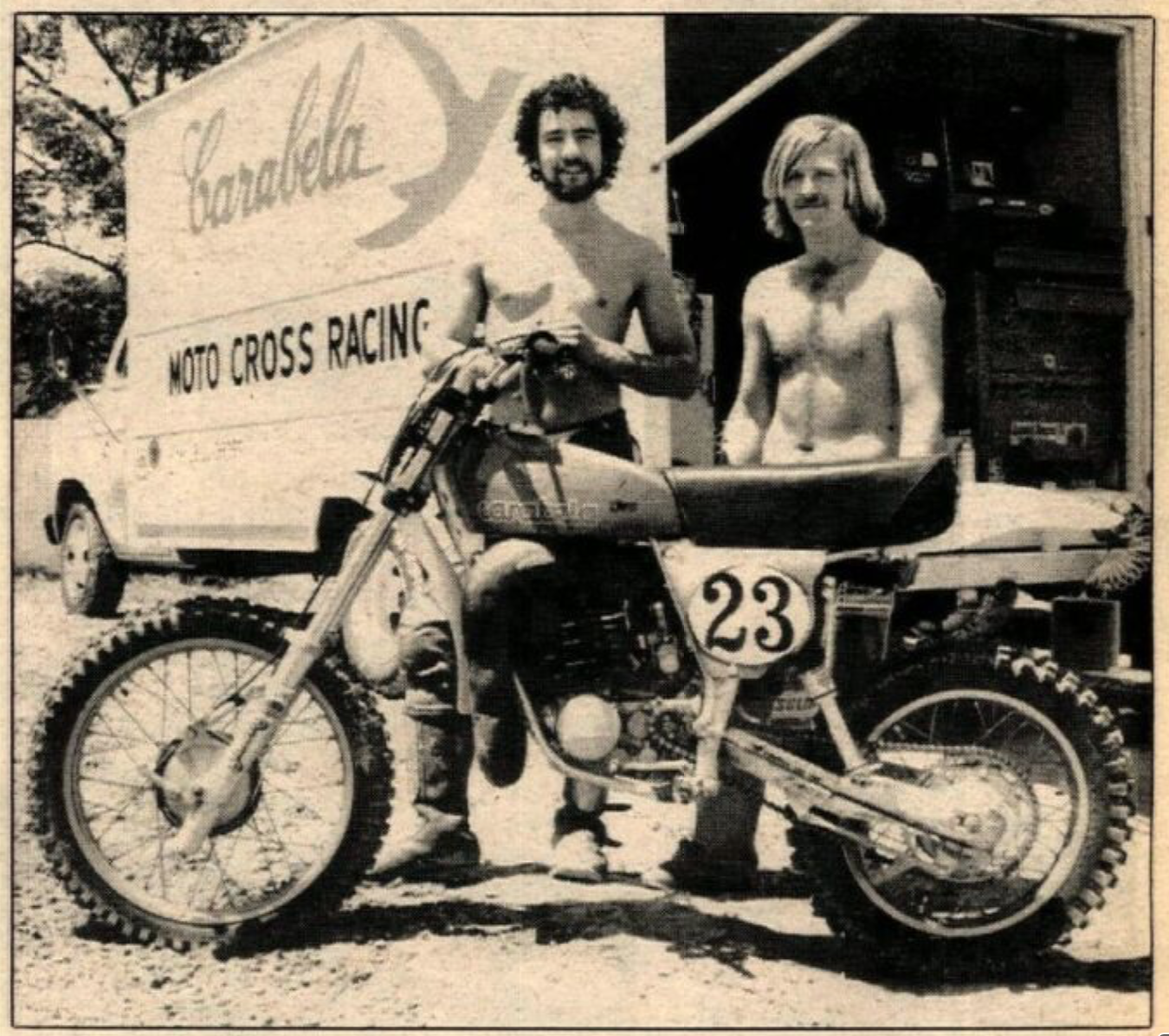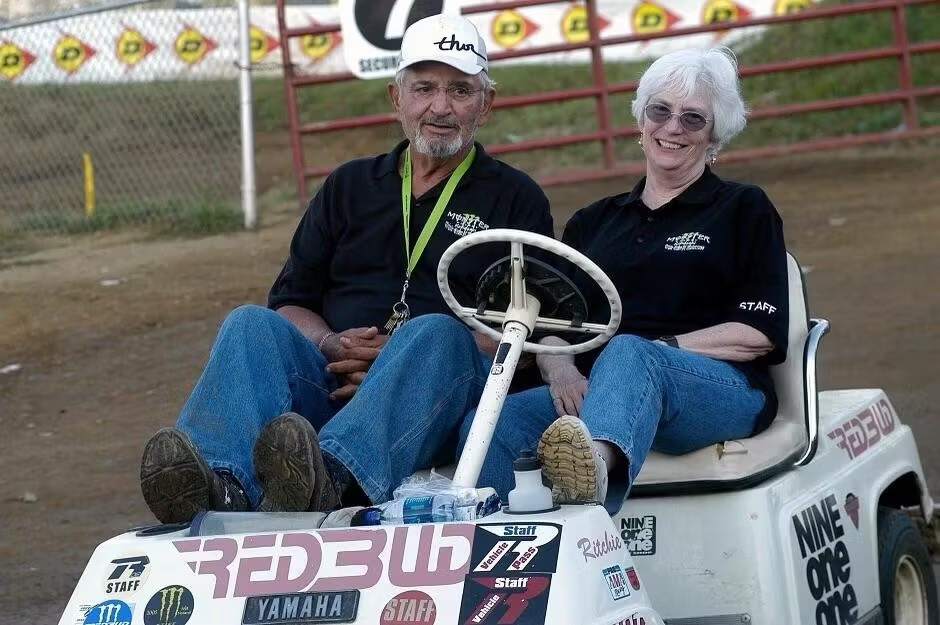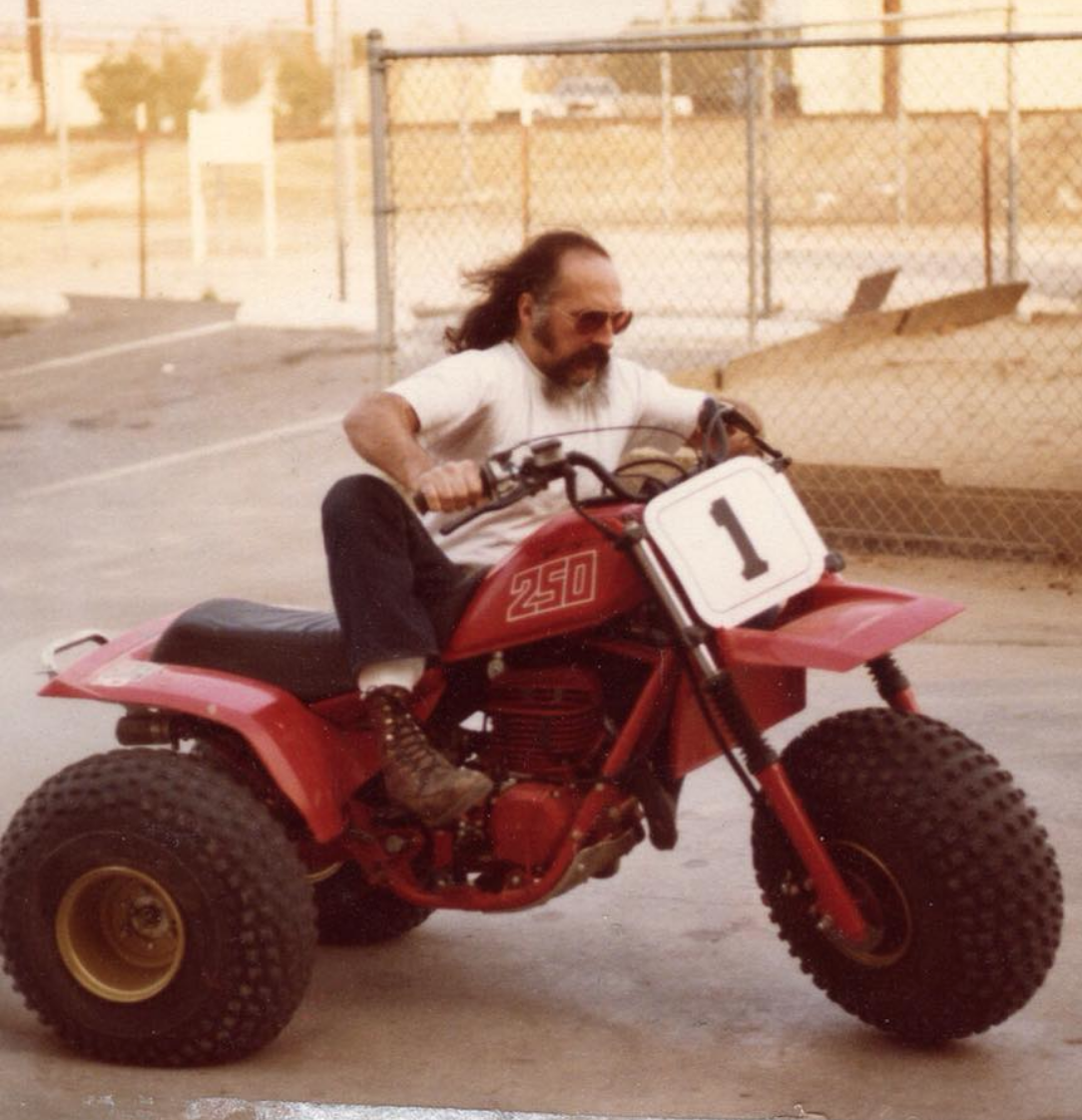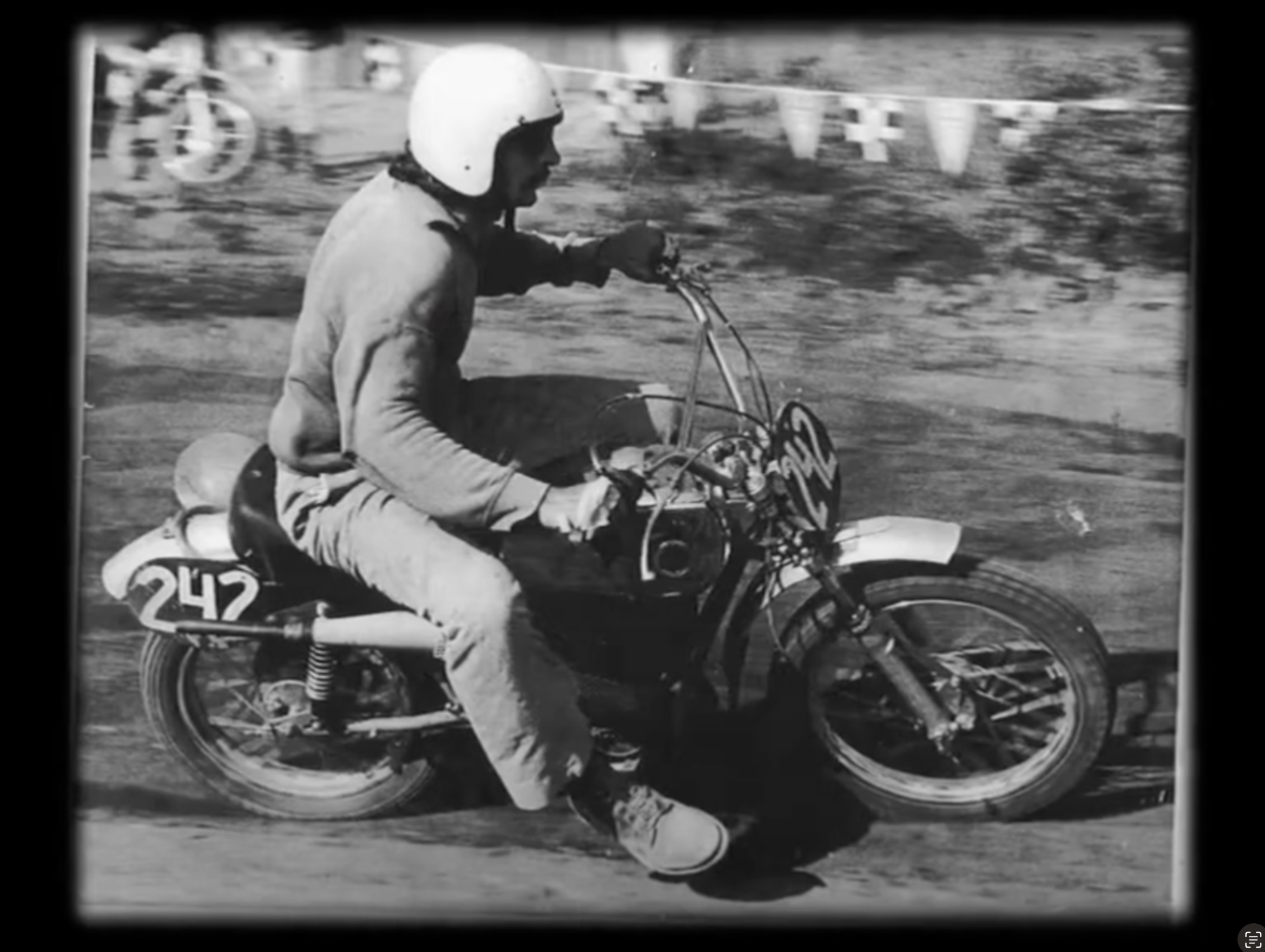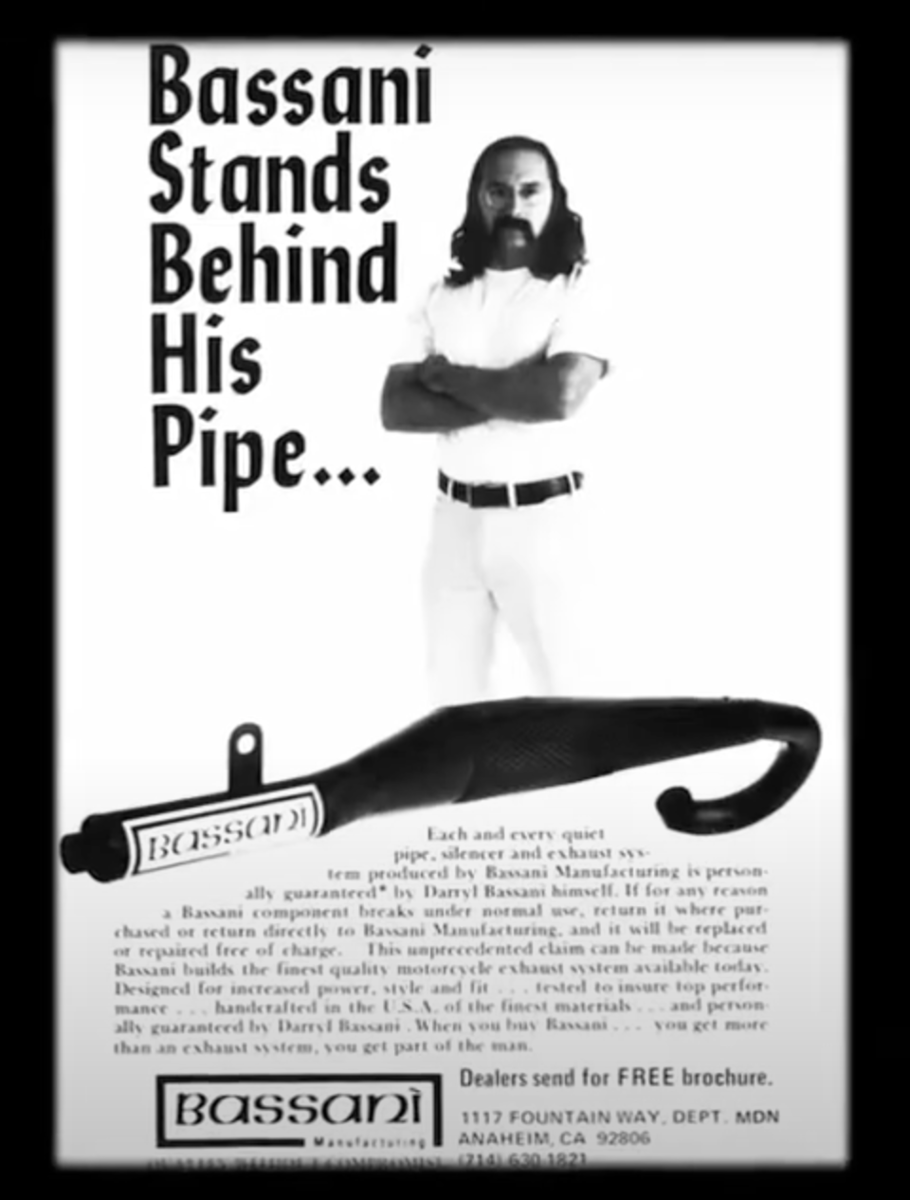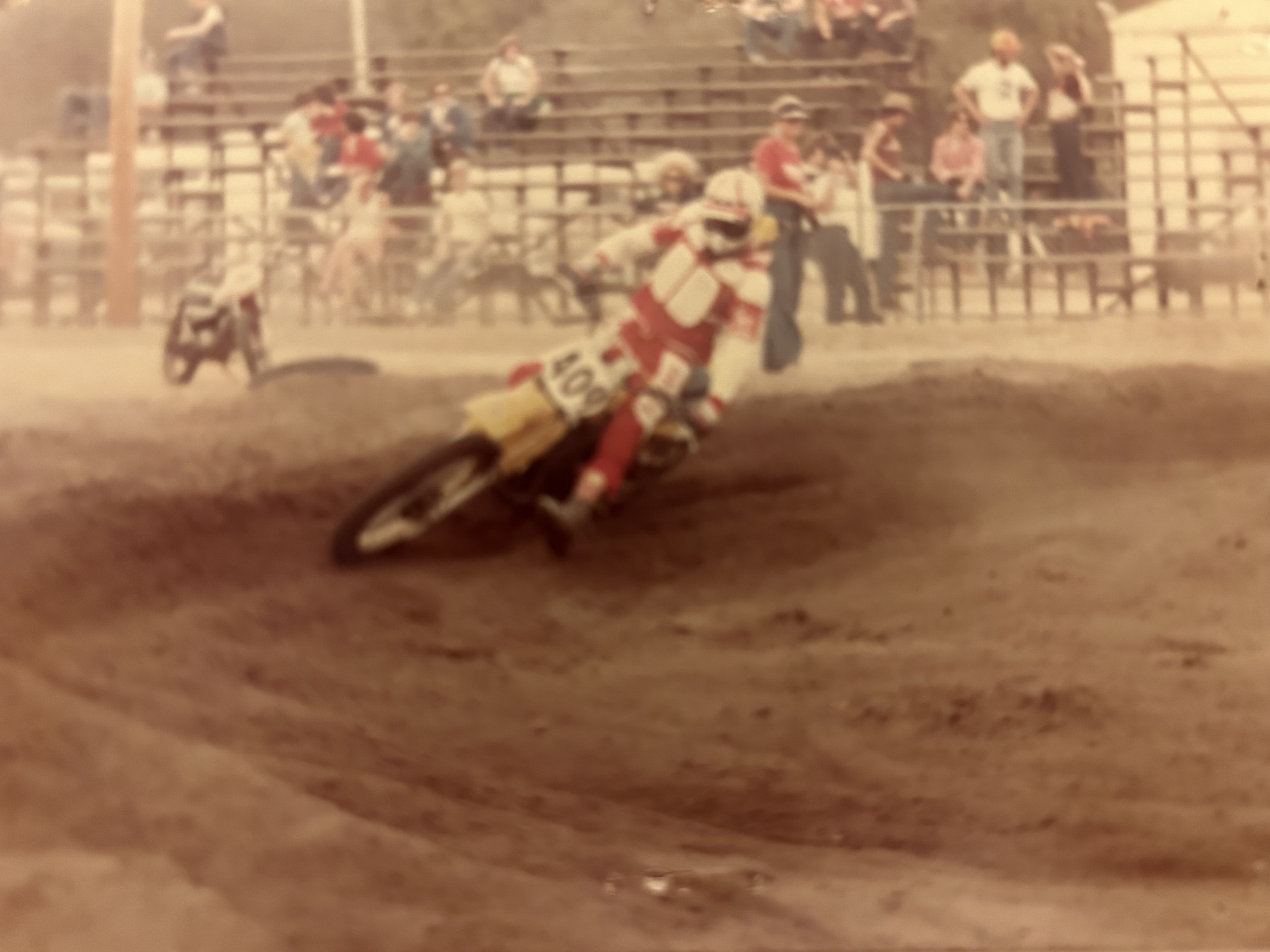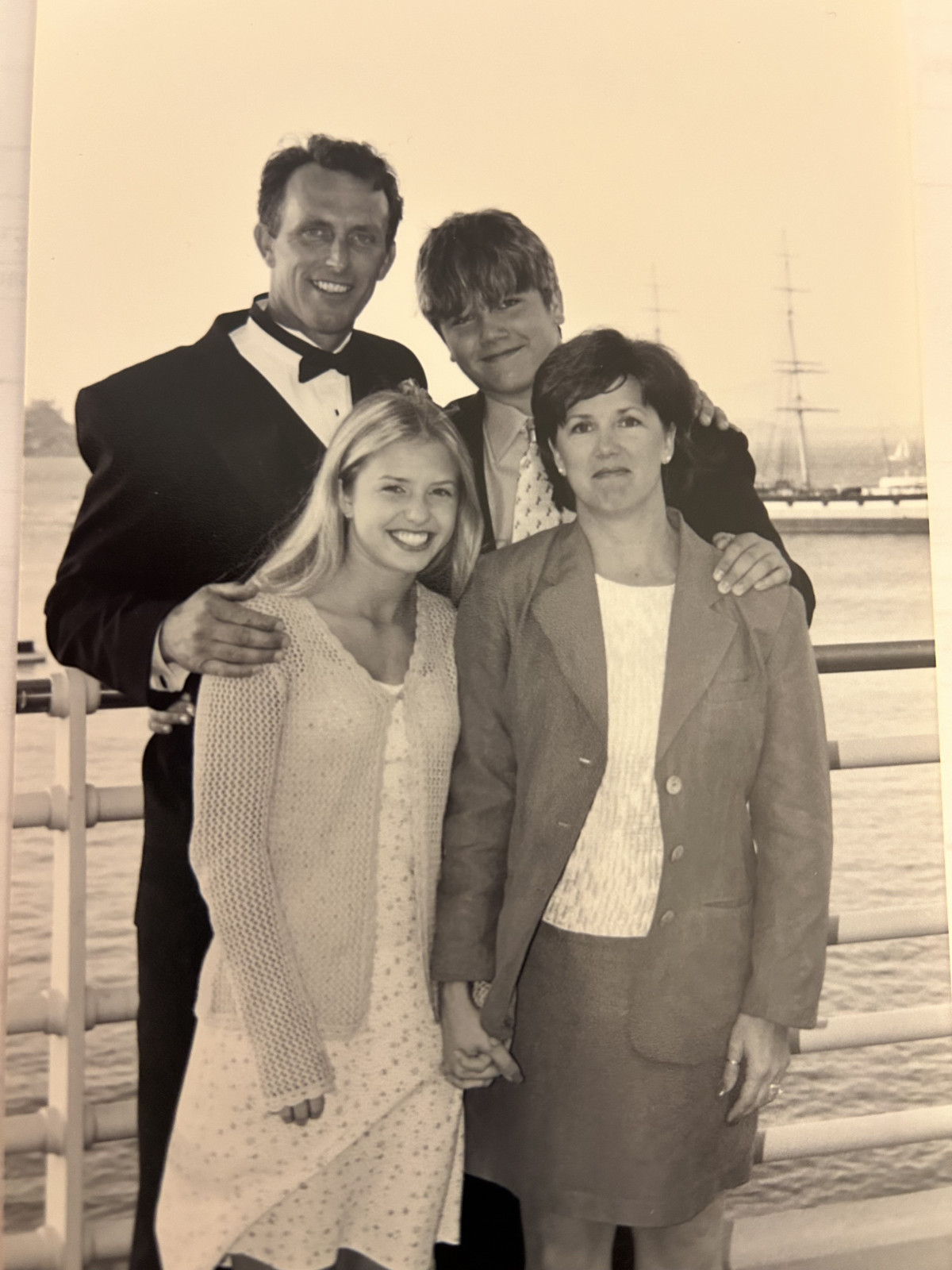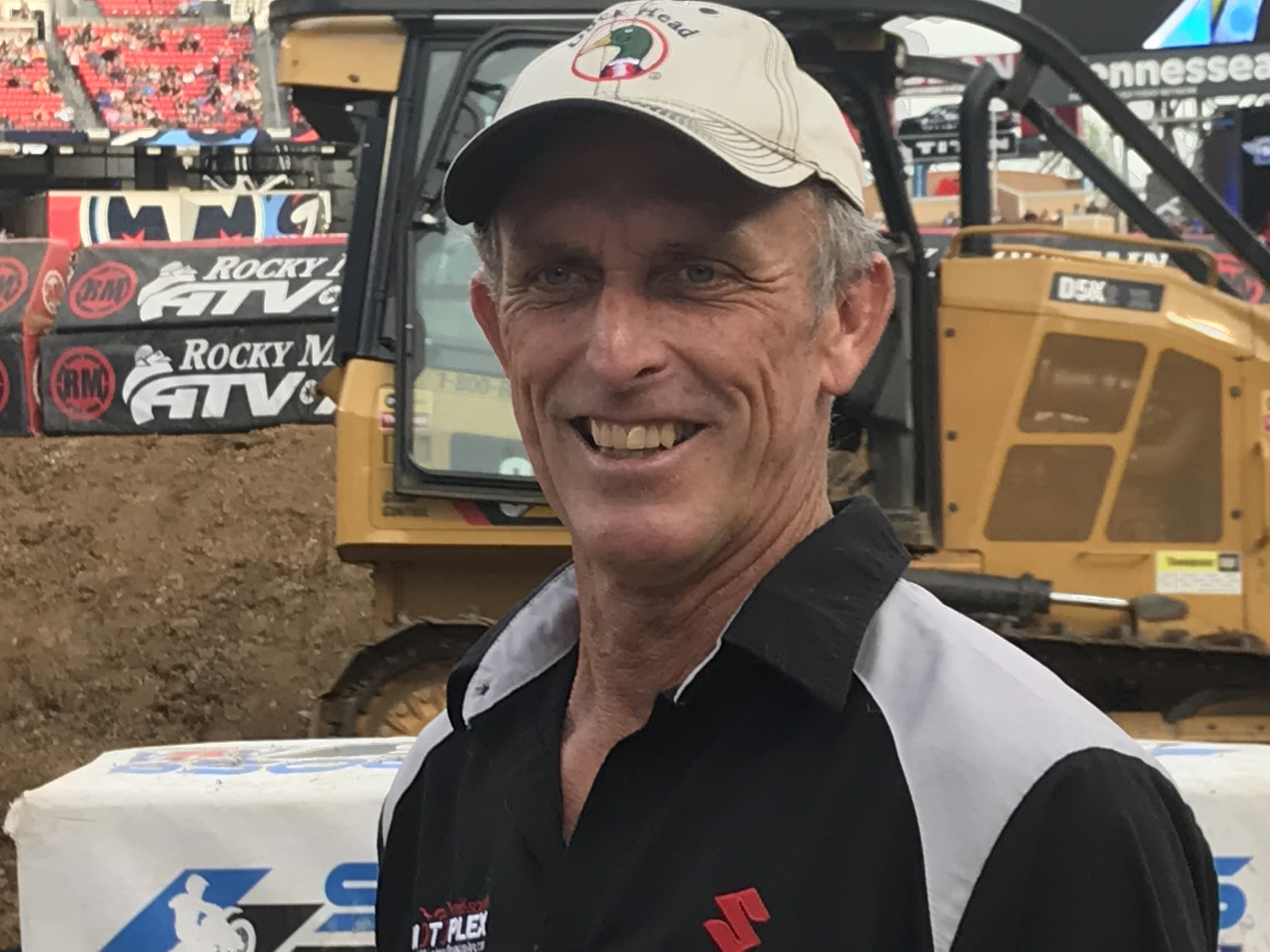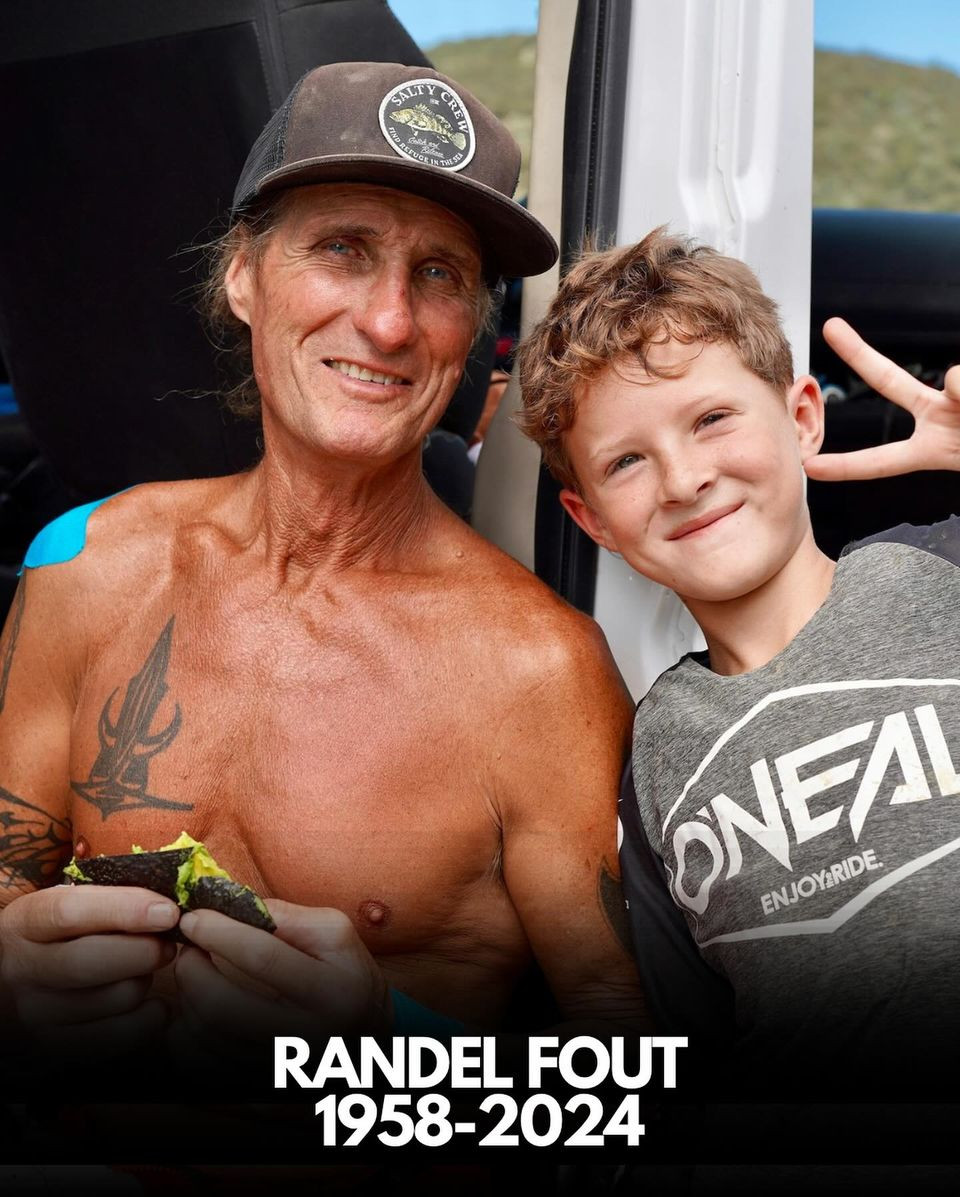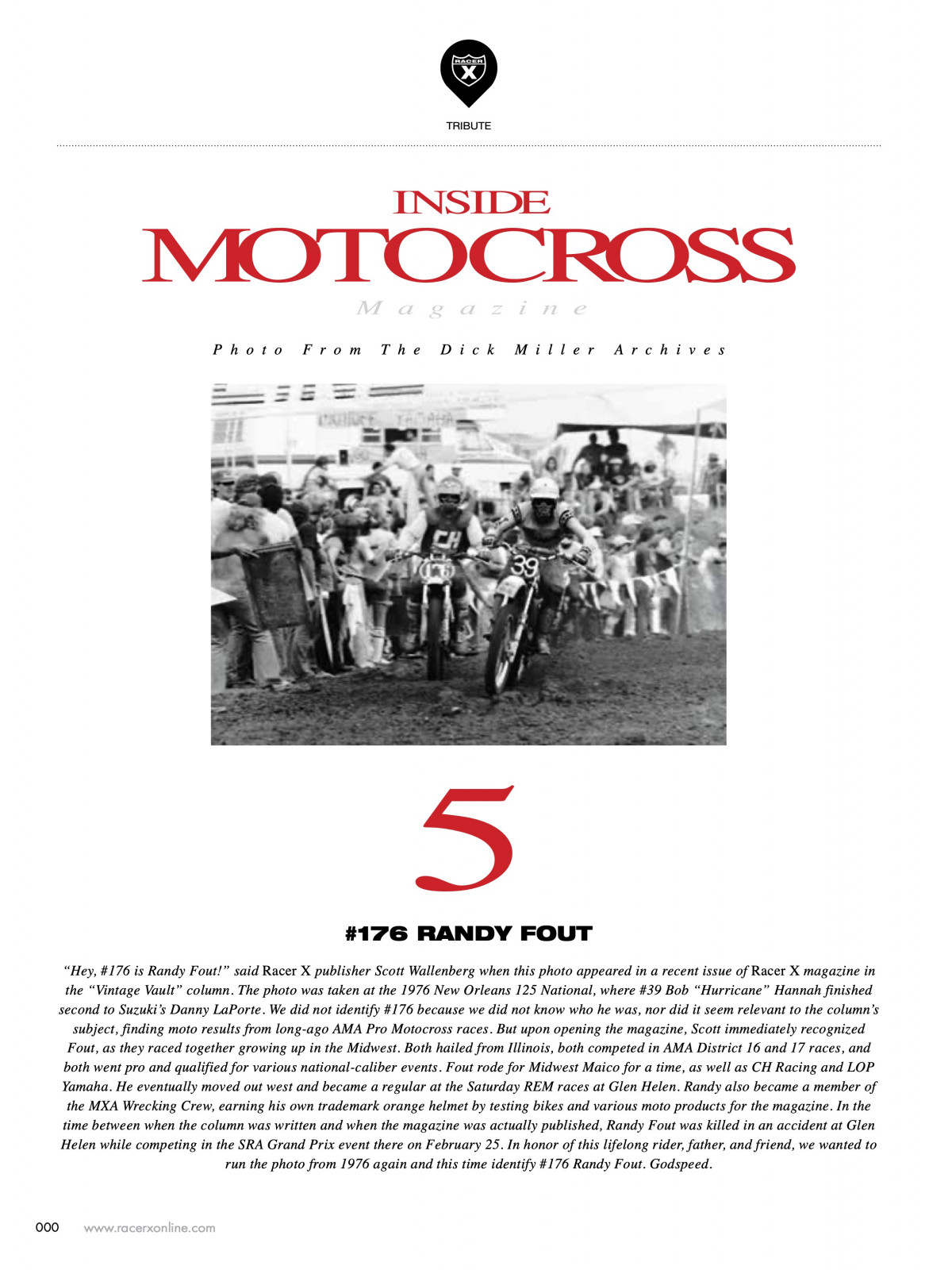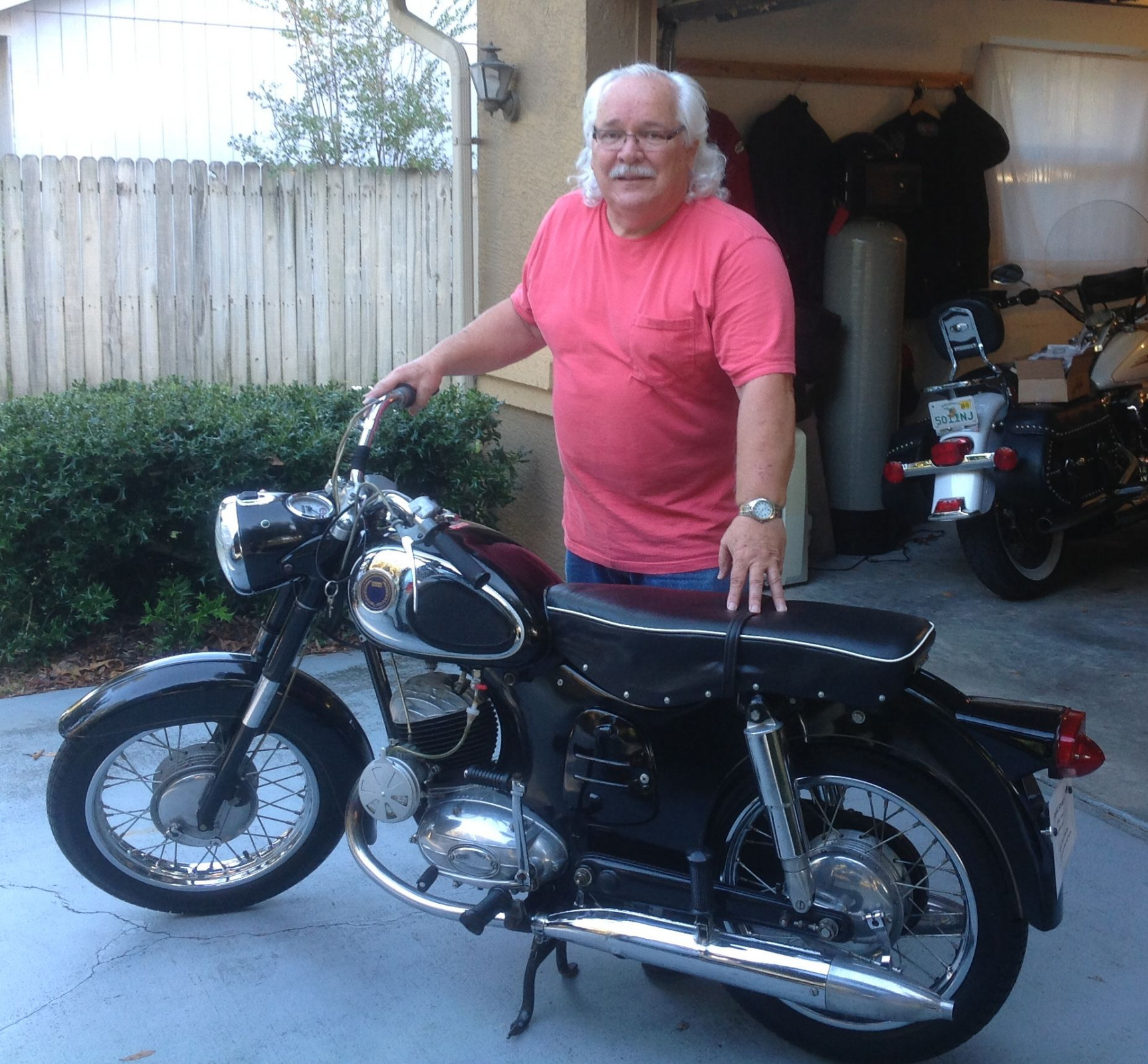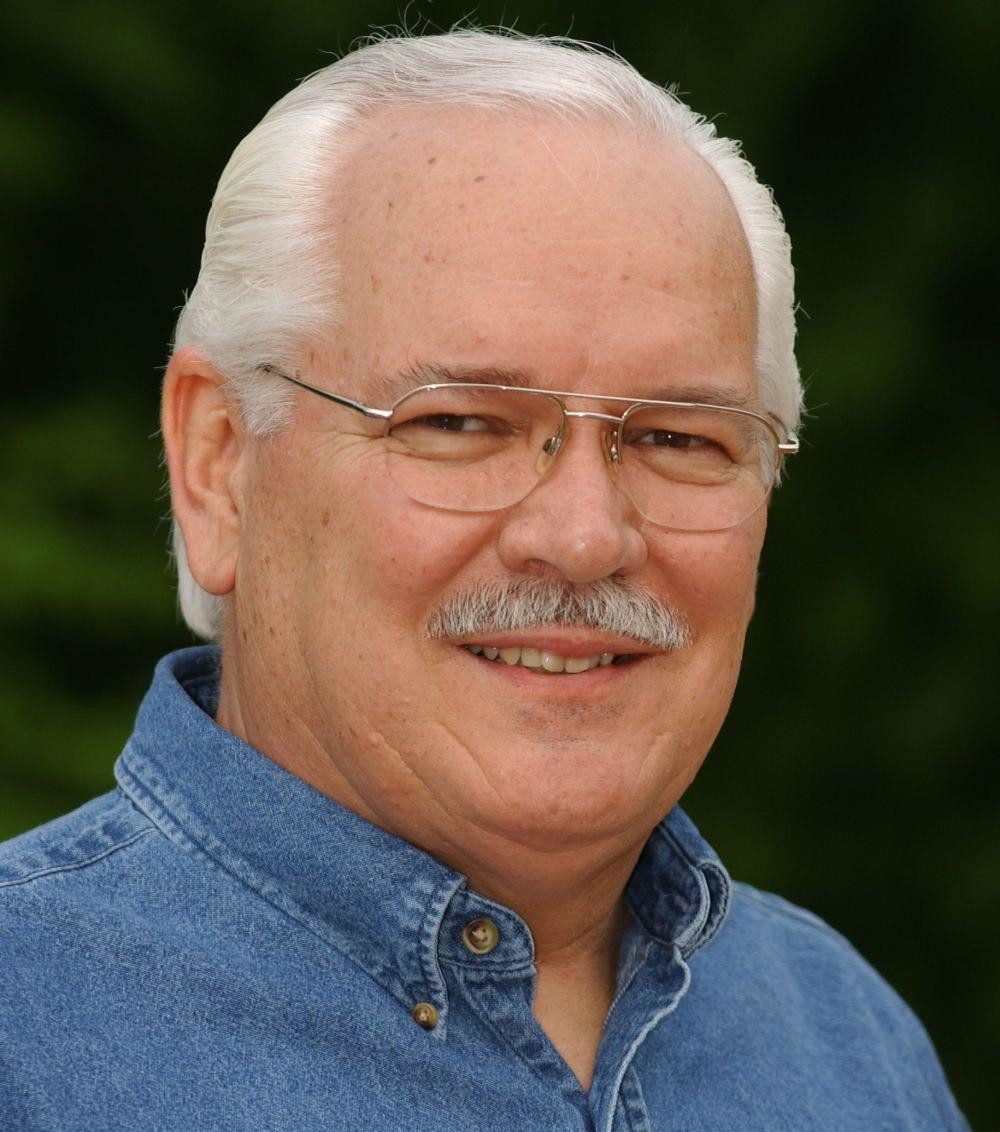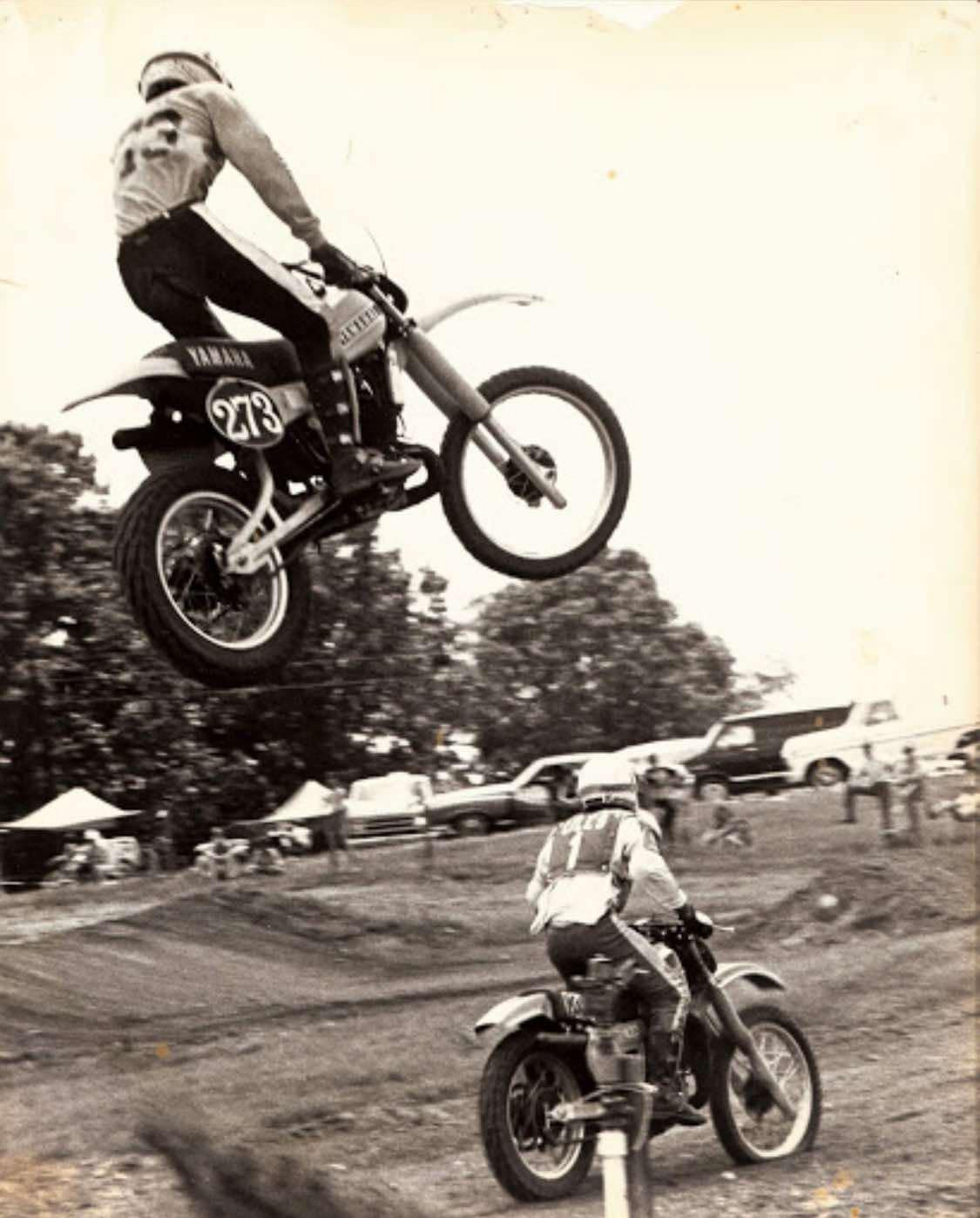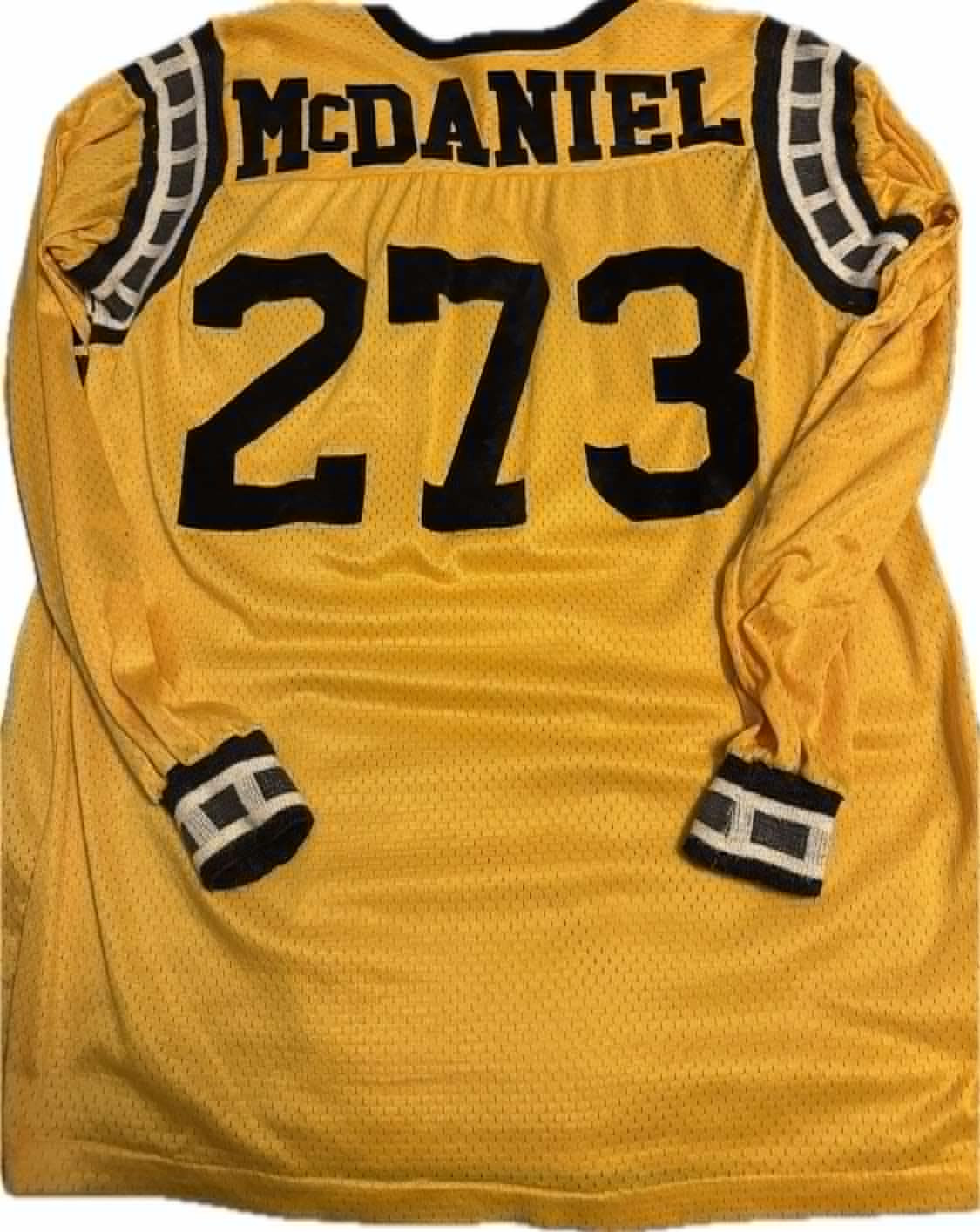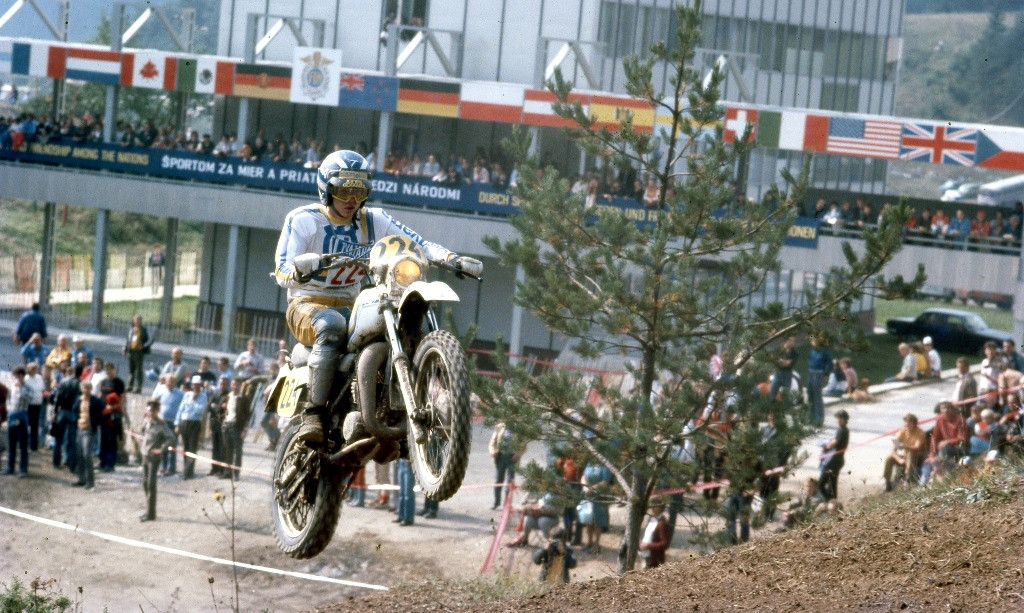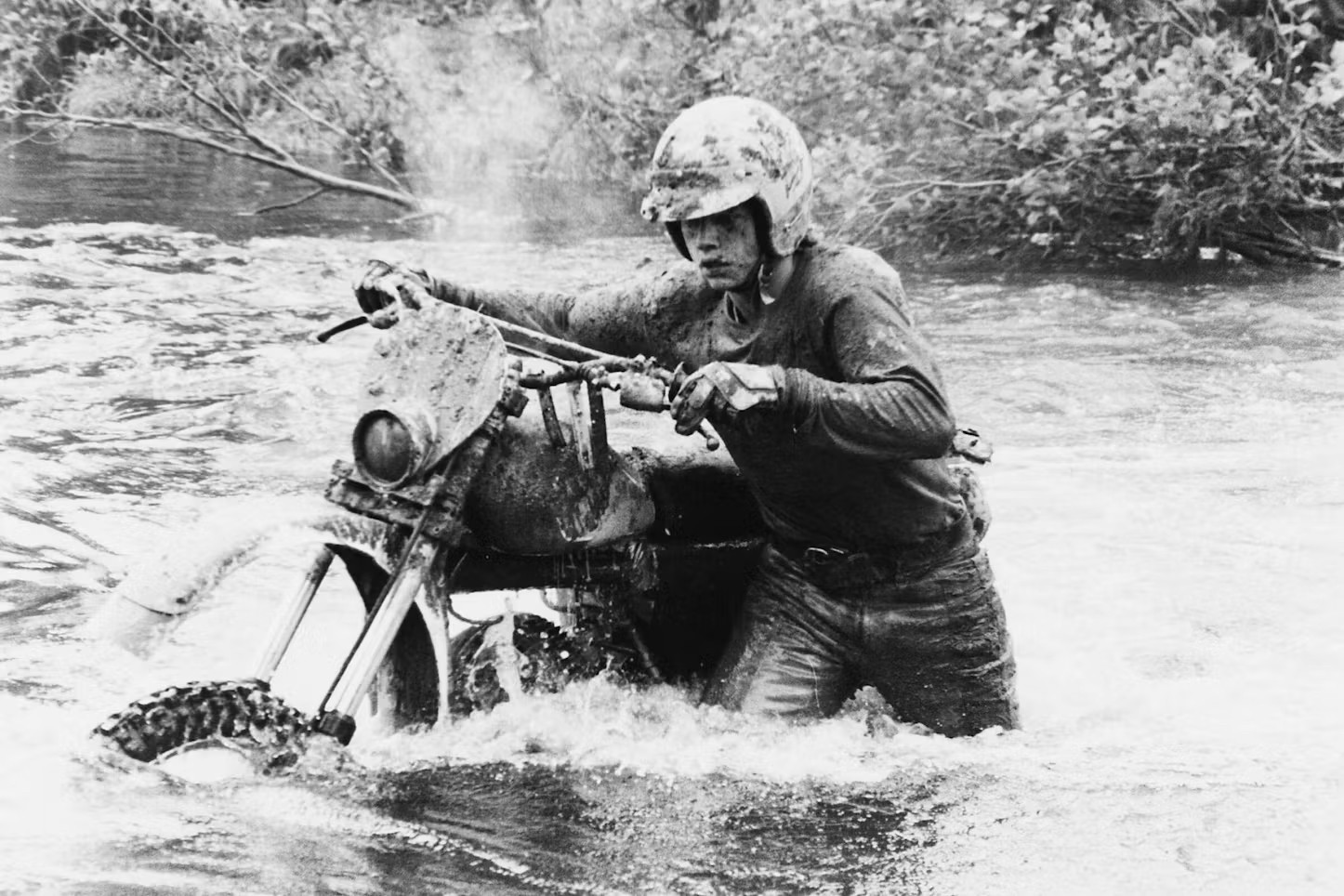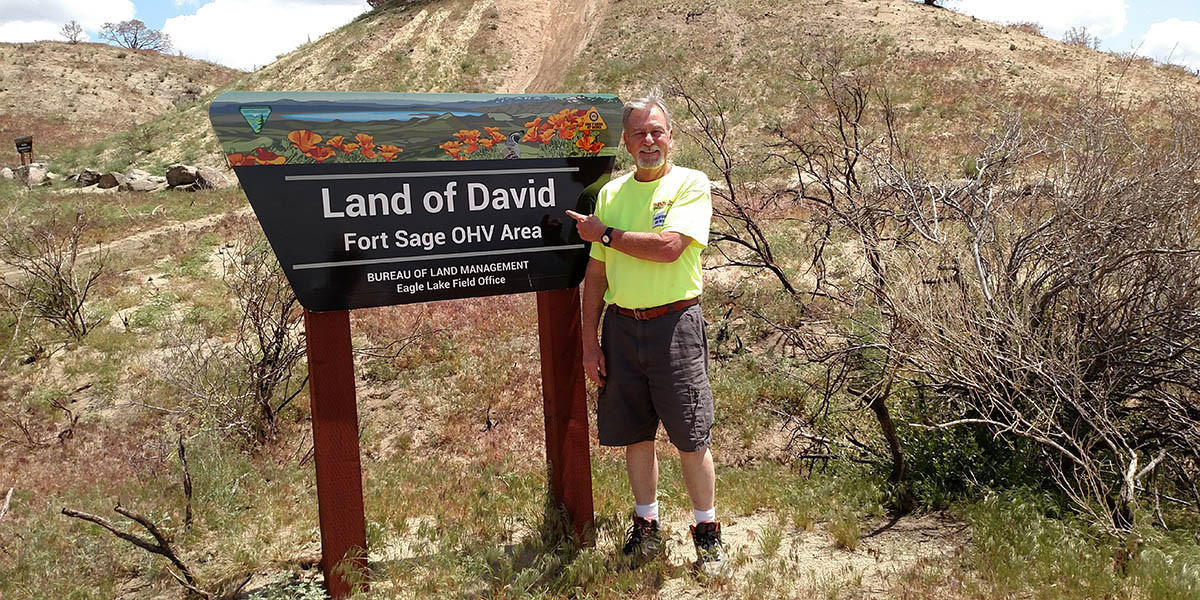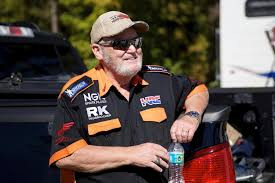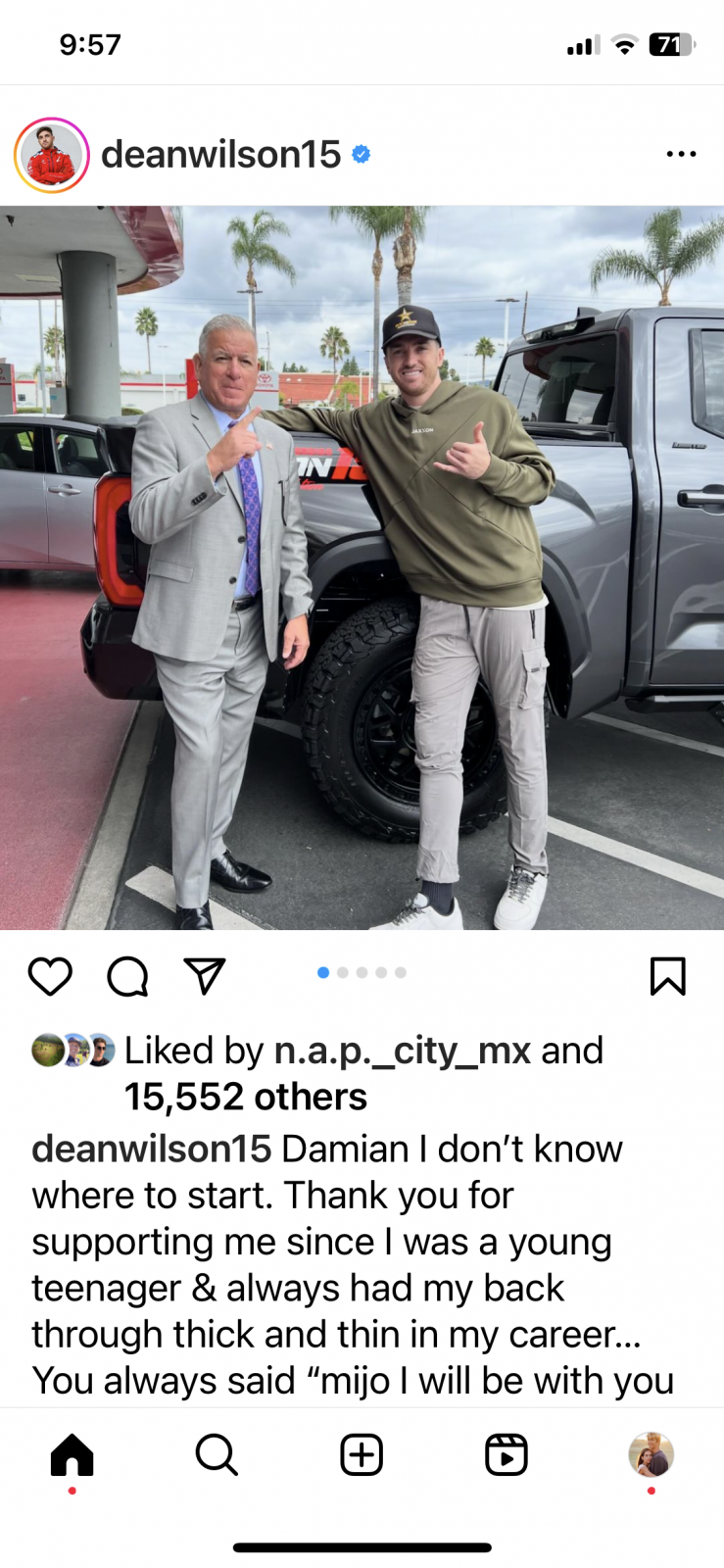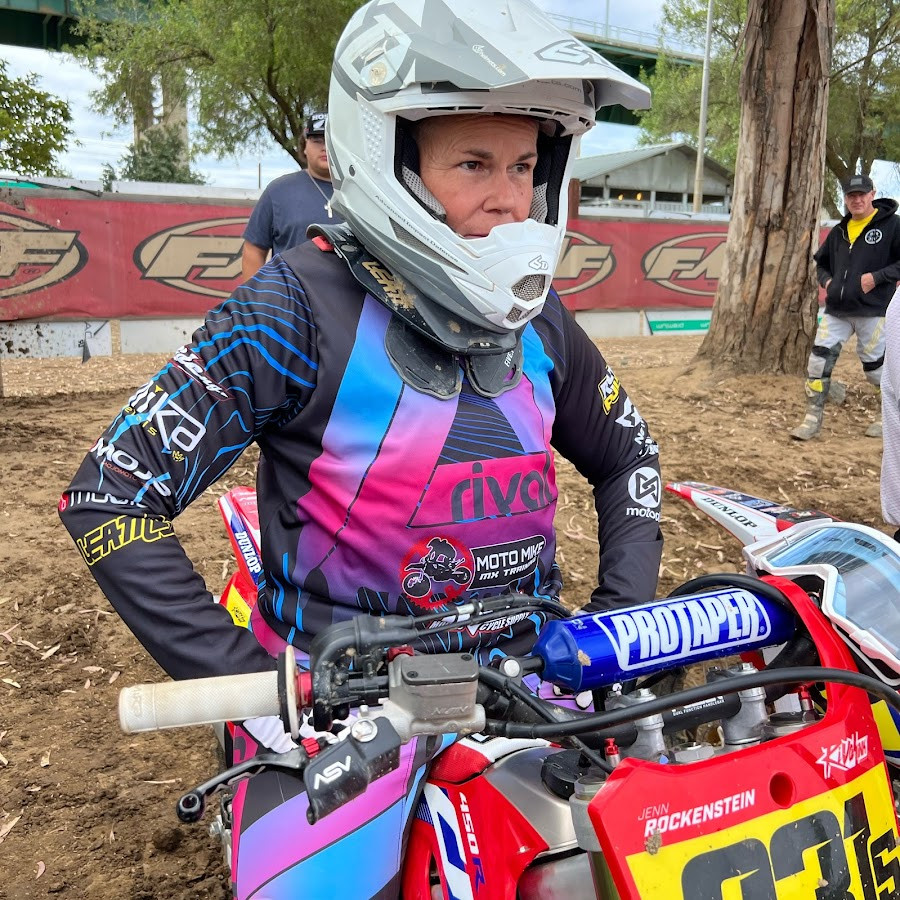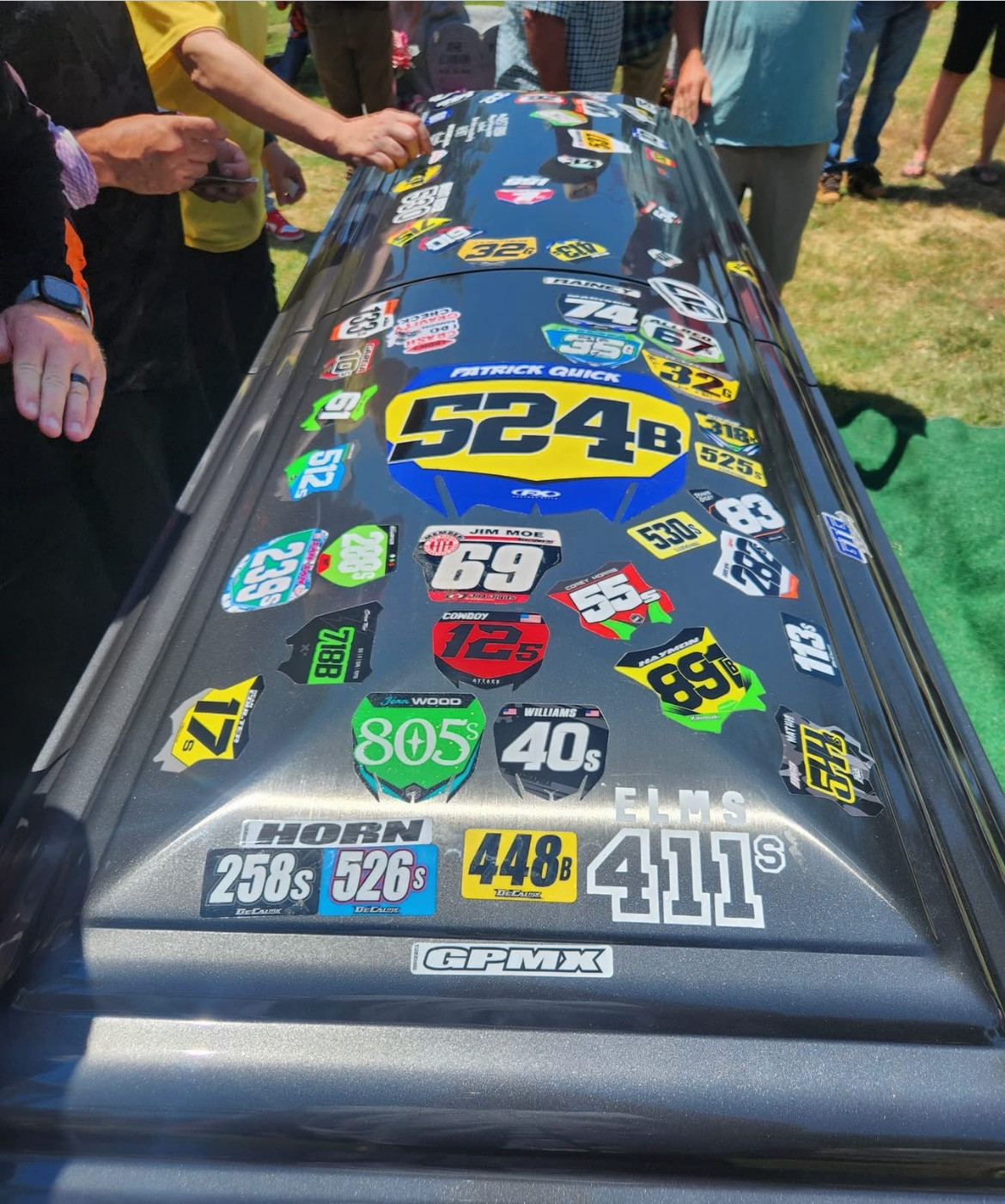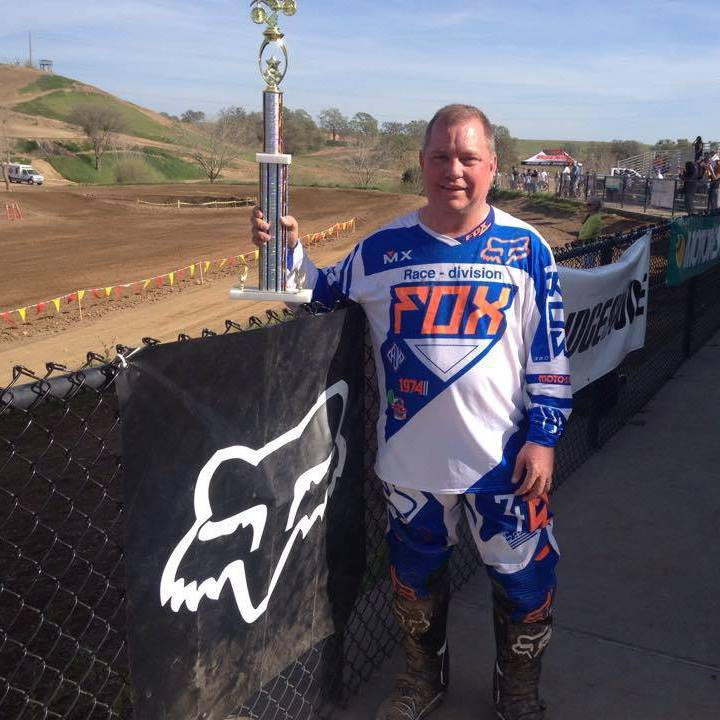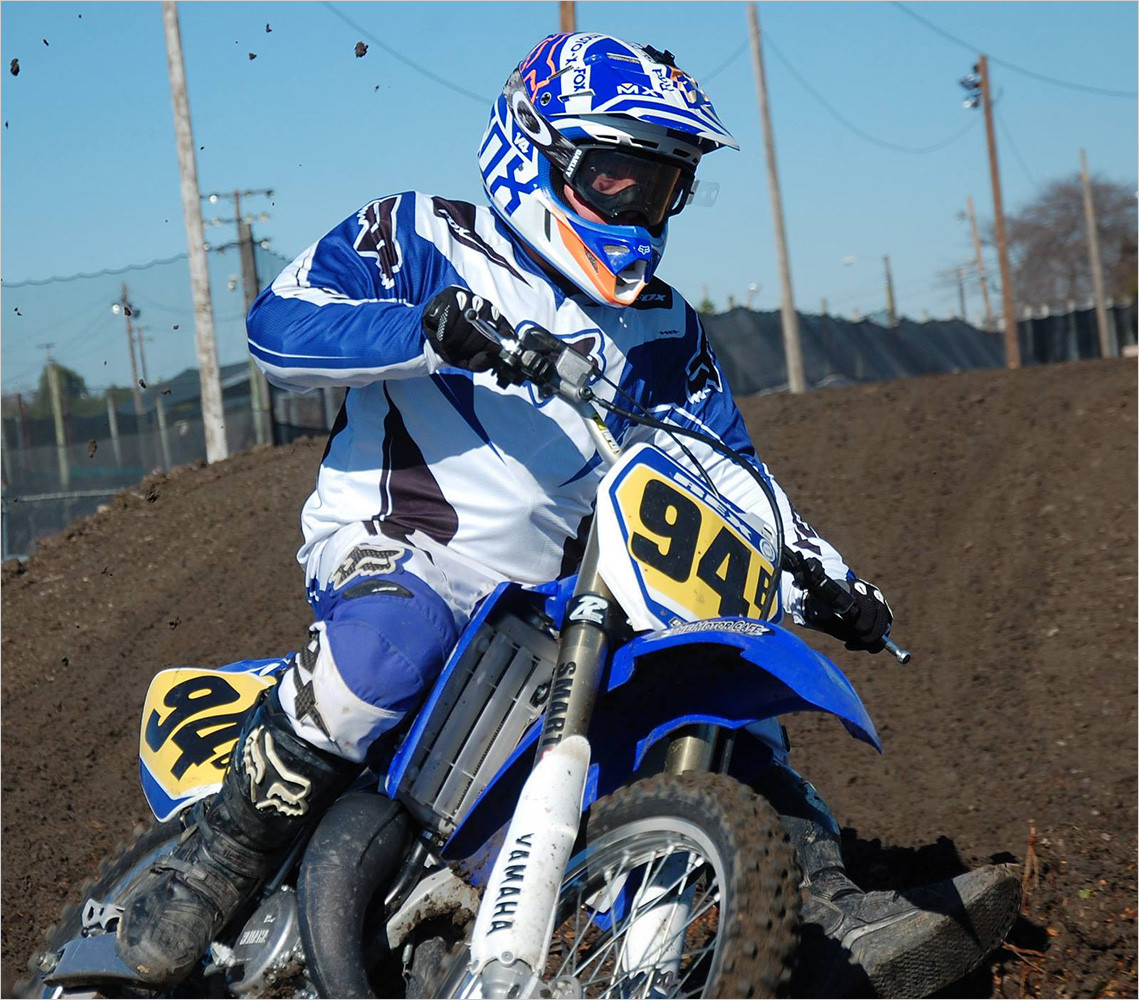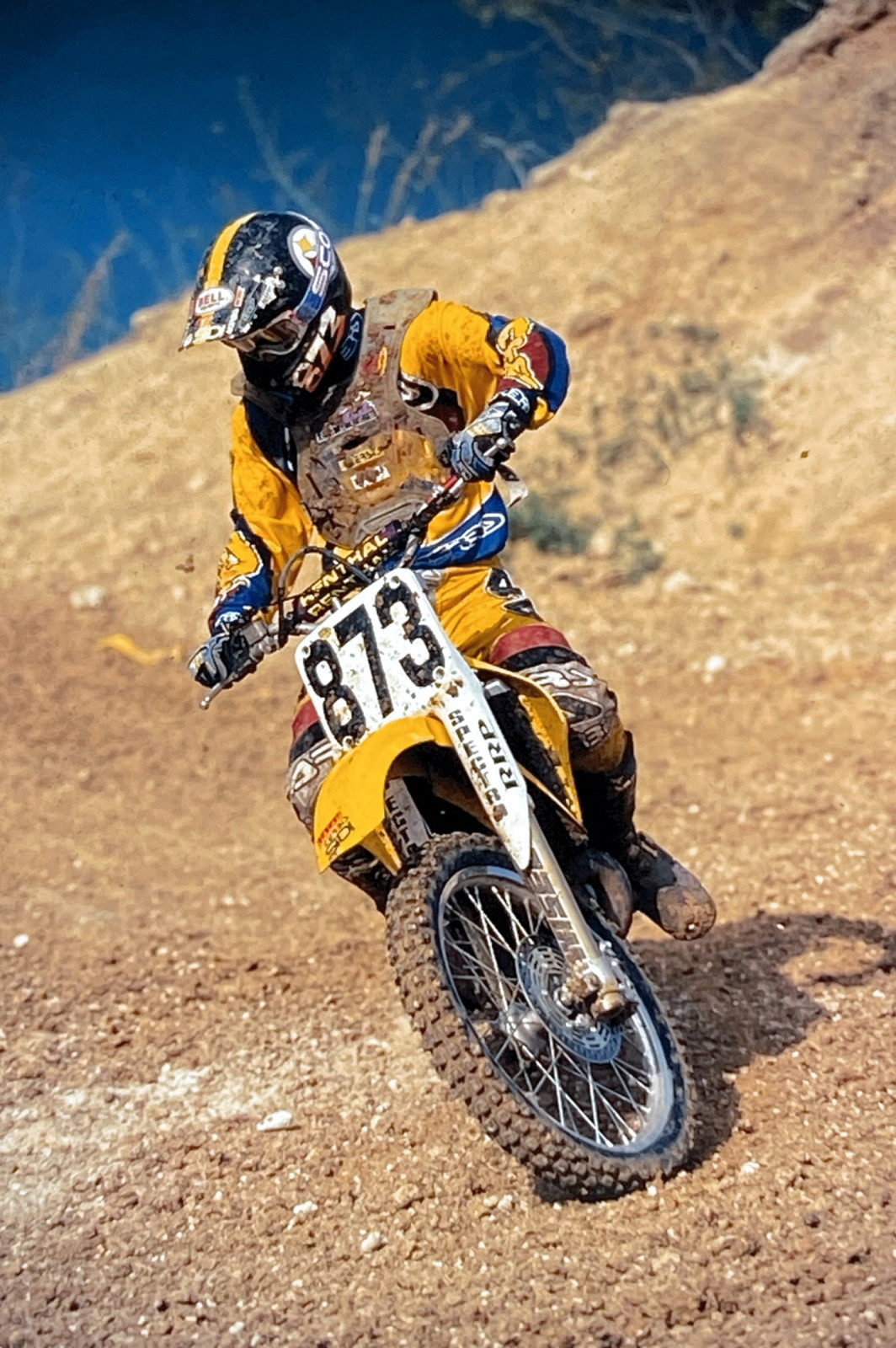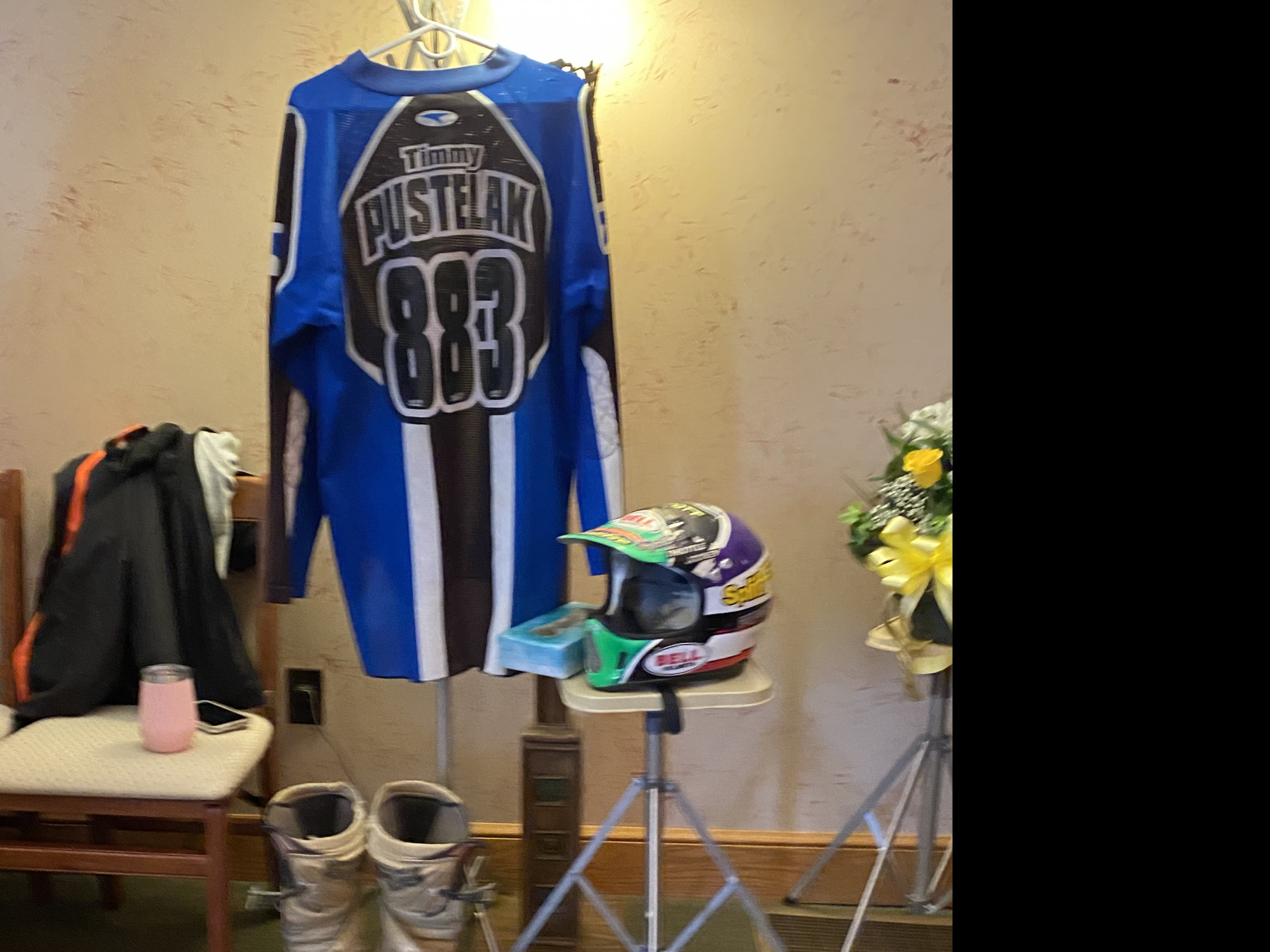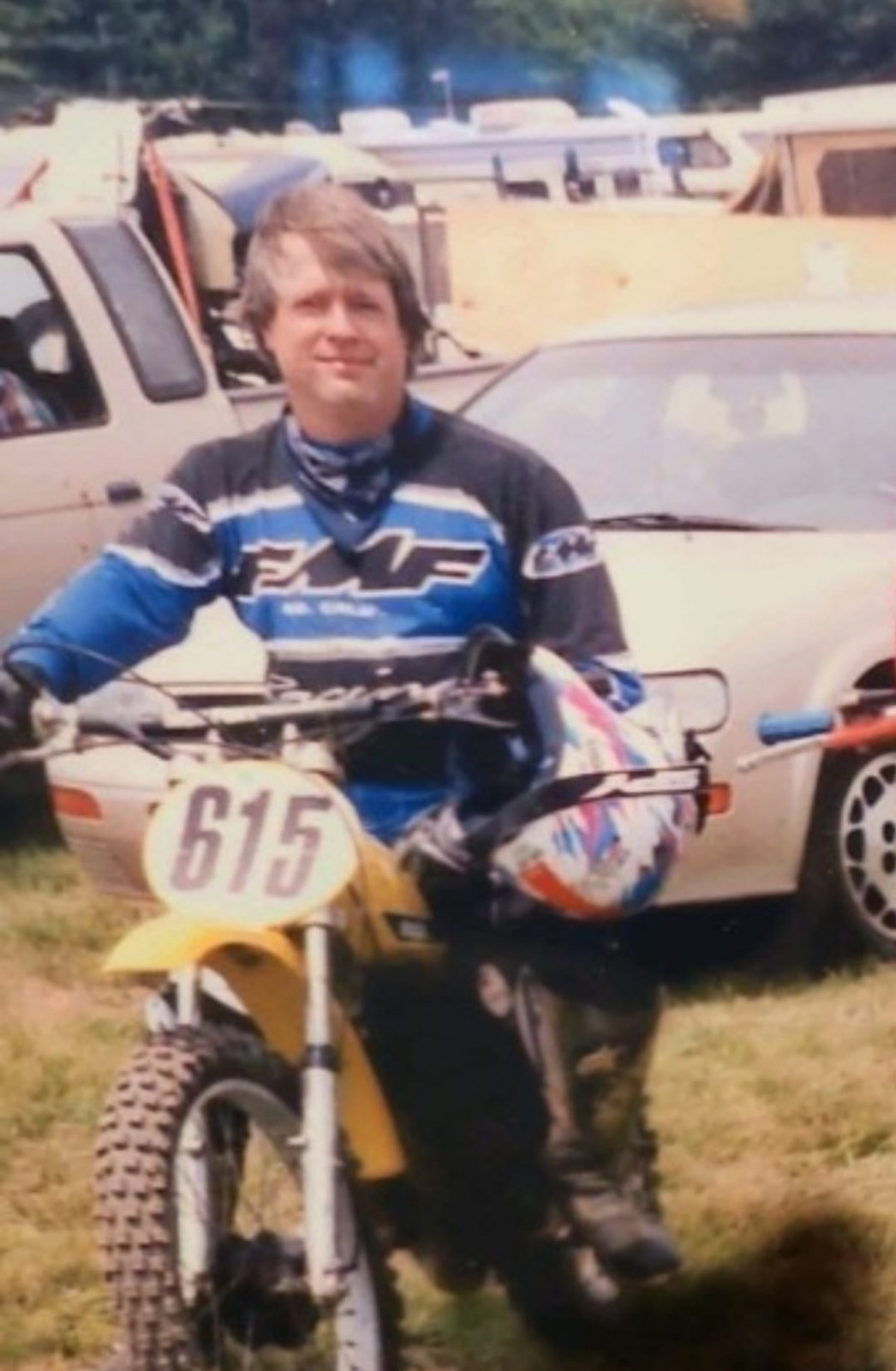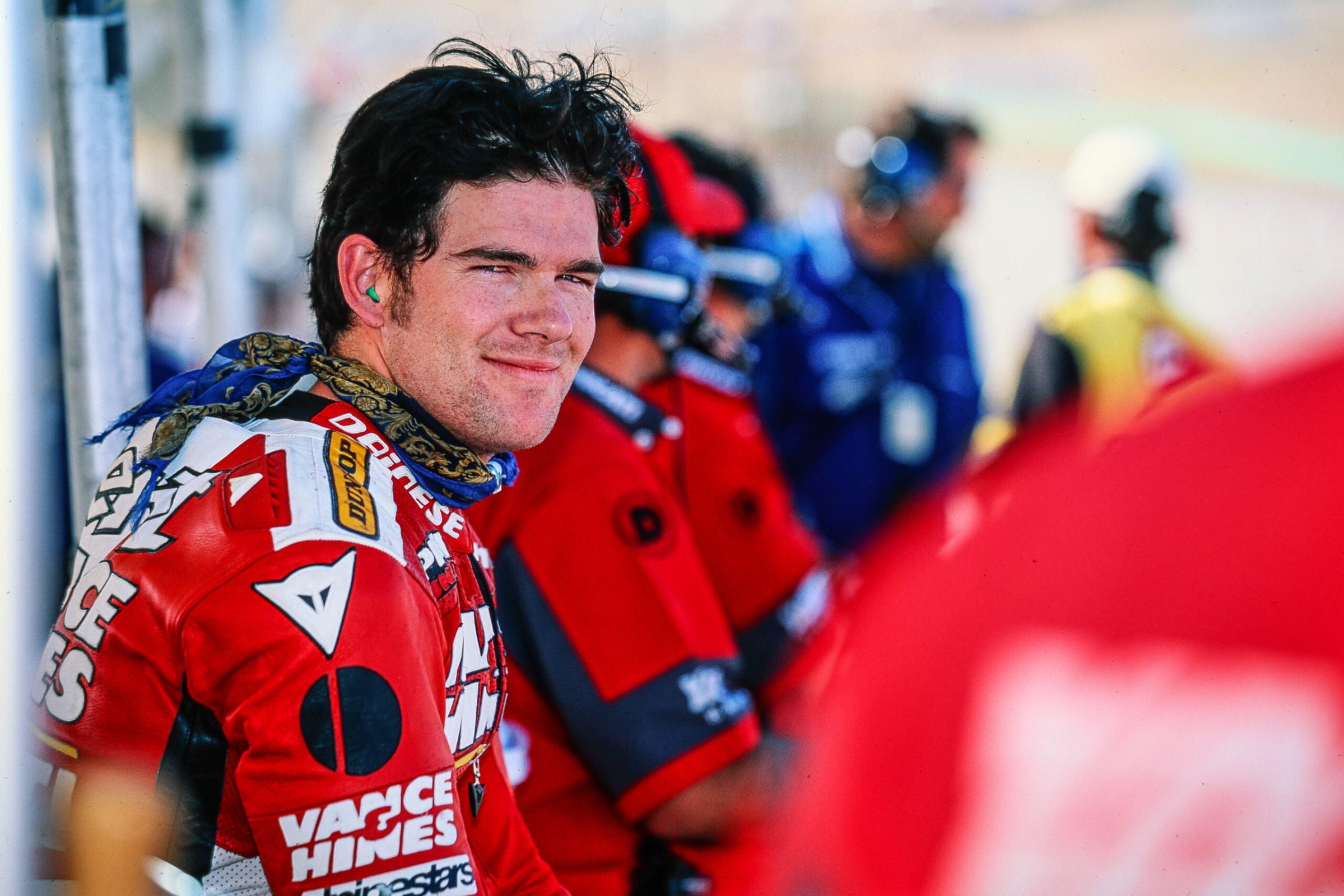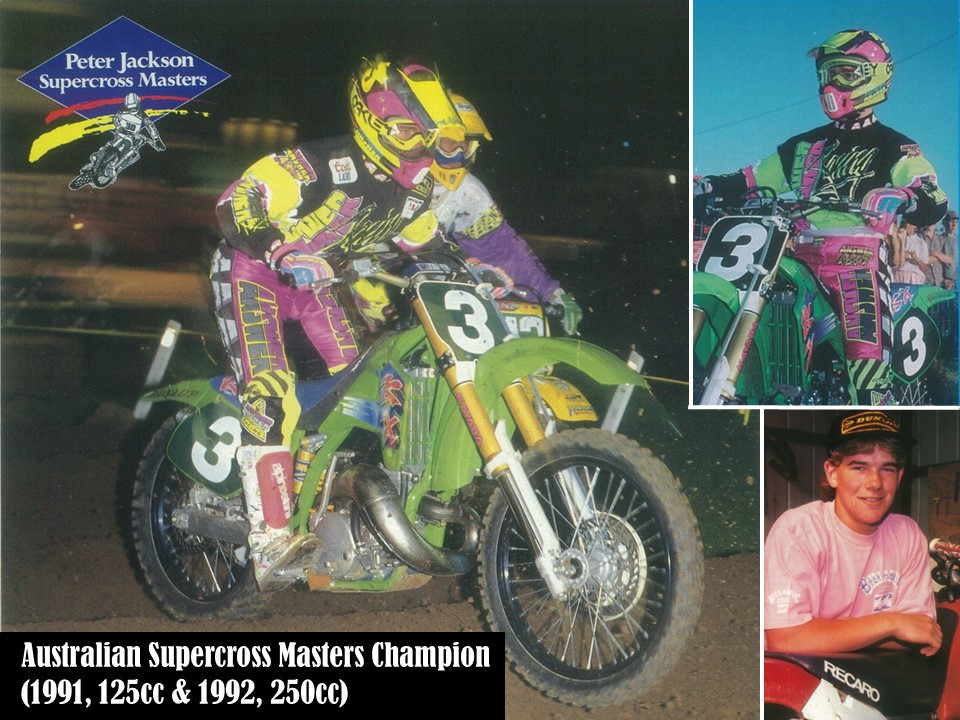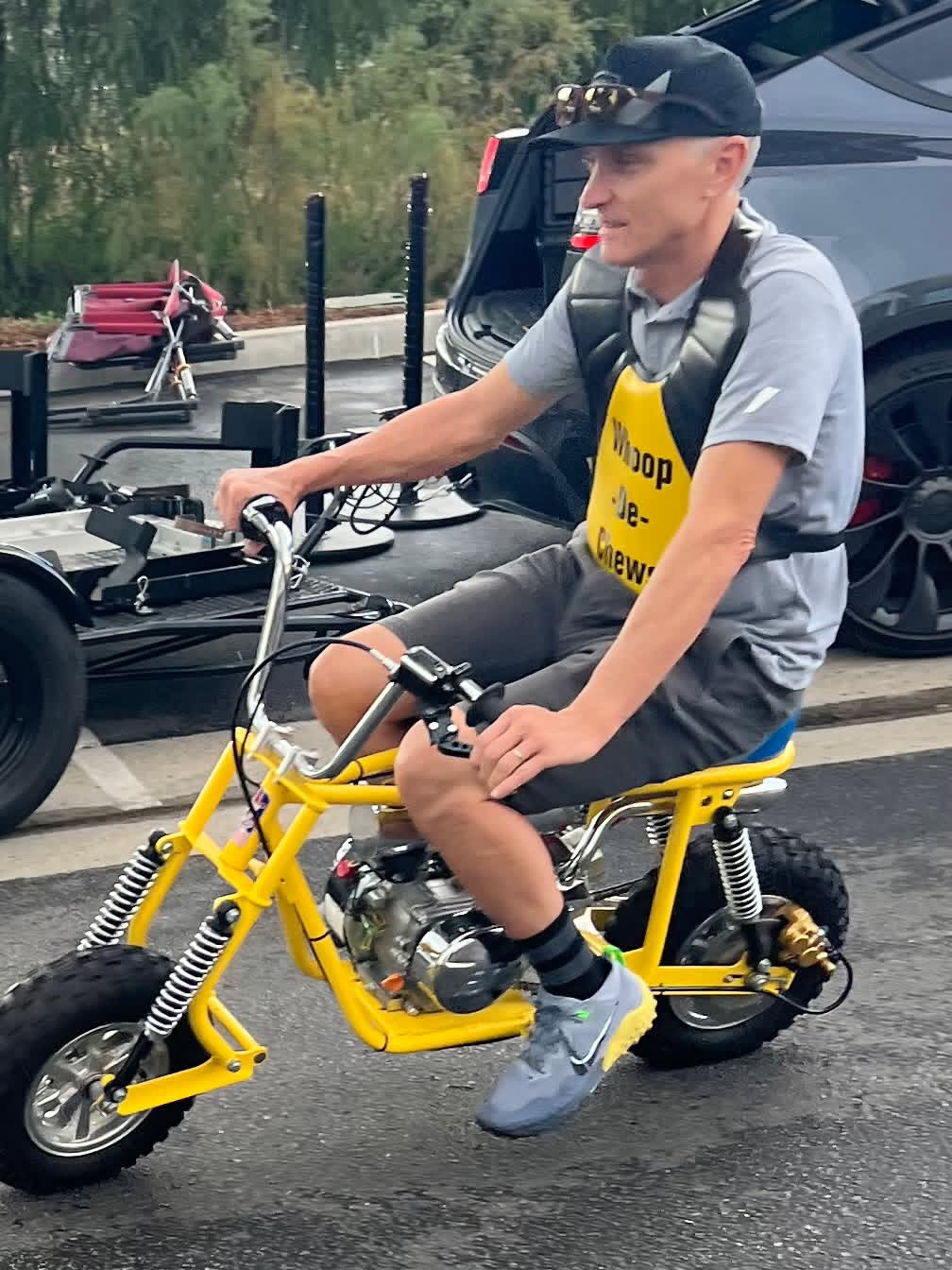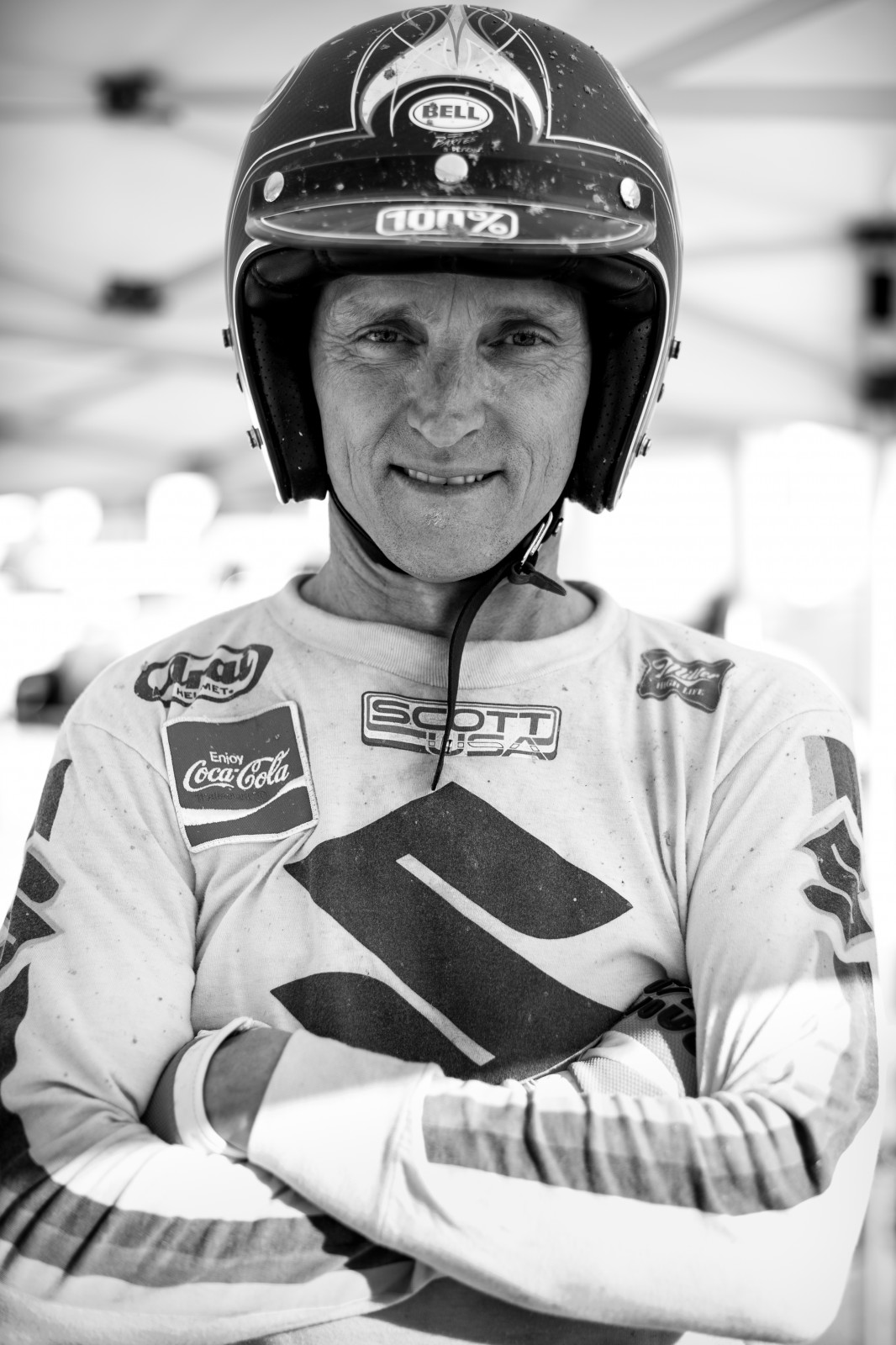We close our eyes and another year goes by….
On the last day of every year, we take time to remember some of the friends and fellow motorcycling enthusiasts we’ve lost along the way. With a nod to the New York Times’ annual requiem about the lives others lived, we offer our thoughts and condolences to all of those who lost someone special in 2024. With apologies for not being able to include everyone, these are the Lives They Lived…
If we ever finally get around to carving out that proverbial Mount Rushmore of American motorcycling, the off-road rider’s face that will be the ever-smiling one of Malcolm Smith. (Okay, North American motorcycling, as he was actually born on Salt Spring Island in British Columbia, Canada.) A gifted rider, a wonderful ambassador, and a generous human being, he introduced the world of dirt bikes to multiple generations of enthusiasts through his star turn in Bruce Brown’s motorcycle masterpiece On Any Sunday. Smith was one of three central figures in the film, along with Grand National Championship competitor Mert Lawwill and the actor Steve McQueen (or “Harvey Mushman” as far as the concerned studio bosses go). The film was the first positive mainstream splash the collective sport had ever been fortunate enough to have. We all know someone who was directly influenced by it and got into motorcycling as a result. I know that my own dad saw the movie in 1972 and that very same weekend went looking for the closest local track he could find. The entire GNCC Series, which is soon to begin celebrating its 50th anniversary, was derived directly from the scenes of the Lake Elsinore Grand Prix in the movie.
But Malcolm Smith was much more than that one movie. He was a world-class rider, a gifted businessman, a noted philanthropist, a strong advocate for the rights of motorcyclists, and just an all-around fantastic human being. He backed all of that up with his eloquence and kindness, as well as an entire garage full of trophies, medals and cups from races up and down the Baja Peninsula, the Southwest Desert, Six Days events all over Europe, and much, much more. Come to think of it, when they carve him out of whatever mountain they choose, his visage should include a Team USA “skunk” helmet, and a gold medal draped around his neck.
Malcolm Smith was 83 years old when he passed away on November 26 from complications from Parkinson’s Disease. Cycle World reported the news with a very accurate introduction: “Perhaps the most legendary of all motorcycle riders…”
Mary McGee had a lot in common with Malcolm Smith. She was an extremely versatile rider. She completed the Baja 500 solo. She raced automobiles and trucks as well. She was friends with Steve McQueen. And she was incredibly influential for generations of riders that followed. Both are pioneers that were inducted in the AMA Motorcycle Hall of Fame. And whereas Smith was the subject of the documentary film On Any Sunday, McGee was the subject of an ESPN 30-for-30 documentary called Motorcycle Mary.
At a time when women weren’t allowed to compete in motorcycle races Mary McGee went to bat for the future. She battled the FIM and the AMA and other sanctioning bodies for a woman’s right to participate, and she won, becoming the first woman to hold an FIM license in the U.S. When she was inducted into the Hall of Fame she said, “It’s a wonderful journey. It’s not whether you finish first, second or last. It’s the struggle to finish. It is the journey of your life.”
There was one more sad coincidence. Malcolm Smith passed on November 26, 2024, one day before Mary McGee passed on November 27, 2024.
Brian Tomlinson was a policeman in the United Kingdom for 30 years. When he wasn’t helping to keep the peace in his community, Tomlinson was out riding street bikes or out at motocross tracks like Bradfield, where he enjoyed watching his boys ride as well as everyone else—he helped out as one of the main flaggers. From the moment he purchased his son Fred a second-hand Yamaha YZ125G the Tomlinsons’ lives included motocross. And that’s Brian riding at Matchams Park back in the day aboard one of his son’s white ’81 Yamaha YZ250, smiling despite the conditions, wearing what looks like his shoes from work rather than motocross boots. The Tomlinsons enjoyed motorcycles together for decades together. Unfortunately, Brian Tomlinson, the patriarch of the family, was diagnosed with dementia. He passed away in the summer at the age of 91. Godspeed, Mr. Tomlinson.
Keith Parker was little more than a trail rider in Louisiana, riding bikes like his beloved 1973 Suzuki TM400 Cyclone, which the late Rick “Super Hunky” Sieman described as “the widowmaker.” He got out of riding for a while, but then his sons Chad and Heath got into racing, and suddenly they were off to the big youth and amateur races, at least as many as they could afford. Chad became quite good, earning himself a Kawasaki Team Green ride. In 1985, at the very first AMA 125 Supercross at Jack Murphy Stadium in San Diego, Chad Parker finished third overall behind Todd Campbell and Tyson Vohland. Finishing fourth was future FIM World Champion Bob Moore.
As it turned out Moore wasn’t the only future FIM World Champion in that race. Chad Parker was one too. When things didn’t quite work out here in the states, Parker was invited by Billy Liles to come to Italy to try his hand. By 1989 Parker was good enough to get himself a KTM factory-supported ride for the 125cc World Championship. He would be teammates with another couple of ex-pats, Californians Mike Healey and the aforementioned Bob Moore. By this point Parker was riding under his real first name due to a clerical error, which was Trampas, and later that year Parker become the first American to win the 125cc world title. Two years later, Keith Parker’s son became the first American to win two world titles, as he captured the 250cc crown while riding for Honda. After he retired, Trampas Parker was inducted into the AMA Motorcycle Hall of Fame.
Keith Parker eventually got into racing himself, vintage racing, and in 2011 he won himself an ARHMA Championship. He and his wife Becky were well-known in the southeast motocross circles for their hospitality, pit-area cooking and Keith’s ability to fix just about anything type of broken-down vehicle or air conditioner. Mr. Parker had been welder by trade throughout his life (except for when he was in Europe with his son), and his lungs paid a heavy toll. When he came down with double pneumonia this fall, he was sadly unable to fight it off. He will be sorely missed down by the creek at Loretta Lynn’s where Keith and Becky always parked.
There was another American rider, besides Parker and Moore, that was riding the 125cc GPs for KTM in 1989 for KTM. From his very early days as a SoCal minicycle prodigy Mike Healey showed great promise as a rider but also the kind of fierce independency that would see his parents drop him off at Saddleback Park and just let him ride all day. He had factory rides with both Honda and Suzuki while riding 80s. By the time he turned pro in 1985 and started winning 125 SX events as a Suzuki factory support rider he was garnering a reputation as something of a wild child. When he shaved his hair into a mohawk and ended up on the podium and was told to take his hat off, his Suzuki bosses were so furious with him that he was summarily fired. Soon no other team in the states wanted to touch him, so Healey headed to Europe, just like Parker and Moore, first to ride a Cagiva and then in ’89 with KTM, where he turned his career completely around. The final standings for the hard-fought 1989 FIM 125cc World Championship was: 1.) Trampas Parker; 2.) Alessandro Puzar; 3.) Mike Healey; 4.) Bob Moore.
Two years later Healey and Parker went at it, only this time for the 250cc World Championship, with Parker on a Honda and Healey still with KTM. It came down to the last race in Japan, where Honda had sent U.S. National #1 Jeff Stanton over to participate in front of the Japanese bosses (and Kawasaki likewise sent Mike Kiedrowski for the 125 class). Stanton won, but Healey felt that Stanton had unfairly inserted himself into the championship picture and blocked him, so he flipped Stanton off in the middle of the race and then had words with him afterwards. Parker won the title by four points.
The next year, Healey was signed by Bieffe Suzuki to race 250 GPs, but it was downhill from there. He fought with his young teammate Stefan Everts as well as team manager Sylvain Geboers and ended up leaving the team as soon as the series ended. He returned to America and had a career ride in the Steel City 125 National, riding his Suzuki RM125 practice bike and winning the second moto from soon-to-be champ Jeff Emig. It was his last hurrah as a professional racer, as Healey’s attitude to actions made him too toxic for any truly competitive team to hire, though Tuf Racing did help him to fifth in the ’93 AMA 500 Nationals.
From there Mike Healey’s story gets dark. Very dark. His partying soon got out of hand, and he fell into the clutches of addiction. He was arrested several times and ended up in a California prison after trying to rob an elderly woman of her purse near his home in Costa Mesa. Later in life things seemed to be getting better, as he took on a new passion as a barber, as well as driving for various rider-share and delivery companies. But the bad years had left his health a mess. In July Healey was found in his bedroom, facedown, likely the result of a heart attack. He was 55 years old.
Sadly, the passing of Keith Parker was not the only loss for the family. Heith Parker had a front row seat to see his older brother Trampas’ racing career thrive all over the world. But his calling was not to line himself up behind the starting gate, but rather to work at the front of a classroom. Parker was a committed education administer with DeSoto Parish Schools in Louisiana, where he also enjoyed coaching football, as well as outdoors in general. He rose from his role as an Adult Education teacher to Director of Facilities and Operations. When he passed earlier this month after a long illness, DeSoto Parish Schools said of Heith’s work, “Over the last decade, his expertise and vision ensured our schools' safety, efficiency, and growth, leaving a legacy of excellence in every project he led. Mr. Parker's legacy is one of compassion, leadership, and dedication. He was a cornerstone of DeSoto Parish Schools, touching countless lives and leaving an indelible mark on our community. While his presence will be deeply missed, the values he embodied and the impact he made will continue to make a difference in DeSoto Parish Schools.” Heith Parker is survived by his wife, Barbara, his daughters Stephanie and Madison, his grandson Beckett, as well as his brother Trampas and his mother Becky.
Danielle Gray enjoyed horseback riding, karate, and motocross racing. She also loved helping others and went on many charitable missions to do good deeds—she even went to Uganda to help build a school. According to her friend Allyson Ahlert, "Danielle was an amazing daughter, granddaughter, niece, sister, cousin and friend to many. She has been recognized as a prodigy for her sport… Danielle has always had a passionate spirit and fearless attitude." In early January she was riding her dirt bike at Murphey’s MX in Texas when she hit a tree. She was 13 years old.
In September, her father Daniel Gray went back to Murphey’s MX to honor his daughter Danielle by racing on the same track. He posted about this emotional day on Instagram:
“The grief of losing a child is indescribable; only those who have lived through it can truly understand the pain,” wrote Daniel Gray. “Losing my best friend has completely changed my life, and loneliness has become a constant companion. Every day feels like dragging bricks, and the 13 years we had together were the best of my life. We did everything together, and she was daddy’s little girl. We ride for you, Danielle.”
Cameron Niemela was a highly-respected bike builder from Deer Park, Washington, with more than 400,000 followers on YouTube. He sold plastic- and metal-polishing supplies under the name Pryme MX that worked well in sprucing up old dirt bikes and anything else he got his hands on. A self-admitted “dirt bike kid” growing up, his videos were popular for not only his skill but also for the fact that he seemed like a normal guy into building old bikes, without a huge budget or huge shop or super-expensive tools, sharing tutorials, tips and general insight on how to build an old bike. He was also battling leukemia for the past few years, and he was open and honest about his health journey. He seemed to have the advantage earlier this year, only to have the cancer return. Upon his passing in November his friends and followers at the website dirtbikelover.com called him “The Father of Restoring Dirt bikes.” He left behind his wife Haley and their two small children.
“Beyond his mechanical skills, Cameron’s openness about his personal life created a deep connection with his community,” they posted of Cameron Niemela. “For years, he bravely battled cancer, sharing his journey with honesty and vulnerability. His updates, from setbacks to triumphs, inspired many who looked up to him not just as a mechanic, but as a person who faced life’s challenges head-on… leaving behind a legacy of resilience and dedication. His loss is deeply felt in the motocross and DIY communities, where his commitment to sharing knowledge and his Pryme MX polishing materials became trusted resources. His journey through mechanics and personal growth touched countless lives, and his memory continues to inspire those who share a passion for motorcycles and the spirit of never giving up, no matter the obstacles.”
Here is one of Cameron Niemela’s top videos, “The Incredible Rebuild of a $400 Dirt Bike”
Richard (Dick) E. Sidle graduated high school in 1960 and promptly enlisted in the U.S. Marine Corps, where he proudly served his country from 1960-‘64 during the early stages of the Vietnam War. When his service ended, he began working at Lebanon Valley Offset and later founded his first motorcycle dealership, the Bul-Pen, which is where his passion for motorcycles and entrepreneurship began.
In 1977, Sidle helped build one of the premier motocross tracks in the northeast, Sleepy Hollow Motocross Park near Fredericksburg, Pennsylvania. He sponsored and helped countless local riders who competed in the sport. Building on his love of motorcycles, Dick founded Lebanon Valley Honda in 1978. The Jonestown, Pennsylvania, motorcycle shop later became Lebanon Valley Cycles (LVC) and a top-10 Honda dealer. Sidle owned the shop until he retired five years ago. Sidle was a member of the PA Motorcycle Dealers Association, AMA District 6, and was a lifetime member of both the AMA and the NRA. In 2021, he was inducted into the District 6 Motocross Hall of Fame.
When he wasn’t working, Dick loved to travel the country on his motorcycle, sometimes attending big motocross races, creating lifelong memories with family and friends. His kindness and generosity earned him the nickname “Sweetness.” He had a larger-than-life personality and was always willing to give the shirt off his back to help others. Dick Sidle lived life to the absolute fullest. He was 81 years old.
Ricky Hampshire grew up racing motocross and off-road in Tarpon Springs, Florida, and he was good enough to finish fourth overall in the Junior +25 class at the ’98 AMA Amateur National Motocross Championship at Loretta Lynn’s Ranch. A professional career wasn’t in the cards for him, but he enjoyed racing enough to get his three kids—Marisa, Sara, and RJ—into motorcycle racing as well. In 2003, all three kids qualified for the big race in Tennessee, with Marisa winning the title WMX (12-15) title. Years later RJ would do one better, winning both Pro Sport classes in 2014. From there RJ began his professional journey, with his father Ricky supporting and helping him all along the way.
Ten years later, on May 11, 2024, Rockstar Energy Husqvarna factory rider RJ Hampshire won the Monster Energy AMA Supercross Championship in the 250SX West Region, accomplishing a goal that his entire family could share in.
On November 12, RJ Hampshire posted the following:
“This man’s heart was gold and clearly couldn’t handle life anymore. The stories, the lessons, the heartbreaks, the highs and the lows will never be forgotten. The last couple years have been rough and I won’t shy away from that. No one’s perfect and we had our differences but I’ll remember my dad as the most caring, toughest and hardworking man. If you’ve spent time with him, you’d say the same. He was a great man and loved by many. My dad passed away yesterday at the age of 54 and lived a life I’m sure he’s grateful for. I know how proud my dad was of me and the family. Thank you for always showing up. I love you Dad! Rest in peace”
James “Jammer” Golliher Jr. was preparing to compete in a Hare Scrambles team competition in November when he went out on the sighting lap. He was back with his friends at the Sandusky Valley Riders (established in 1928) in Tiffin, Ohio, to race there for the first time since 1981. Golliher, who worked for Jeep for some 40 years, had been riding and racing motorcycles since he got his first bike in 1974, a Honda Trail 70. He and his father enjoyed going to the races together all over the country as Team Jammer, racing both modern and vintage dirt bikes. Golliher was a member of both the AMA and AHRMA, as well as the United Auto Workers.
Shortly before the event was to start the call came in that a rider was down on the track. Track personnel rushed to the scene to find that it was the Jammer who was down. CPR was administered and the 65-year-old Golliher was rushed to a nearby hospital, but doctors could not revive him. The Sandusky Valley Riders posted the bad news as well as their condolences to Jim’s family. Several members of the Toledo Trail Riders were also there and afterwards they posted that Golliher “was a staple in the racing community, and a fierce competitor. Our sport we all love isn’t always fair or kind, but what we do know is he was doing what he loved, and he was very good at it.”
In the early days of American motocross and stadium motocross announcer Larry “Supermouth” Huffman could be heard everywhere: Saddleback Park, Angel Stadium in Anaheim, Carlsbad Raceway, Ascot Park, the Los Angeles Coliseum… Huffman, a radio deejay, who announced the first Superbowl of Motocross in 1972, instantly became an integral part of what the world would know as supercross, as his unmistakable voice could be heard over the loudspeakers of stadiums and racetracks and on television for many years to come. And every fan surely has a Larry Huffman signature line or two that they will never forget, like "Those ruts are so deep I just saw a German soldier stick his head out!" Or, "He's on him like a Hare Krishna on an airport traveler!" and of course, "He’s tougher than a $2 steak!"
Huffman was inducted into the AMA Motorcycle Hall of Fame in 2008, and deservedly so, as his voice and enthusiasm set the standard for every race announcer that’s come along ever since. According to his HOF bio, Huffman co-wrote and co-produced the motion picture On Any Sunday II, and provided announcer roles for numerous TV shows, including Charlie's Angels, CHiPs, Miami Vice, Fantasy Island, Knight Rider and more. And when Hollywood decided to take on supercross with the cult-classic ‘80s film Winners Take All, it was Huffman who called the scripted action.
In a full circle moment, Larry Huffman’s last appearance in a supercross-related project was his cameo in the new documentary film Pay Dirt: The Story of Supercross, which begins with that first race in the LA Coliseum that he announced back in 1972. He was 83 years old.
Ed Higgins was a 59-year-old woods rider from Sorrento, Florida. He was a moto guy all of his life, participating in numerous off-road series, including the Grand National Cross Country Series (GNCC), winning the Silver Masters +55 class at the Big Boar GNCC at Palatka just a couple of years ago. He was a member of the Florida Trail Riders, but he also enjoyed vintage motocross racing—he won his class at the Daytona Vintage SX a few years back too. By all accounts Higgins was “the dude” in how laidback, fun, and easy-going he always was. Higgins was riding in the Ocala National Forest in October when he hit a tree. He was taken by ambulance to a nearby hospital, but he did not survive his injuries. Wrote his friend Jacqueline Ross on her Off the Cuff column for DirectMotocross.com, “Ed lived his life to the absolute fullest and impacted the lives of so many people. I’ll forever remember his encouragement, passion for two wheels, and his love for life! Godspeed, Ed.”
Back in the 1970s and early ‘80s, as the sport of motocross and supercross were growing up and getting more popular as well as more serious, two of the most highly-respected mechanics in the pro pits were Eric Crippa and Jeff Clark. This was during a time when the riders/mechanic relationship was much closer and more integral than it is now, as teams use state-of-the-art big rigs instead of single rider box vans, when the mechanic did almost everything on the bike himself rather than a team of engineers specializing in suspension, engine mapping, and more. And when a rider won a championship, like Kent Howerton did in the 1976 AMA 500 Pro Motocross Championship, the mechanic—in this case Eric Crippa—also shared in the deep pride and success that came with it.
Eric Crippa was a decent racer himself as he grew up in Thousand Oaks, California, but he soon found that he enjoyed working on the bikes just as much. Gunnar Lindstrom hired him to work for Team Husqvarna in 1973 and he eventually was teamed with Howerton. And when Lindstrom left for Honda in 1979, Crippa went with him. When Roger De Coster got on board the following year as team advisor and tester, Crippa became his mechanic as they rode and refined all of Honda’s race bikes. This was at the height of the works bike era, and Roger and Eric did some incredible things together (along with Dave Arnold) to make Honda a dominant force. Along the way Crippa worked closely with Honda riders Chuck Sun, Steve Wise, Donnie Hansen, David Bailey, Johnny O’Mara, Ricky Johnson, Bob Hannah, and even off-roader Scott Summers—all of them AMA Motorcycle Hall of Famers. Later, Crippa would work with Honda’s media department, as well as production testing, until he retired a few years back. He passed away in May at the age of 74.
“Our sport has progressed greatly as a direct result of the hard work of Eric Crippa,” wrote his longtime friend Jim “Greek” Gianatsis, the renowned journalist and race reporter of Crippa’s era. “He has installed, tweaked, fixed, mended, and tuned his way through the Golden Age of Motocross and helped his factory riders secure multiple national championships along the way. Thank you, Eric, for your friendship and dedication to so many people in the sport, and always striving to make the bikes better. Godspeed.”
Jeff Clark had a very similar early career path to Eric Crippa’s, only his time in the motocross paddock was with Suzuki, and the man who brought him in was not Gunnar Lindstrom, but his pier in the industry, Mark Blackwell. He worked with all of Suzuki’s early U.S. legends—Danny Laporte, Mark Barnett, Kent Howerton (after he left Husqvarna), and more. But rather than stay with the OEM as the works era was ending, Clark became a regional sales manager for Oakley. That led to many other brands for distribution, which he continued doing for pretty much the rest of his life before passing earlier this year.
According to Blackwell, “Jeff was a very special person. A man of few words but very committed to excellence, focused and while he often seemed stoic, he was very thoughtful and had a soft side too.”
Blackwell explained Clark’s importance with the team with this anecdote: “Jeff's steady hand was very important in those early days with Mark Barnett. When we had almost no help, he did the work of three people. Then, as Barnett, Howerton, LaPorte and Team Suzuki got more successful, we sometimes had more people (from Japan) who wanted to help than we could handle. I'll never forget at the LA Coliseum, during practice, Jeff could hardly get near Mark's bike with the swarm of people trying to help. Jeff asked me sort of ‘WTF’ and I tried to guide him to be patient. Then, when Mark's chain came off, there was no one around! They were all sitting in the stands, and Jeff was back on his own! He never flinched. Just went back to work and got ready for the race. Just one of many memories of a really special person.”
Nuno Laranjeira was a Portuguese motorsports photographer who sadly passed away after having complications from a surgery, which was part of his battle with a rather aggressive form of melanoma. He was just 52 years old. According to his friends and colleagues in the sport, he was a gem of a human being.
“Nuno was one of the most gifted trials/motocross/enduro/rally/wedding photographers of his generation,” wrote Sean Lawless of TMXNews.co.uk. “While technically brilliant, his true genius lay in his eye for composition – the ability to see a shot that no-one else could, to frame an image whether action or static in a way that simply wouldn’t occur to anyone else. He was an artist who happened to choose photography as his medium.
“Nuno was really a friend to everyone he met, always a smile and a chat,” said Geoff Meyer of MX Large. “His dedication to his photography will always be remembered, but more importantly, his friendship to so many in the motocross paddock will be his lasting memory for so many of us. Nuno often worked for a lot of the leading magazines, teams and promoters in the UK in his time there. He moved to England to try and make a living from the sport, and for a handful of years it was possible, but as we all know, working in the media in Europe isn’t easy and many are trying to get the same piece of pie. Eventually, Nuno realized that and moved back to Portugal. He also moved back to look after his parents, who were in the later years of their lives and he wanted to spend more time with them and make sure their final years could be enjoyed as much as possible. It didn't surprise me he wanted to take care of his parents, that's the sort of bloke he was. I guess the one positive from his passing, is he got to spend that time with his family.”
Added Lawless, “Nuno knew he was dying but only revealed how serious his condition was a few months ago. Full of dark humour right up until the end, on our last Skype call he motioned towards the room where his parents were watching TV, saying, ‘It’s like a f**king competition here to see which one of us dies first!”
Jeff Cabral was a mechanic in Rhode Island who worked out of his own garage. He enjoyed riding dirt bikes, working on automobiles and motorcycles and just doing anything outdoors with his teenaged son Caiden. He was also planning on asking his longtime girlfriend to marry him—he had even bought an engagement ring and was planning on soon surprising her with it. In early October, Cabral went riding with Caiden at the MX23 track in Brookfield, Massachusetts, when he hit an obstacle, went airborne and came down hard on the handlebars with his chest. Cabral, 42 years old, was rushed to a nearby hospital but did not make it.
After the crash, according to a local news outlet, Caiden, told his father’s girlfriend, Danika Hardwood, about the engagement ring his dad had purchased.
"I opened the drawer, and there was a little box in the back of the drawer, and this was in it. I just would have loved to see him actually propose," Hardwood said. "Everybody loved him. Everybody.”
In the European motocross industry Wolfgang Srb was something of a power broker. He was a behind-the-scenes bureaucrat from Austria that climbed the ranks of the Federation Internationale de Motocyclisme (FIM), the ruling body for international motocross. He started out as an official with the Austrian Federation in the mid-1980s, at the same time that his countryman Heinz Kinigadner began winning 250cc World Championships. He soon joined the FIM Motocross Commission and became Vice President, then moved up to President in 1993. In those roles he helped consolidate the FIM World Championship with Giuseppe Luongo’s Action Group. A decade later, Srb became the FIM Vice President, then later became the FIM Europe President. He has aspirations to become the actual President of the FIM in 2018 but came up short in the voting. In 2019 he was appointed Honorary FIM Europe President and began winding down his career.
In June, it was announced the Srb had passed away after battling with an undisclosed illness. Said Giuseppe Luongo, now the President of Infront Moto Racing, which currently runs the MXGP series, “His life was dedicated to Motorsport and his family. He left his life as he lived his life, strong and proud, nobody had been informed about is illness and right up until that last moment he said that everything was OK. Not only was he great in his duties to the sport, but above all he was a dear, dear friend. He will be missed, but he will remain always strong within our hearts.”
Jay Duncan was one of those unsung heroes in the motocross world who use their cameras to make photos for local riders and their families to enjoy and remember. Duncan was born in Ohio but found himself in Florida. According to his obituary, “Jay was a man who put 100% into every aspect of his life, family, community, work, and play. He was a professional photographer from age 17-70. His love of nature came to life in the beautiful way he captured our local landscapes and wildlife... Jay’s delight in sports, both watching and playing, led him to the Little League fields and motocross tracks, where he was often found capturing moments of triumph and joy of the players and offering encouraging words to all he met. His gift of photography touched so many hearts as he wonderfully captured the perfect shots for all of his ‘families.’”
Among those families was the Keylons, a multi-generational moto family that Duncan shot often at tracks around Florida. Upon news of his passing on June 1, Kenny Keylon wrote, “Jay was a great photographer. I have many of his photos including our wedding photos—Jay shot our wedding for Renee and I.”
Brian Anderson was an Irish motocross rider and fan, as well as a talented artist. He attended the National College of Art and Design and enjoyed making sketches of his favorite riders and shared them often on social media and various forums, and when he could, handing them over to the riders themselves. “He lived and breathed moto,” posted a friend after Anderson, 41 years old, crashed heavily while riding one afternoon in July. He was rushed to Beaumont Hospital in Dublin and placed on life support, but his injuries proved too much. He is survived by his mother Judy and his sister Laura. In a terrible coincidence, Brian Anderson had lost father Willie three years earlier when he was hit by a car while riding his own motorcycle. In September the Willie & Brian Anderson Motorcycle Run was held to raise money for the family.
Motocross Ireland posted, “The entire motocross community has been rocked by the untimely passing of our friend Brian Anderson. The MCI Motocross Committee would like to express their deepest condolences to Brian’s family and friends. I expect that most of us will have met Brian at the track at some point over the past 25+ years or indeed experienced his motorsport art. A talented rider, artist and a gentleman. In the paddock Brian will be remembered for his extensive mx trivia, set up advice and his warm smile. For all of us, and especially those who knew him well. his kind character will be dearly missed. Rest in peace #129.”
Tom Heininger was inducted into the AMA Motorcycle Hall of Fame in 2003 for a multitude of reasons. Heininger co-founded Webco, a popular aftermarket and accessory company for motorcyclists in the ‘60s and ‘70s, just as the market began booming. He also served as president of the Motorcycle Industry Council and played an influential role in the formation of the Motorcycle Safety Foundation during his tenure. He also cofounded a couple of very successful Honda dealerships in the Los Angeles area and spent his entire life fighting for the rights of motorcyclists.
“Tom brought a tremendous amount of spirit, enthusiasm and value to the motorcycle industry as it was evolving in the 1960s and ’70s,” said JR Kelley, a fellow AMA Hall of Famer. “He added greatly to the business for the benefit of all. Tom loved motorcycling. He made money from it and put a lot of that back into the industry.”
One of the ways Heininger and his partner and friend Bob Hughes gave back was through sponsoring local SoCal racers in various disciplines. They also got behind Saddleback Park, which had opened in 1968 as a sort of theme park for dirt bikes. As a result, one of the most iconic parts of the legendary track was christened Webco Hill. When Tom Heininger passed in early January, he was 97 years old.
In the 1970s, Flyin' Mike Brown was another one those superbly-talented SoCal minicycle prodigies, competing every weekend with the likes of Jeff Ward, Brian Myerscough, AJ Whiting, Jim Holley, and more. He was a factory rider for the Italy-made Indian minicycle company, and he was often featured in Minicycle Action/BMX Plus magazine. He had his own aftermarket hop-up business run by his dad, and he traveled the country hitting big minicycle races like the THOR Mini O’s, the NMA Grand Nationals, the GNC Spring Nationals in Texas, and more. Brown rode his first outdoor national in 1980, finishing fifth at Hangtown in the 125 class behind Mark Barnett, Broc Glover, Myerscough, and Johnny O'Mara. But he was pretty much done racing the national circuit after 1982, as a couple big injuries robbed him of the chance to show his full racing potential.
Years later Brown's life would take a terrible turn after he reinvented himself as a distance-jumping daredevil, a niche genre that was revived in the wake of all those free-riding videos like Crusty Demons of Dirt that became a thing in the nineties. Brown was doing a show in Twin Falls, Idaho, not far from where Evel Knievel tried to notoriously failed to jump Snake River Canyon in his X-2 SkyCycle. He was supposed to jump across a football field from a steep ramp and then come down on a landing ramp placed atop a flat-bed semi-trailer. Brown got wheel spin in the damp grass on the approach came up way too short—he tried to bail off the back of the bike as he landed and slid under the trailer. The ugly crash that followed is not for the squeamish—be warned—but you can watch it here on YouTube:
Brown was nearly killed. He lost his left leg, and he would be in a wheelchair for the rest of his life. He stayed a part of the SoCal moto community, and was a big part of the Fasthouse family, which was born out of the old Indian Dunes track, Brown's home track growing up in nearby Saugus. Brown did the best he could to live as normal a life as possible, but with his debilitating injuries that could not have been easy. Hopefully, somewhere up there in the heavens above, Flyin’ Mike Brown is back on a bike and flying again.
Eric Arlet was also a promising young minicycle rider, only he was from the other side of the country. The Arlets were a prominent Pittsburgh motocross family that were a fixture of the AMA District 5 scene in the 1980s and early ‘90s, as Eric and his older brother (Wayne) and younger one (Jeremy) were at the races pretty much every weekend except for winter time. Eric raced the 51cc Pee-Wee class at the very first AMA Amateur National Motocross Championship at Loretta Lynn’s Ranch in 1982, finishing eighth. His all-time best finish at the ranch was a sixth in 1987 in an 85cc class that included the likes of Jimmy Button, Buddy Antunez, Tim Ferry, Scott Sheak, and more. Arlet stopped racing long ago, picking up bowling and golfing and cooking as his weekend passions instead, but was there cheering his nephew Cody on when the next generation of Arlets got into motocross. Eric passed away in November at the age of 51 after an extended illness. For his celebration of life and funeral service his family placed dozens of photos in the reception area, many of which were from those cherished days at the dirt bike races with his family and friends.
Austin Behrens was a fast expert rider from New Jersey was part of a multi-generational family of motocross men. He also had a passion for teaching younger, less experience riders how to get better. His A7 Training Motocross Enhancement program was very popular with students from all over the East Coast. He was also an electrician by trade, working for K2 Electric in West Milford, New Jersey, even as he grew his training business, which was his real passion. Behrens was practicing at a local track on June 2 when he went down hard. He was 28 years old.
A memorial ride was held in his honor at Hurricane Hills MX, where he often trained riders. And his A7 Training continued as Austin’s friend and fellow trainer Coach “Ray Ray” Sullivan stepped in to help. His mother Bernadette Finn and his family also set up the A7 Austin Behrens Memorial Scholarship Program to help young riders. And they also continued his social media presence with inspiring words of encouragement for everyone, be it for on the track or life in general.
“Every life leaves a footprint in the sand of time, but the deepest and most lasting impressions are made by those who live with purpose and passion… When someone you love becomes a memory, the memory becomes a treasure. Find peace in the memories and carry their love with you always...
“Austin's life purpose and life passion became A7. As we continue on in this journey as A7 Family Motocross, we carry that purpose and passion for Austin everywhere we go… Austin's memory and legacy lives on in our hearts, our minds, and in everything we do. Austin's dedication and direction put a fire in our souls. He inspired us to be the best and to reach our own goals. His lessons will always be remembered. Long after the races have been raced, for the lessons he has taught us, our dreams have only begun. He's taught us about commitment, perseverance, and hope. And as we go through this crazy thing called life, he's provided us many tools to cope... to cope with our struggles, our failures, and our success… Because Austin was our coach, we fight the good fight!”
Dick Robbins was born too early to become a well-known motocross star, as he started racing in 1957. By the time he was a teenager in the mid-1960s professional motocross was barely a thing in America, and supercross was still years away from being invented. But Robbins loved racing, and he was soon considered one of the fastest riders in the Midwest, with support from his parents motorcycle dealership called Robbins Sport Cycles. That led to sponsorship from Husqvarna, then a Swedish brand that was making the best dirt bikes on the track. And when the brand invited Dick and two other young Americans, Mark Blackwell and Bob Grossi, to Sweden to visit the factory in September 1970, the three of them suddenly found themselves on the starting gate and making history at the 1970 FIM Trophee des Nations in Knutstorp, Sweden, as the first incarnation of Team USA. Just like that, they were out on the track with European greats like Joel Robert, Bengt Aberg, Heikki Mikkola, Sylvain Geboers, Gennady Moiseev, and more. Unfortunately, it was a mudder, but that didn’t slow Robbins, who was used toriding in weather much different than what Blackwell and Grossi were used to seeing in California where they lived. Robbins finished 24th in the first qualifier, the first individual moto finish ever for Team USA. But because they only had three riders to everyone else’s five, Team USA did not qualify for the actual Trophee race for 250cc motorcycles.
Robbins continued to race for a few more years after that big adventure, but there wasn’t much in the way of opportunity to be a full-time professional yet. He did go from the Husqvarna ride to Spanish-made Ossa motorcycles but soon parked his professional aspirations. He continued racing locally throughout his life. In 1985, he raced Loretta Lynn’s in the Senior +40 class and finished ninth overall.
In recent years Dick Robbins got into building and showing vintage muscle cars, but his early contributions to American motocross were recognized at both the 2018 FIM Motocross of Nations at RedBud, in his home state, as well as by guest appearances with the Legends & Heroes of Motocross, most recently at this year’s Nashville Supercross. Just a few weeks later Robbins, who was living in Tennessee, passed away.
If there was ever a two-wheeled kid who had a very cool young life it was Steve Skibel Jr. He grew up racing in the seventies and he was good enough to not only be a part of DG Racing’s amateur motocross team, but the DG Racing BMX team when it formed up as well. He was teamed with the like of Paul Denis on minicycles (that’s Denis in the middle of this old advertisement and Skibel #44 on the left), and with Stu Thomsen and Jeff Bottema on bicycles. And it was not because his father Steve Sr. worked at DG Racing, but rather because he was a gifted young rider in both disciplines. Skibel was a Saddleback regular, and he popped up often in Cycle News results of the big races there, including the annual World Mini Grand Prix. Steve also became the youngest BMXer to ever be on the cover of Bicycle Motocross Action. That distinction, along with his excellent results, helped land him a Steve Skibel Jr. replica BMX bike by DG that is now cherished by collectors.
Skibel’s motocross racing career didn’t go much further than becoming a local pro in the 125 class but given that his neighborhood was Southern California in the early eighties, that’s very impressive. He eventually found his way into the telecommunications field but remained an avid MXer for the rest of his life. His father stayed in the moto industry for a long time and his brother, Greg Skibel, was sales manager for Troy Lee Designs for more than twenty years, and recently joined the team at Helmet House.
Later in life Skibel began to have setbacks due to the Type 1 diabetes he had been diagnosed with since early in life, including multiple strokes. When he peacefully passed at his home in Corona two days before Christmas he was surrounded by his three children. Steve Skibel Jr. was 57 years old.
Back in 1980, Kawasaki was just beginning to sort out its Team Green support program for youth, amateur and semi-pro riders. Among the handful of riders getting support from the nascent network were two young riders who had just earned their first AMA professional numbers, #93 David Bailey and #98 Robert Reisinger. Both would go a very long way in the motocross world, though in different ways. Bailey became a multi-time champion as a racer, while Reisinger became a champion in a different way for both the motorcycle and mountain bike industries. Robert, who helped Kawasaki with their R&D even while he was racing, went to Cal Poly San Luis Obisbo and became an engineer who was incredibly influential in the development of the modern mountain bikes, creating the first disc brakes for the pedal set, starting his brand in Mountain Cycles, and most recently co-founding 6D Helmets, along with fellow former pro Bob Weber, where they tasked themselves with coming up with helmets that were as safe as possible, without compromising performance.
This past May, Reisinger was back doing the thing he always loved—racing motorcycles—at Glen Helen Raceway when he was involved in a high-speed crash on the long start straight, suffering multiple injuries. He was immediately attended to at the scene by a fellow racer named Richard Hurtado, a 29-year veteran paramedic of the fire department, who initiated CPR until Robert's heartbeat and breathing were restored. He was then rushed to nearby Loma Linda University Medical Center, where doctors would continue the fight to save his life, but to no avail. Two weeks after the crash, Robert Reisinger passed way at the age of 64. He is survived by his wife Kristna and his son Nick.
Wrote his friend and moto/mountain bike scribe Zapata “Zap” Espinoza: “Between his interests in bicycles, motorcycles, and even aeronautics, Robert was the rare individual who foresaw the future of new technologies before they arrived. To be sure, through all the facets of his life, it was his commitment to family and friends that always took precedence and for which he should be remembered most. Robert was as fierce a competitor on the track as he was a friend off it. His smile and readiness to aid fellow riders with technical advice will be the legacy for which his co-competitors will fondly recall.”
Dave Feeney grew up in Australia but emigrated to the U.S. in the early nineties. He wanted to one day be a factory mechanic on the AMA circuit, working his way up the ladder. It didn’t take long, and soon the amicable and talented Mr. Feeney was working with Honda of Troy, then Yamaha of Troy, Monster Energy/Pro Circuit Kawasaki, and more. He claimed his first title as a spanner with Broc Tickle in 2011 when he topped the 250SX West Region on Mitch Payton’s team. In 2015, Feeney was teamed with Zach Osborne on the Rockstar Energy Husqvarna squad and together they would take four championships, including a 250 and 450 Pro Motocross Championship. Following Osborne’s retirement, Feeney stayed with Rockstar Energy Husqvarna, working with their off-roaders.
Finally off the road from the SX/MX grind, Dave and his wife Carole got into racing themselves, spending weekends at Glen Helen Raceway and other SoCal tracks doing vet races together. But a year and a half ago Dave was diagnosed with an aggressive form of cancer, which he battled bravely. That battle ended right at Christmas, as Dave Feeney passed away peacefully, with Carole at his side.
“Dave’s unwavering support, countless hours of not only work but time on planes and weeks away from family will always be remembered by me and my family,” wrote Zach Osborne upon hearing the sad news. “Dave and I did it all together. Highs, lows, in-betweens, injuries & failures, but I’ll always remember the post-race embraces in our wins the most. Not often in life you meet someone who loves what they do as much as Dave loved being a mechanic. His passion, drive and abilities changed the course of my career and my life. Last week I was fortunate enough to go to his home and spend some time with him as things came to an end. I’m so thankful for that time and those little moments. As I left I got one more embrace that felt just the same as those win hugs, but different at the same time knowing it would be my last. We love you, Dave, and we will miss you! Until we meet again.”
John Harold Leale Sr. was both a U.S. Marine Corps veteran and a lifelong motorcycle enthusiast. Originally from Brooklyn, New York, “Johnny” and his dad Harry “Cigars” Leale embarked on a professional racing career in what was then the Grand National Championship series, which included flat track racing, road racing, and TTs. He quicky moved up the ranks to Expert and spent three years on the circuit before switching to Speedway racing. He then transitioned to the business side of the sport by opening a Spanish-brand dealership in Washington, New Jersey, that specialized in Bultaco and Montesa motorcycles. He followed that up with a Yamaha franchise in Great Meadows. While in New Jersey, Leale helped start the High Rock and Ridge Riders motorcycle clubs.
John left the dealership side of the industry when he was recruited to join Sure Fire Distributing as a sales rep. This was the start of a more than 40-year career working for various leading companies in the motorcycle industry, including Carlisle Tire, Torco Oils, Bombardier, Arctic Cat, Kenda Tire, and Vee Rubber. While at Kenda tire he helped countless amateur riders, including a future multi-time AMA Supercross Champion in Cooper Webb. Following his own racing career, Leale worked on multiple projects helping to promote speedway racing on the East Coast with former FIM Motocross World Champion Barry Briggs. If there was a need to help fix or grow something in the industry, John was there to help and lead the way. He was also an outstanding football, baseball, and wrestling coach for his kids’ teams, where he impacted thousands of lives along the way.
In early December, Leale passed away with his family by his bedside in Davenport, Florida. He is survived by Betsey, his wife of 55 years, and their two sons JH and Dan Leale, and five grandchildren.
New England photographer and moto legend Paul Buckley wrote the following after he lost a very close friend—not just a friend to Paul but a friend to the entire NESC moto community.
“When Mark Sullivan passed away after a long, hard-fought battle with leukemia he was surrounded by his loving family, including his son Seamus, who I am sure many of you know. Mark started racing back in the ‘80s and rose up the NESC ranks to become a top NESC expert as well as a friend to everyone in the pits, always willing to lend a hand to a fellow racer. As it always happens life got in the way and Mark quit racing to concentrate on his construction business. He married Maryann, the love of his life, and they had four great kids.
“After a few years Seamus got the itch to go racing and he and his dad made quite a team as Seamus worked his way up the rank, winning championship after championship along the way, including the two NESC Pro class titles this fall. Mark was also active in Foxboro town politics serving a few terms as a selectman. He even wrote a book about that experience.
“Some of my favorite times at the races were early Sunday morning, sitting by Mark's fire pit. We'd talk about racing, all the people, the world, the weather, just about everything, then Mark would fire up the griddle to cook some breakfast... for everyone! He never turned anyone away, nobody went hungry! He soon had his friends the Kesslers and the Brearleys pitching in to feed almost everyone in the pits. I so wanted to have one more chance to sit by the fire with you Mark. R.I.P. my friend.”
Cole Mattison was an avid motorcycle rider from Chesnee, South Carolina. He found his way into the GNCC Series in 2013, and the very next year he claimed the Super Mini class championship. Once he got onto bigger bikes, he continued this racing ascent and won the Four-Stroke 250 A title in 2017. By ’19 he was competing in the 250 XC Pro class, but by that point family and work outside the industry became his priorities. He and his wife Torie welcomed a son named Hayden James to the world. Described as a fun-loving man with a heart of gold, Mattison loved music, finishing, kayaking, shopping (which he inherited from his mother Georgette), and of course motorcycling, he just wasn’t racing as much as he did before his father and partner Papa Robby passed.
Tragically, Cole Mattison was on a motorcycle on September 22 when he was struck by a pickup truck at an intersection near his home in South Carolina. He died at the scene. Cole Mattison was 26 years old.
The evolution of freestyle motocross has long been a battle between physics and danger. Riders have been pushing the envelope ever since Carey Hart did the first back-flip in competition back in 2000. A half-dozen years later Travis Pastrana blew minds when he successfully completed a double backflip at the X Games inside the Staples Center in Los Angeles. And then it took nearly 20 years from the double for Australian rider Jayo Archer to successfully perform a thought-to-be-impossible triple backflip, which he did at the Nitro World Games.
“I cannot describe this feeling," he said of the moment he completed the maneuver. "This is so much more than a trick to me. I’ve dedicated my entire life the last three years, to this moment. There were a lot of obstacles and broken bones and knockouts, and I would do it 100 times over to relive that moment again.”
Archer immediately celebrated his world’s first by proposing on the spot to his girlfriend Beth King. She said yes. The two were to be married this past fall, but in February Jayo was practicing that same triple backflip near his home in Brisbane in February when he came up short on the landing. He did not survive the crash. He was 27 years old.
"This really hit home," Travis Pastrana said of Archer, who was widely respected in the action sports world. "Jayo grew up in a time when action sports was at its biggest, and he always wanted to do the big stuff like the double and the triple, even though there weren't a lot of places to showcase those bigger tricks. He'd get up every morning at 4 a.m. and go to the gym before work so he could ride his dirt bike."
Bill West was a pioneer in the motocross promotions business. After several years of service in the U.S. Army and work with Florida Power he opened a motorcycle and hot rod shop in St. Petersburg, Florida in the mid-sixties called Cycle Village. He also turned his passion for riding and racing motorcycles himself into a series of events that he and Russ Coe started in 1969 called the Florida Winter-Am Series. West even talked Daytona International Speedway into participating in his series, beginning in 1971 with a track laid out on the infield during Bike Week. That race became the Daytona Supercross, the oldest and one of the smost prestigious rounds of Monster Energy AMA Supercross.
West would later promote multiple rounds of the series in Atlanta, Orlando, Tampa, Miami, Charlotte, and more. He also hosted outdoor nationals at Sunshine Speedway, Gatorback Cycle Park, Road Atlanta, Hialeah, and more. He was also responsible for what’s now known as the THOR Mini O’s, which started life as a multi-discipline event at North Florida Raceway outside of Jacksonville, easily the biggest stand-alone motocross event in the entire sport, with 6,000 entries this past year.
In the mid-nineties West and his partner Sherry Dye decided to begin downsizing, selling his SX events to PACE Motorsports and the Mini O’s and the Winter-AMA Series to Wyn Kern’s Unlimited Sports MX, but he remained a regular visitor to his old events. Pretty much every rider that has ever competed in Monster Energy AMA Supercross, the AMA Pro Motocross Championship, and even the new SuperMotocross World Championship (SMX) was influenced by West’s events.
Bill West was a giant in the motorsports business, with everyone from Jim France to Allen Becker to Evel Knievel in his rolodex. He was funny, he was smart, and he was downright ornery at times too. He counted the likes of Bob Hannah, Tipton Stanley, Ron Tichenor Sr., the late “Wheelie King” Doug Domokos, longtime announcer Larry Maiers, and the late, great referee Freddie Ephrem among his closest friends, as well as my dad, Big Dave. Bill West lived a great big life for 88 years. He will be missed and never forgotten.
Derrick Roe was a blazing fast kid from Fort Wayne, Indiana who burst onto the professional scene in 1988. In his very brief pro career, which started in July '88 and ended in February '90, the Kawasaki Team Green-backed Roe had several very good finishes. Had Pro-Am riders been giving points and national numbers in 1989, Roe would have been #49 based on just his two 125 Pro Motocross rides, in which he had 12th-place (RedBud) and 5th-place overall finishes (Kenworthy's), which should have amounted to 42 points. Roe went to Loretta Lynn's that same summer and finished fourth in a highly competitive 125 A Modified class that included Steve Lamson, Mike Kiedrowski, Larry Ward, Denny Stephenson, and more.
One year later Roe raced in his first AMA Supercross at Miami, finishing sixth at the Miami round. He would end up 15th overall in that '89 series. "Roeshow" as he was called, would only ride one more professional SX, finishing 19th in the 250 class at the 1990 Houston Astrodome race. Roe did not go any further in professional racing, but he never left it completely either. According to a memorial posted after the 53-year-old passed, "He was a dedicated employee at Morris Sheet Metal and a proud member of the Sheet Metal Workers Local 20, lived a life filled with the exhilaration and camaraderie of dirt bike racing, which mattered most to him. His passion for the sport was infectious, inspiring those around him with his unyielding determination and fearless spirit."
Don Stephenson took his love of working on bikes and going to the races to the ultimate level. When his talented son Denny became a factory rider, Don became his factory mechanic. Together, the Stephensons would win the 1990 AMA 125 Supercross East Region Championship together for Suzuki and then enjoy many years together on the road and at the races. These were in the box van days, and the many trips and adventures these two overgrown boys shared were priceless to both.
After Don Stephenson passed last week following a long illness, his fellow mechanic and friend Marshall Plumb posted, "Today the MX Industry lost a good man. Don and myself and many other great MX factory mechanics spent a lot of hours on the road chasing our dreams. Our thoughts and prayers go out to Denny and family and all our friends on such a sad day. R.I.P. Don, and you will always have a place in all my memories. Denny, keep your head high as your dad was a great one and touched a lot of people."
Rick Lytle hailed from the Santa Cruz area and became a lifelong wrench on the motocross scene. He worked for several shops over the years, but ultimately found his calling with his own business, aptly called "Rocket Rick Racing." He was active in the local NorCal racing scene for over 40 years and worked with many, many riders during that time. He was Billy Grossi’s mechanic in 1978 when “Sugar Bear” was riding a Mexico-made Carabella—the one and only Carabella to ever score points in AMA Pro Motocross (Grossi was a solid fifth at the Hangtown National) or AMA Supercross (12th at the ’78 Anaheim SX). According to longtime Dirt Diggers North Motorcycle Club member Ed Santin, "Rick was the most absolute nicest person you ever could ever meet, and was an amazing mechanic, as well as a very dedicated musician.”
When asked about his old mechanic and friend Rick Lytle, Billy Grossi said: "Man, he was such a nice guy, he would literally give you the shirt off his back. We met when I was in early high school, we were both into moto, and he was also a really good mechanic. So that’s how we got started. He was a big part of my career early on, and we stayed close. He helped out a bunch of racers over the years, moved to So Cal in the early '80's and worked for Chris Heisser. He came back to NorCal and worked in the service departments for several shops, and when he got tired of that, he started his own company, Rocket Ricks Racing. We still stayed in touch over the years. He was such a great guy.”
As for Rick’s other passion, which was music, Grossi recalled, “Every time I went to house, it was just full of guitars and drum sets!"
Lytle passed away suddenly two weeks ago due to a heart attack. His family is hosting a celebration of life on January 26 at the Orangevale Grange Auditorium in Orangevale, California.
As we’ve seen time and again over the years, having a successful job or business in the motorcycle industry is much easier when one’s better half is involved. That’s certainly been the case for motocross track owners and promoters. Standing behind Unadilla’s Ward Robinson was his wife, Peg. Up at Washougal, it was Carolyn Huffman supporting her husband Ralph’s work. At Spring Creek, Greta Martin has long been her husband John’s partner.
RedBud was no different. It was Gene Ritchie’s dream to build and run a motocross track, but it would not have happened had he not talked his wife Nancy Ritchie into helping him. Together, they turned their land in Buchanan, Michigan, into one of the world’s most best motocross facilities, long the centerpiece of the AMA Pro Motocross Championship. Nancy was a no-nonsense force of nature, which she had to be when dealing with the likes of the Michigan Mafia, Team Dynamic, the Fast Boys from Illinois, all those Bigelow boys, and the Wheelie King himself, local kid-done-well Doug Domokos. And of course, every ornery motocross superstar since the Ritchie’s opened their track in 1972.
One funny Nancy story came from just before the 1976 RedBud National, when she saw a car hit the big jump on the old TT track. She took off after the reckless culprit and caught up with the car (which was so bent the doors wouldn’t close) grabbed the driver by his arm and threw him out of the car! It happened to be the 125 National Championship Series points leader, a young Bob “Hurricane” Hannah, having some fun in his rental car. That just made her madder—he should know better! Gene made him apologize and convinced her to let him come back to race the next day, which he naturally won. Nancy and Bob remained friends for the rest of her life.
The motocross world lost Gene Ritchie in 2016, and Nancy followed this past January, having dealt with dementia for several years. Fortunately, RedBud remains an iconic part of the American motocross landscape under the ownership of another team of Ritchies, siblings Tim and Amy.
Darryl Bassani was an American motorcycling success story. He was there at the dawn of moto in this country. His creative business sense and his namesake exhausts helped shape the aftermarket industry at a time when no such space existed. Bassani Xhausts, founded in 1969 and made in Anaheim, California, were among the first must-have products in those early days of the sport, and his involvement and influence in the motorcycle industry would stretch out over six decades. Darryl was inducted into both the Trailblazers Hall of Fame and Hot Shoe Hall of Fames, Darryl lived motorcycles his entire life. When he passed in February, Cycle News said of Bassani: “He was considered a pioneer in motorcycle and automotive excellence. He was an avid motorcycle enthusiast who left a positive mark on the motorcycle industry, and his company still pumps out quality equipment to this day. His legacy is one of innovation, passion and an unwavering commitment to excellence…
“Bassani and his trademark mustache will be greatly missed.”
David Lovell, of Nashville, passed away after a long battle with cancer. Before Lovell became a frame carpenter by trade, he raced in his youth and was good enough to score points at two AMA Pro Motocross Nationals: the '82 St. Petersburg 250 National at Sunshine Speedway in Florida, as well as the '83 RedBud 250 National. It wasn’t long after those successes that he turned his attention to work and family. He built his own successful company called DL Construction and also raised a family with his wife Stacy and their two kids Elizabeth and Samuel, and more recently David and Stacy became grandparents. He also a nature-lover who enjoyed hunting and just being outdoors. Based in Nashville, Lovell was a regular visitor to the AMA Amateur National Motocross Championships at Loretta Lynn's long after his own racing days were over in order to support his close friend Kevin Foley, one of the all-time winners at the ranch.
Upon David’s passing in February at the age of 64 due to cancer, Kevin told us this one story of what kind of person David Lovell was. This was back in 1979 when Lovell and Foley would team up and stay together while racing the Florida Winter-AMA Series:
“There was a young neighbor named John Joswick would ride by on his bicycle and admire us working on our bikes. Of course, David struck up a conversation with him. He didn’t yet have a motorcycle, but we started bringing him along with us to the races. With some very supportive parents, before long John had a dirt bike and began racing as well. We had a great time teaching John about motorcycles and racing and also just life. He attended many big races with us and I remember one trip in ’81 when we drove from Orlando to the Atlanta SX in David’s van. David let John take the wheel a bit on that trip even though John was all of about 14! John just loved that. John was diagnosed with Leukemia and passed in ’83 at 16 years old. We made a difference in his short life as his parents told us many times. All started by a conversation David started up with this kid riding by on a bicycle.”
Randy Fout was a fast racer who came out of Illinois, racing in AMA Districts 16 and 17. He was a competitive local expert who was fast enough to get his pro license in 1975. He rode for the Midwest Maico importer Debenham Imports that first year, and then Waukegan Cycles on Yamahas in ’76 and ‘77 with some support from Laurens Offner, who ran Midwest CH and then LOP.
Later in his life, Fout moved out to California and ended up living on a sailboat in Oceanside Harbor. He had a dream life, surfing every morning when conditions were right, and then racing dirt bikes on the weekend. Along the way, he struck up a friendship with the legendary Motocross Action wrecking crew and began helping out with bike and product tests. He was a regular participant at REM Saturdays at Glen Helen Raceway, now dubbed Saturday at the Glen. Fout was out participating at Glen Helen in the SRA Grand Prix in the hills around the motocross track when he went off the side of a steep ravine and was killed.
In a strange coincidence, Racer X Illustrated ran an archived photo of #39 Bob Hannah from the 1976 New Orleans National for the very next issue’s “Vintage Vault” shot. What we did not realize is that the rider Hannah was passing was #176 Randy Fout until our publisher Scott Wallenberg pointed it out. So, to honor Randy, we ran the photo again in our July issue as “Inside Motocross.”
Ed Youngblood was the President of the American Motorcyclists Association (AMA) from 1981 through 1999. His passion for motorcycling was lifelong, or at least from the moment he recalled seeing an Indian Chief rolling past his childhood home in Oklahoma. When Youngblood went to college in Athens, Ohio, he bought himself a BMW 250cc single to get around town. That led to a job working at a motorcycle shop and eventually becoming a dirt track mechanic. He would supplement his income by also writing articles about the races he attended and sending them to Cycle News. And when the publication needed an editor for its Eastern office in Georgia, Youngblood took the job, becoming one of the first of many, many industry players who cut their teeth first working with Cycle News.
Next for Youngblood was the AMA and its in-house publication American Motorcyclist, which he began editing in 1970. Over the decade that followed Youngblood worked at various levels of the association, becoming President in ’81 and guiding the AMA for nearly two decades. Upon his retirement he did consulting work and also got back to writing about motorcycles and motorcyclists. He even penned a few articles for Racer X Illustrated, including ones about the “godfather of American motocross” Edison Dye, Dick Mann and John Penton, which then became a book. He continued writing about motorcycling for the rest of his life.
Youngblood, who was inducted into the AMA Motorcycle Hall of Fame in 1999, once said of the importance of remembering and appreciating motorcycling’s heritage: “I do not see history as just a thing in the past that happened some time ago. I see history as an understand of who we are and how we got where we are. When any culture, nation or industry faces a crisis, those that have the will to survive are the ones that have a deep understanding and appreciation of who they are and where they came from. That’s what gives us an understanding of our own value and gives is a will to fight for what we are and what we believe in.”
Back in the late ‘70s and early’80s, Marvin McDaniel was one of the top riders in the Southeast region. He hailed from Lawrenceville, Georgia, and almost always ran at the front of the pack in the pro classes. He raced a few AMA Pro Motocross Nationals but never was able to produce the results that illustrated his capabilities. But for local rivals like Billy Liles, Mickey Boone, Tony Summey, Kenny Keylon, and more, he was a real thorn in their sides. And when Cycle News contributor Tom Mueller moved to the Atlanta area to work, he spent a lot of time with Marvin’s family, saying that they made him feel as though he was at home. In fact, it was Mueller who shot this photo of McDaniel, who passed away at the age of 63 on December 8, jumping over future outdoor national and Grand Prix winner Billy Liles at State Line MX in Alabama, circa 1980.
Ed Lojak was the first truly dominant champion of the AMA Grand National Cross Country (GNCC) Series. The scion of the Lojak racing family of Tarentum, Pennsylvania, “Fast Eddie” admittedly lacked the patience to be a good enduro competitor due to the time-keeping aspect of that form of racing, as he would burn check points by coming in too early. When GNCC Racing, with it’s pure first-to-the-finish-line-wins form of racing, it was perfect for Lojak. He would win nine titles (still the record) between 1980 and ’90, plus two AMA National Hare Scrambles titles, two gold medals in the International Six Days Enduro (ISDE), along with countless off-road events, including two of the notorious Blackwater 100s. Lojak was both a Husqvarna and Yamaha factory rider during his career, and after he tired from racing he was inducted into the AMA Motorcycle Hall of Fame in 2017.
Ed Lojak passed in July following a short illness. He was 63 years old. His passing was a somber turn of events in a year when the Lojak family was celebrating the 50th year for their popular motorcycle shop Lojaks Cycle Sales, also in Tarentum, Pennsylvania.
Dave Pickett dedicated his life to advocating for the rights of motorcyclists throughout Northern California and Western Nevada. He was a lifelong motorcycle rider and enjoyed off-road cross-country and enduro events most. He served as President of AMA District 36 from 2004 through 2013, as well as the Legislative Action Officer for the District until his retirement in 2018. He fought to keep trails and riding areas open, having fallen in love with recreational motorcycling as a teenager. A gifted salesman—he had to be in those debates and battles with city hall—he even went into the motorcycle dealership business by opening Kawasaki of Redwood City. In 2011, Pickett earned the Jim Hutzler Service Award—AMA District 36’s highest honor. He also served as an AMA Congressman. Pickett was also a lifetime member of the BlueRibbon Coalition and California Enduro Trails Riders Association.
In August, Dave Pickett suffered a heart attack while at his home in Pioneer, California. He was 72 years. His obituary noted: “Whatever Dave tackled, he did it with passion and enthusiasm. He energetically supported his wife in all her career endeavors… Dave was a man of action who stood by his values. He was beloved by many and will be missed.”
Ron Carbaugh grew up in Texas and became a dedicated gearhead who loved racing all kind of vehicles—cars, motorcycles, go karts, hydroplane boats, any and everything. He was particularly fond of Penton motorcycles, but after college, a stint as a paratrooper in the Army National Guard, and some time with Mobil Oil, Carbaugh took a job with American Honda, working with motorcycle dealers by assisting them with their parts and service departments. Ron was forced into an early retirement due to a lengthy recovery from an organ transplant, so he turned his attention to buying and rebuilding Pentons and other vintage motorcycles in a museum-like workshop that was his garage. When he died recently after a long battle with cancer, his obituary stated: “Ron was a people person and had a wide circle of friends. He was as good of a friend as anyone could ever want. If he was your good friend, there wasn’t anything that he wouldn’t do for you.”
Ron Carbaugh was 76 years old and is survived by Christine, his wife of 29 years.
In early May, the motocross world lost a good friend in Damian Campos, who had just retired from Toyota of Escondido in Southern California. He was practically the liaison for Toyota, a longtime sponsor of the sport, and the riders they worked with. When Racer X Online reported his passing due to cancer, we wrote of Damian: “He helped put more star riders in Toyota Tundras than probably all of the other automobile dealerships in the entire world, combined.”
He also became close friends to many of them, including Dean Wilson, who posted this salute to his lost friend on Instagram:
Jennifer Marie Rockenstein passed away on June 25 at the age of 52 from complications of Ovarian Cancer. Jennifer was happily married to her wife, Stefany, for 24 years. Together, they raised their two sons, Zanden and Trevin, instilling in them the same zest for life and adventure that she embodied. Her enthusiasm for outdoor activities was unparalleled, and she found motocross a little later in life than most. Prior to her cancer diagnosis, she was often found at the track practicing with her son Zanden and nephew Ethan, and almost never missed a race with the OTHG, otherwise known as her Moto Family. She committed herself to the sport and never missed a race.
After Jennifer passed, her family asked her friend Gary Plaatje, who was the race announcer at her first ever race, to—in essence—call her last race:
“Jennifer was a happily married dedicated mother of three, and was an absolute diehard motohead. She literally ate, slept and breathed motocross. She actually started out in the women’s class, but pretty quickly moved into the men’s divisions. She won a OTHG national championship, then moved up to intermediate class. When she did that, she got really serious and hired a trainer for the off season. She dedicated herself to riding, got in good shape and won the age bracket in the 52 year class. She was just so much fun to be around, and Motocross was her love, after her family. Her cancer came on really quick and was a surprise to all of us, and she fought it until the bitter end.”
On October 24, Rex Tener suffered a massive heart attack and passed away unexpectedly. He had just arrived for an afternoon moto session at California’s DT1 MX Park.
Rex Tener discovered motocross later in life—after racing SCCA Sports cars along with his beloved wife Karen, he decided to buy some dirt bikes, and they started trail riding together. Shortly thereafter, Rex decided to try out motocross racing. He showed up at his first race in 2011 riding his wife’s KX100 mini, which caused some confusion on the starting line, but he somehow managed to win that very first race. That win would be the beginning of a 13-year streak of riding, racing and constant improvement, something that in Motocross is hard to do later in life.
Rex worked his way through the ranks while racing as much as he could. On the date of Rex’s passing, which happened while riding his beloved YZ250 2-stroke (if you knew Rex, you knew he only rode 2-strokes), he was just 7 points shy of making the prestigious expert ranking, something that was an important milestone for him.
Instead of a hosting funeral, Rex's family decided to host a memorial race at Club Moto in Livermore. On that day Rex’s wife Karen paid for the entry of every OTHG member. Being around his racing friends was where Rex wanted to be, and it was a suitable send off. At that same race the #94B—Rex’s longtime race number—was posthumously awarded the expert classification.
Tim Pustelak was a fast rider from the northwest corner of Pennsylvania, just off the shore of Lake Erie. He raced through much of the 1990s and even got his AMA Pro license, just as his older brother Gary had done. But Tim’s time in SX/MX was interrupted often by injuries. Nevertheless, he loved the sport and became friends counted the likes of Ricky Carmichael as a friend. When he was done racing Tim went to work in the family masonry business, then later took a job in sales—he definitely had the gift of the gab.
Pustelak had recently moved to St. Petersburg, Florida, to take on a new job, when the shocking news came out that he had been found dead in his apartment in early April. Police would discover that he had been stabbed to death. They eventually tracked down the assailant, who happened to be an acquaintance, and charged him with murder.
In his obituary Tim Pustelak was described as “a roller coaster, a whirlwind of unpredictability, keeping those around him on their toes, never knowing what to expect next. Tim was rarely seen without a smile and always left an unforgettable impression on everyone he came in contact with.” He was 49 years old.
John Rice was born in 1935 in Laguna Beach. He discovered motorcycling as a young man and bought his first motorcycle, a Cushman scooter, at the age of 20. He then upgraded to a BSA 650 and was soon enjoying riding so much that he decided to start racing scrambles, what we now know as motocross. He immediately excelled there, finishing fifth in the 1957 Catalina Grand Prix. The U.S. Army was next for John Rice, in which he served two years. When he became a civilian again, he went to work in the aircraft industry before finding a role he cherished, which was working and racing full-time in the motorcycle industry, first at Norm Best BSA in Buena Park, and later with Long Beach Honda. Throughout the 1960s he rose in the ranks, to the point where he won the 1967 District 37 Championships, which arguably made him the fastest scrambler in the entire country.
On the mid-1970s Rice decided to retire from motorcycle racing to pursue a new career in endurance horse racing. He returned to motorcycling in the mid-1990s when he became fond of racing vintage motocross bikes, which he did until a hip injury made him hang up his racing boots for good, though he still rode regularly for fun. Rice was inducted into the Trailblazers Hall of Fame in 2012. When he passed in June, his friends at Fasthouse posted, “With heavy hearts, we lost one of our heroes and family friends. John Rice. He was a Southern California legend in the late ‘60s and ‘70s. John R was one of the coolest on and off the track. His dynamic character and rockstar charisma made him a main attraction every weekend at great Grand Prix like Westlake, Elsinore, and Hopetown, or racing at the local motocross parks like Bay Mare, Indian Dunes and Perris. John Rice flat out hauled ass, and he did it with style and grace. Rest in peace to one of the coolest. Love you, John.”
Chris Mosher was affectionately known as “Uncle Moped.” Born in 1960, he started riding dirt bikes at the age of 14, aboard a Baja 100. That eventually led to motocross racing aboard his first race bike, a ’77 Yamaha YZ125D. He raced mostly District 11 in southern Ohio, with regular visits to Honda Hills, COCR, Hornet Hills, Glen Este, Dirt Country, and Dayton MC. After graduating Westerville High School he moved to Florida with friends Mitch Adams, Mike White and FJ Kipp to race and train on the sandy Florida Winter-AMA circuit—a right of passage back then to many Northeastern riders. And while he did not make it as a professional racer, the memories from those precious years of traveling with his friends stayed with him for the rest of his life.
As far as work went Mosher worked briefly for the AMA (also in Westerville back then) and then for Hard Fire Suppression in Columbus. He finished his career at AmeriSource-Bergen after more than 25 years. Mosher had a life-long passion for motorcycles, both racing and collecting throughout his life the many disciplines. He even did a little WERA road-racing in the late ‘80s. His collection of bikes once went past 50. Hence the nickname Uncle Moped.
His sons, Chase and Nick, started their racing at very young age on PW's. He was very proud of their accomplishments in racing and life with their many successes. He taught hundreds of people how to ride motorcycles throughout his life. He was passionate about the sport and followed the SX/MX, MXGP and the MXoN all over the United States. His favorite event? Going to Unadilla with his buddy Denny Burkett (R.I.P). After a long illness Chris Mosher passed away peacefully at home in October.
Anthony Gobert was once considered to be the future of Australian motocross and later considered the future of global road racing. The Australian wunderkind was supremely talented on a motorcycle. He began racing motocross as a kid and won more than a dozen junior national championships in Australia and New Zealand before turning pro at age 16. He then became the youngest rider ever to win both the Australian 125 Motocross and 125 Supercross Championships. The following year, he won the 1992 Australian 250 Supercross Championship, otherwise known as the Peter Jackson Supercross Masters. Everyone thought Gobert was going to be the next Jeff Leisk, but then Anthony pivoted and went into road racing instead. And within two years he had become the youngest rider ever to win a World Superbike race when he topped the 1994 season-finale at Phillip Island. The 500cc Grand Prix Series (what we now know as MotoGP) was next and Gobert soon shined there as well, winning the ’96 U.S. round at Laguna Seca.
Somewhere along the way Anthony Gobert seemed to lose his way. He began getting into trouble as a result of his partying, which had quickly got out of hand. The esteemed moto journalist Mat Oxley called Gobert “the Shane McGowan of motorcycle racing – immensely gifted at what he did, great to be with, but ultimately doomed to lose his struggles with addiction… During his racing career Gobert shone brightly, brighter than just about any other rider of the last few decades, Valentino Rossi excepted. Like Rossi he had a rock-star persona and knew how to entertain beyond his racetrack performances. He was a hell of a lot of fun and he liked to get people excited. Fans adored him for that – hence his nickname ‘The Go Show’.”
But the Go Show was going off the rails. In 1997 the Lucky Strike Suzuki team he was riding for wanted to test him for marijuana. Gobert showed up for the test with a Ziploc bag filled with someone else’s urine—and still failed the test. When that MotoGP ride went away Gobert came to America to race for Vance & Hines, where he promptly won a race, but also failed drug tests and was fired again. More teams followed—Yamaha, Erion Honda, Austin Ducati—and so did more problems. When he ran out of chances in America he headed home to Australia, but his demons followed him. And it was no longer just marijuana but hardcore drugs.
The endgame was ugly. After multiple arrests (including two counts of robbery) and stints in jail, Gobert was put into hospice in January for end-of-life care as his health quickly deteriorated as a result of an illness directly tied to his drug use. He died on January 17 in Gold Coast, Australia, at the age of 48. His mother Suzanne posted this message on Facebook:
“My heart is breaking as I write this as my first born beautiful son Anthony has passed late this afternoon. I loved him from the moment he was born until the day I die. At times he was challenging to say the least but he always had a kind heart and cared for everyone. Sadly he was a victim of addiction which runs deeply in our families. He tried many times to get better but he couldn’t quite make it. I am so proud of him and thank all those good people who added to his life. You know who you are.”
The following was posted as the introduction to Racerhead two weeks ago, upon hearing the news that Scott Burnworth had died suddenly:
There are few guarantees in life and, unfortunately, one of them is the fact that unexpected things are going to happen along the way that break our hearts. Many of us in the motocross family were reminded of this cruel fact of life with the tragic news of the passing of Scott Burnworth. He was a truly special human being, a warm soul who helped keep the motocross flame going in Southern California for his whole life. He was a minicycle hotshoe as a kid, a factory superstar as a young man, a tireless industry worker as an adult, and more recently a vintage motocross hero. Everything Burner did, he did it right. He had natural talent and style as both a rider and an artist. He was the ageless avatar of eighties’ motocross, the embodiment of that incredible era of works bikes and rock stars and cutting-edge moto fashion and racetracks and riding spots with cool names like Carlsbad, Saddleback, Indian Dunes, Ascot Park, Escape Country, Palm Avenue, and more. Burner was a product of the El Cajon Zone and while he never achieved the championships of neighbors and contemporaries like Rick Johnson, Broc Glover or Ron Lechien, he lived his life with a bigger smile and a never-ending passion for all things moto. He took great care of himself and could still slide into the same perfectly-matched JT Racing gear he wore when he first signed with Suzuki or the THOR gear he was wearing when he last signed with Yamaha. He had a cameo role (though one he didn’t want) in the ’86 Anaheim duel starring RJ and David Bailey, and he could tell you details about every lap in every race he ever rode because he just loved it all so much… He was forever young and forever cool, and will now sadly remain both forever. Losing Scott Burnworth is a gut punch for an entire generation of moto enthusiasts that he continued to inspire long after his racing career was over. We’ve lost an icon. Godspeed, Burner. Thanks for keeping it all so real.
Posted his friendly rival and neighbor Ron Lechien: “At a loss for words… What a great friendship we have had for 40 years. Scott was the king of the track when I first started racing and I only wished I could be as fast as him. We both made the big time out of our small track in San Diego and had many battles along the way. He was a fierce competitor and one of the best starters ever… I could go on and on but most of all was just great to be your friend, Burn Dog. R.I.P.”
David Bailey remembered Burnworth with this post:
“The first time I was at the same race as a pro, I saw his trick 125cc Suzuki going through tech inspection. It left an impression on me, then his style. I was too shy to approach him, but I checked him out. We raced the same class the next year when he moved up to the 250cc support class and I we both lowered our numbers, yet he was a factory rider and wearing JT gear. He was so quiet and humble and sort of mysterious… I never got to know him when we raced, but afterwards I knew him as a talented designer at Jet Pilot. It all made sense. No wonder he always looked so good. I’ll miss him and Debbie always by his side bringing vintage events to life, Christmas Grand Prix’s, the Carlsbad reunion, Mini Madness and so much more. I can’t visualize those ever being the same. I’ll miss him and his laugh, his designs and our fun texts back in forth. See you again someday hopefully.”

